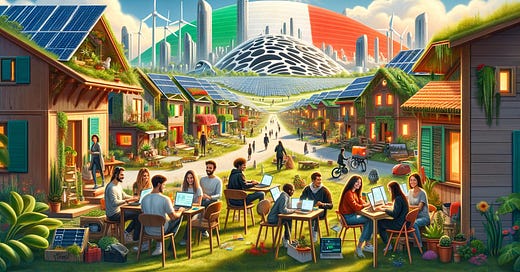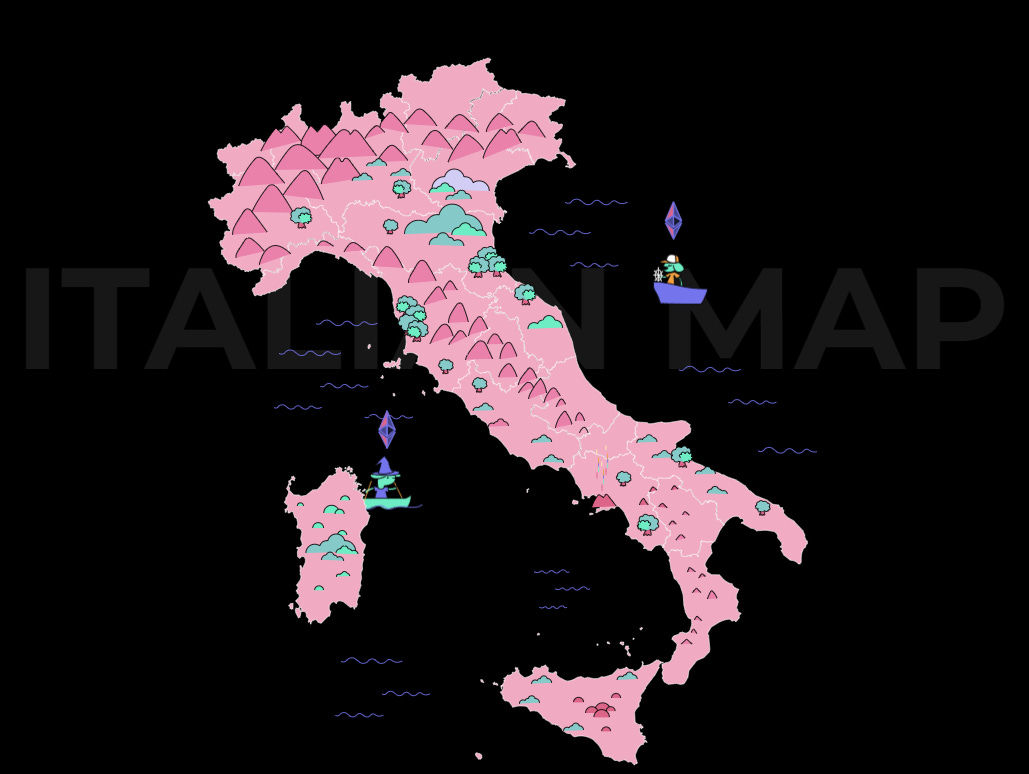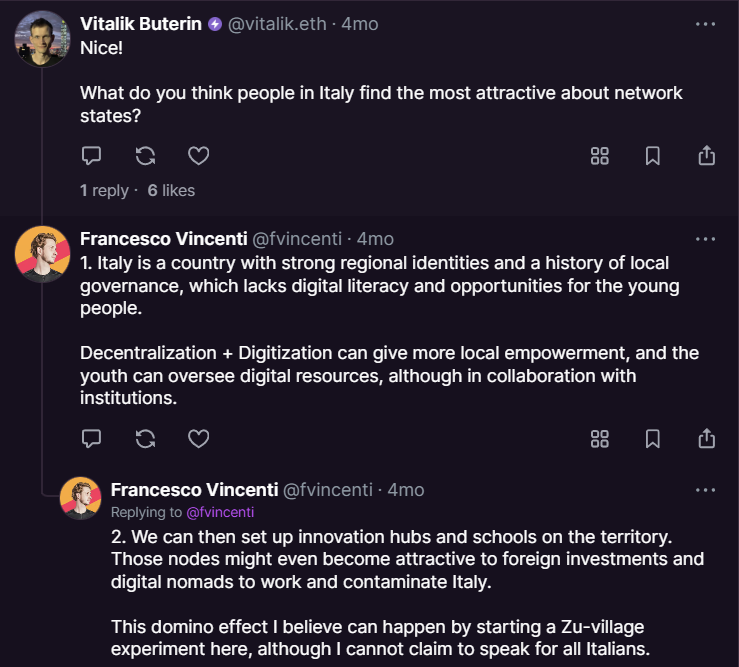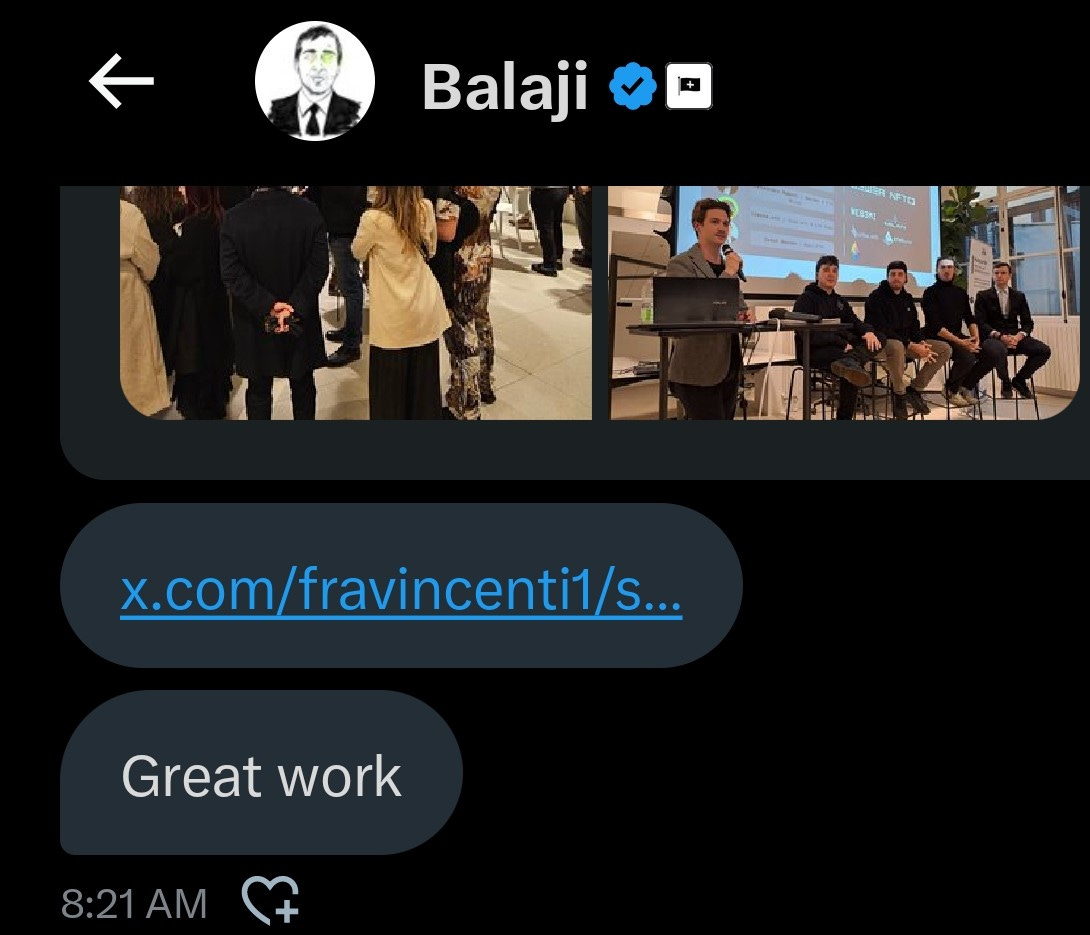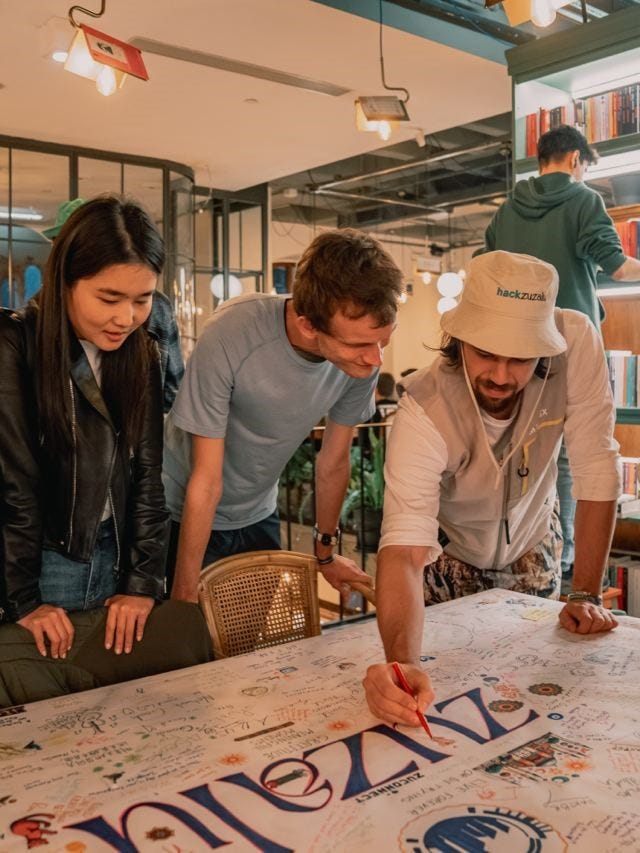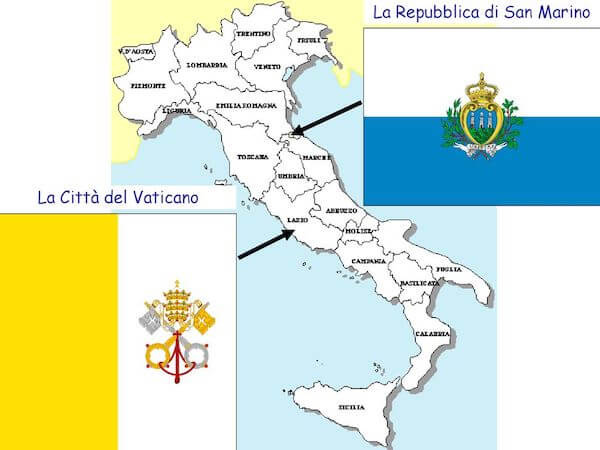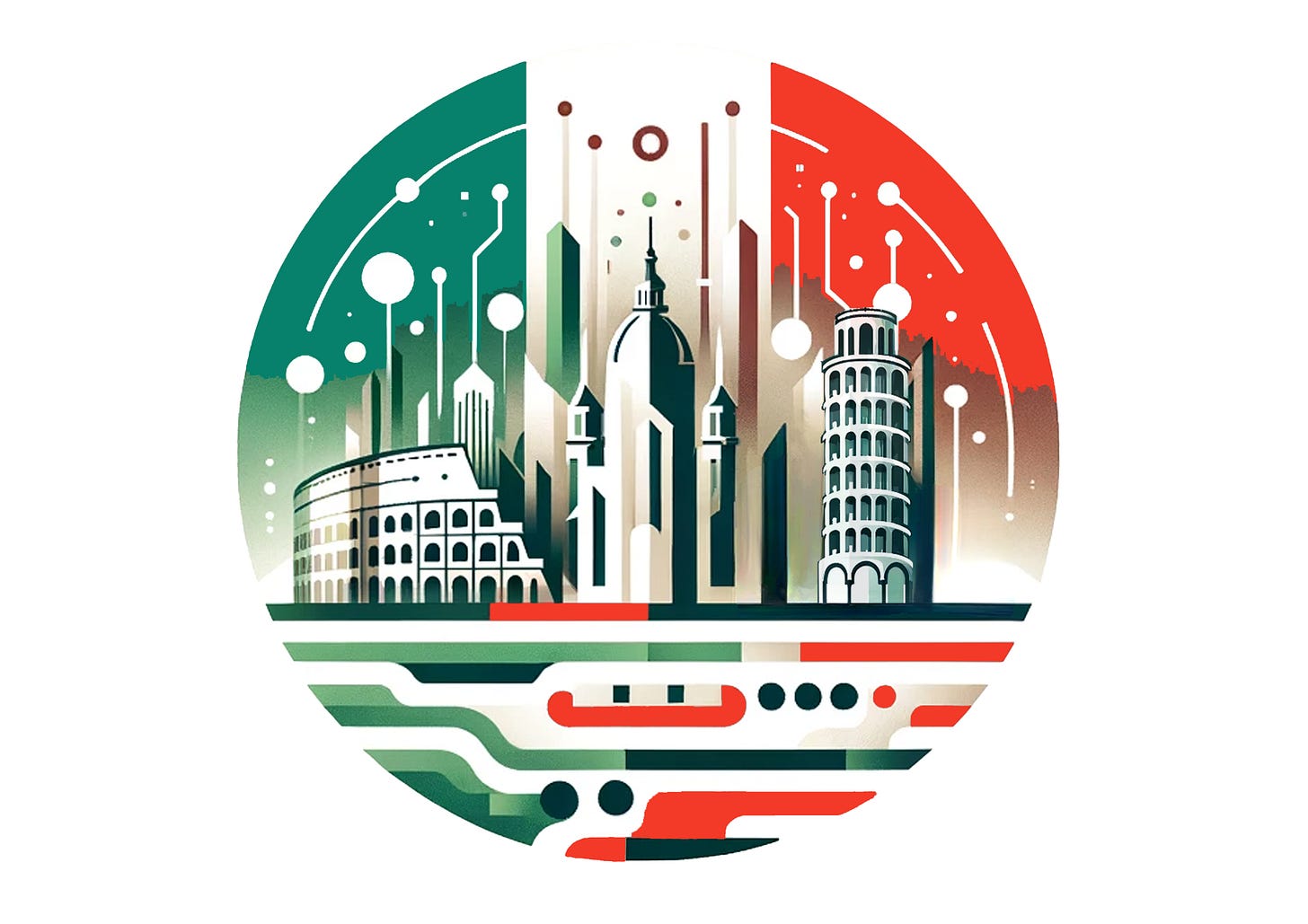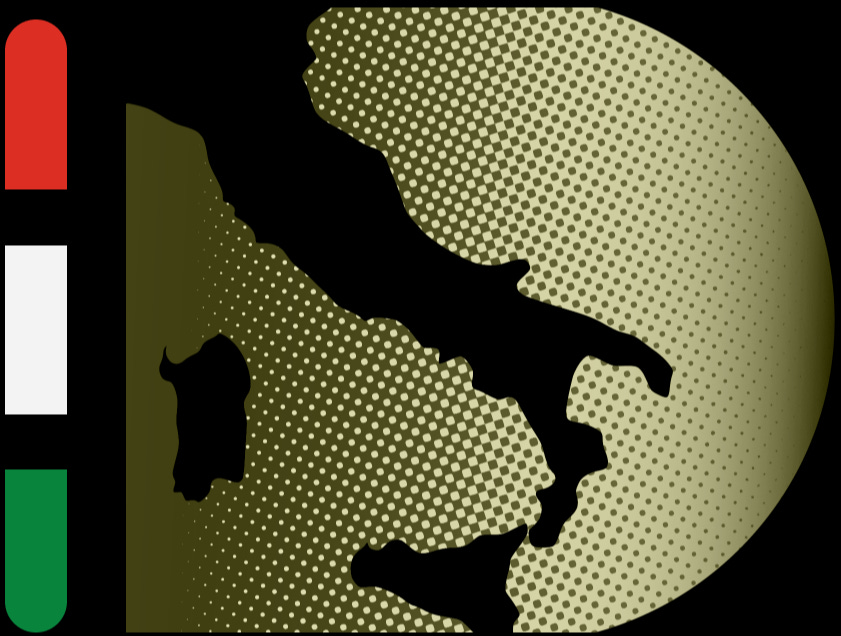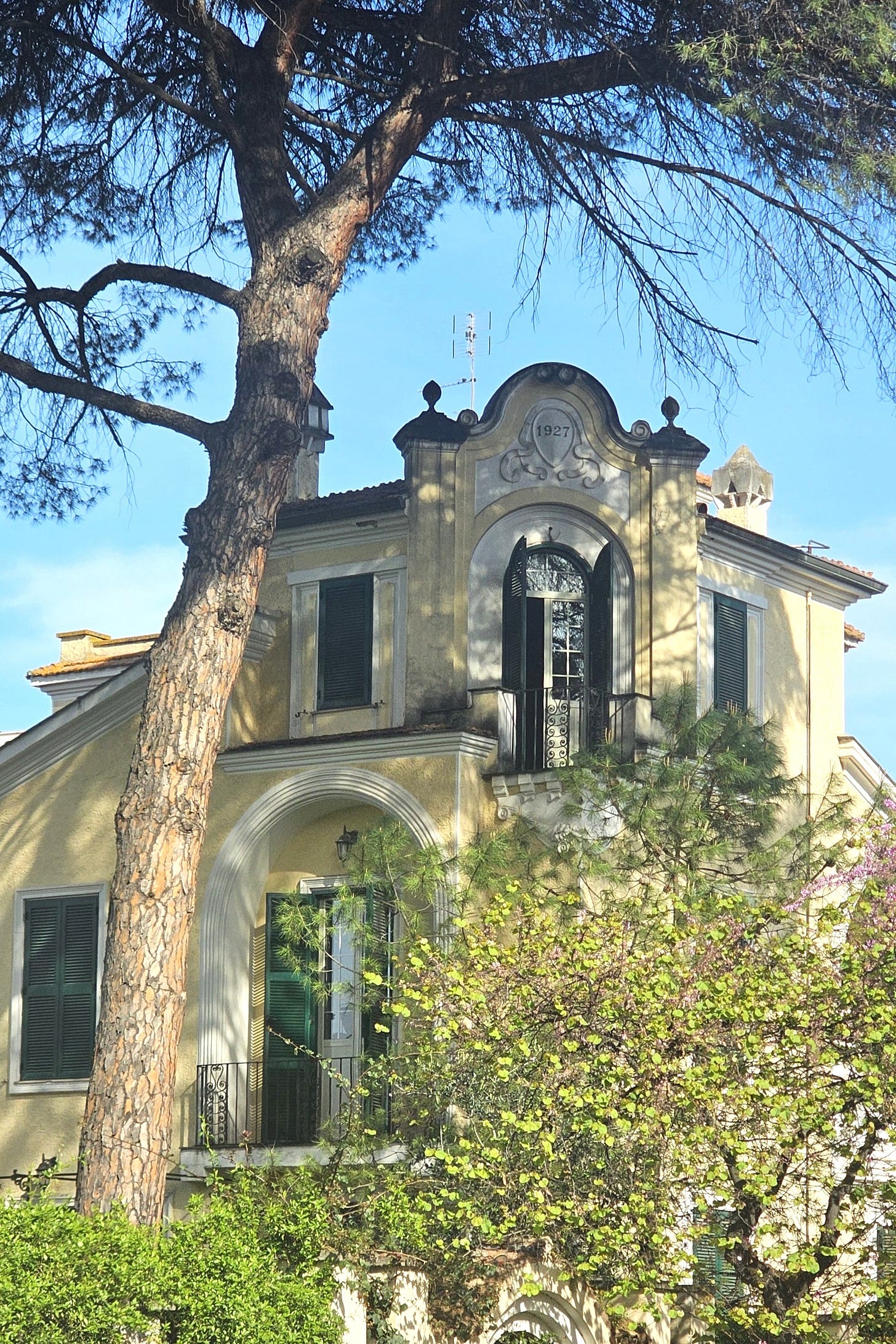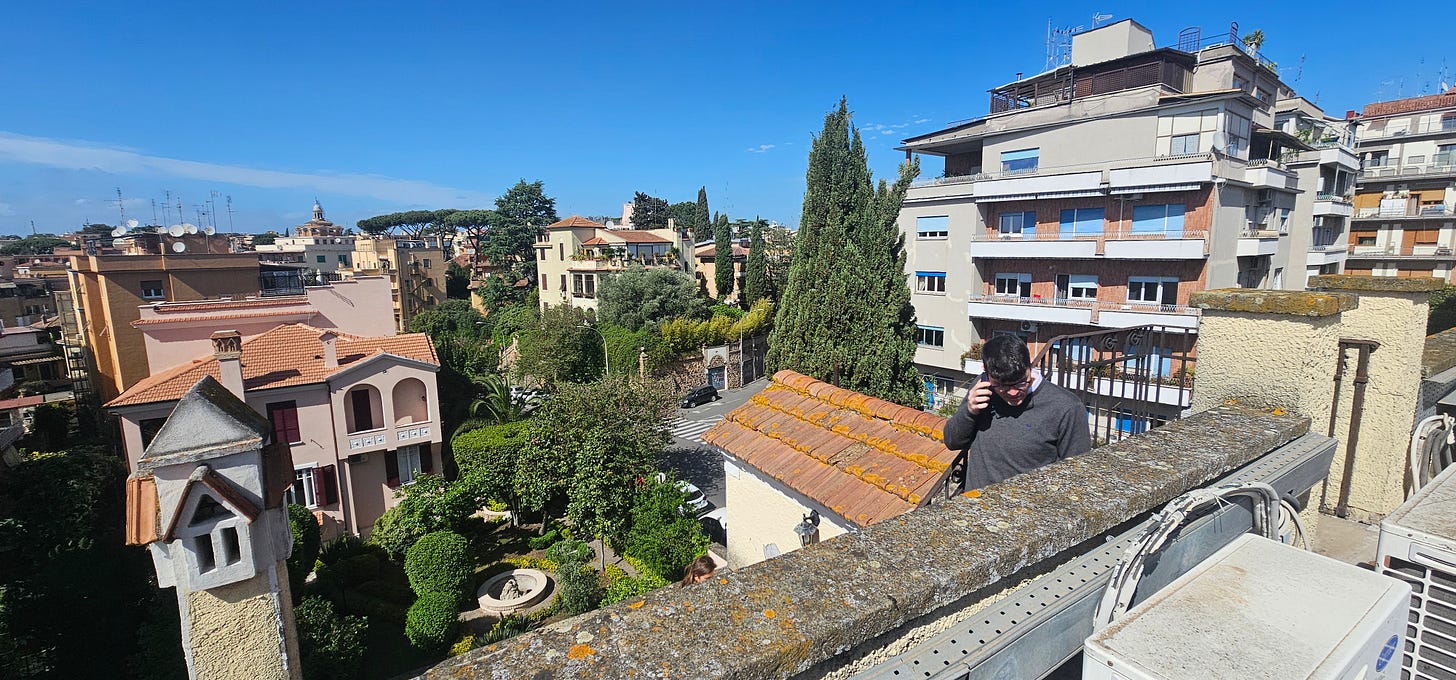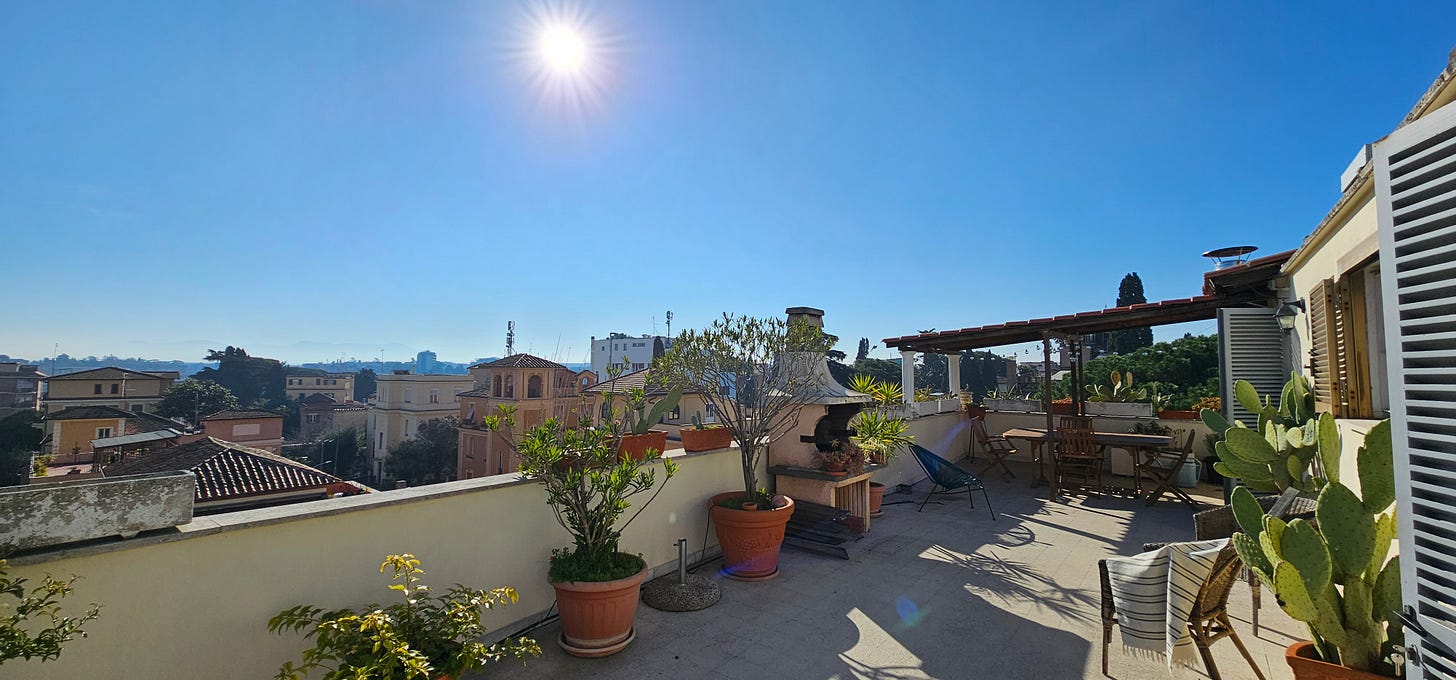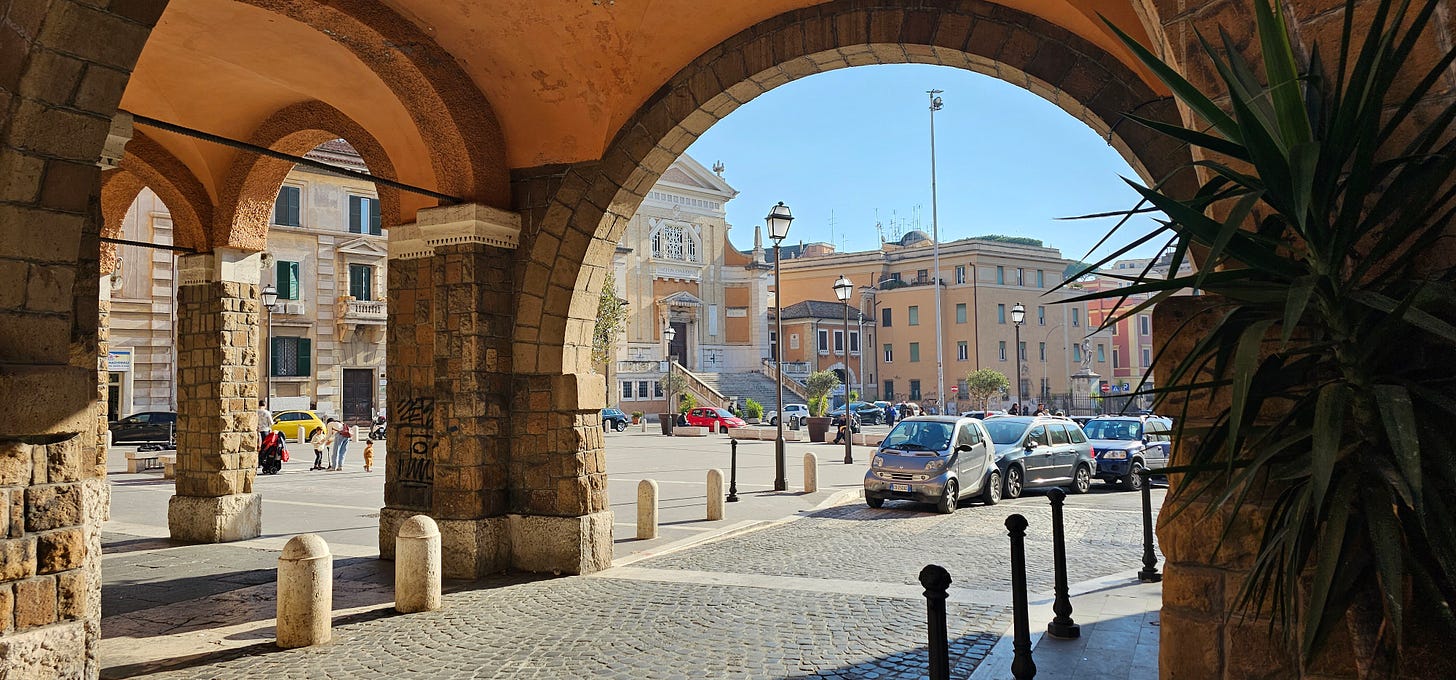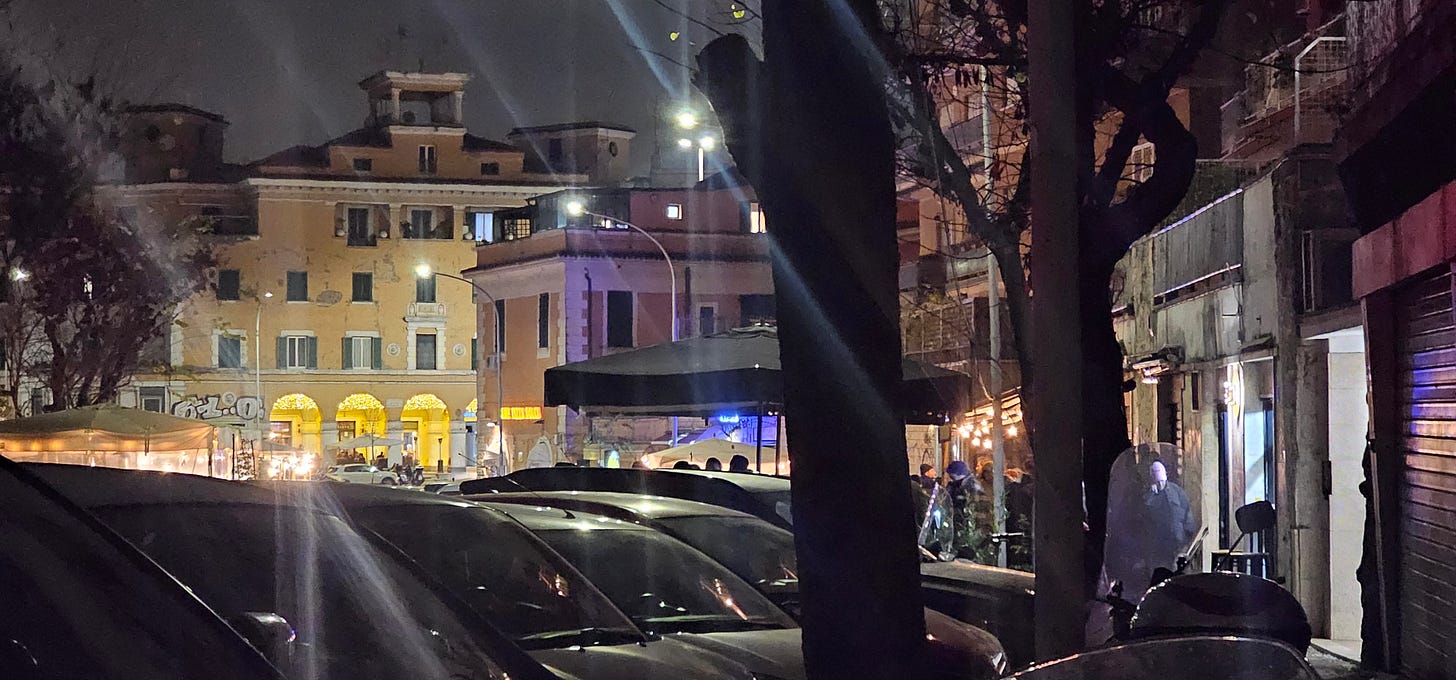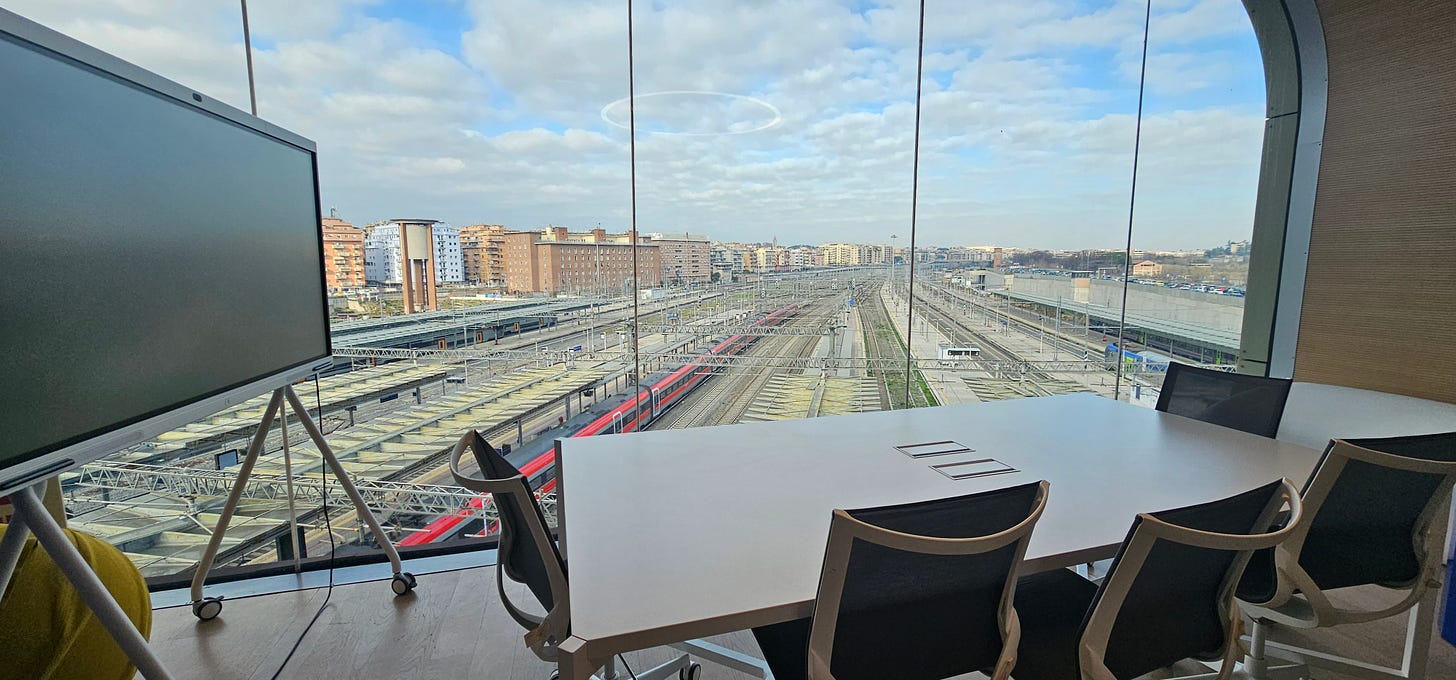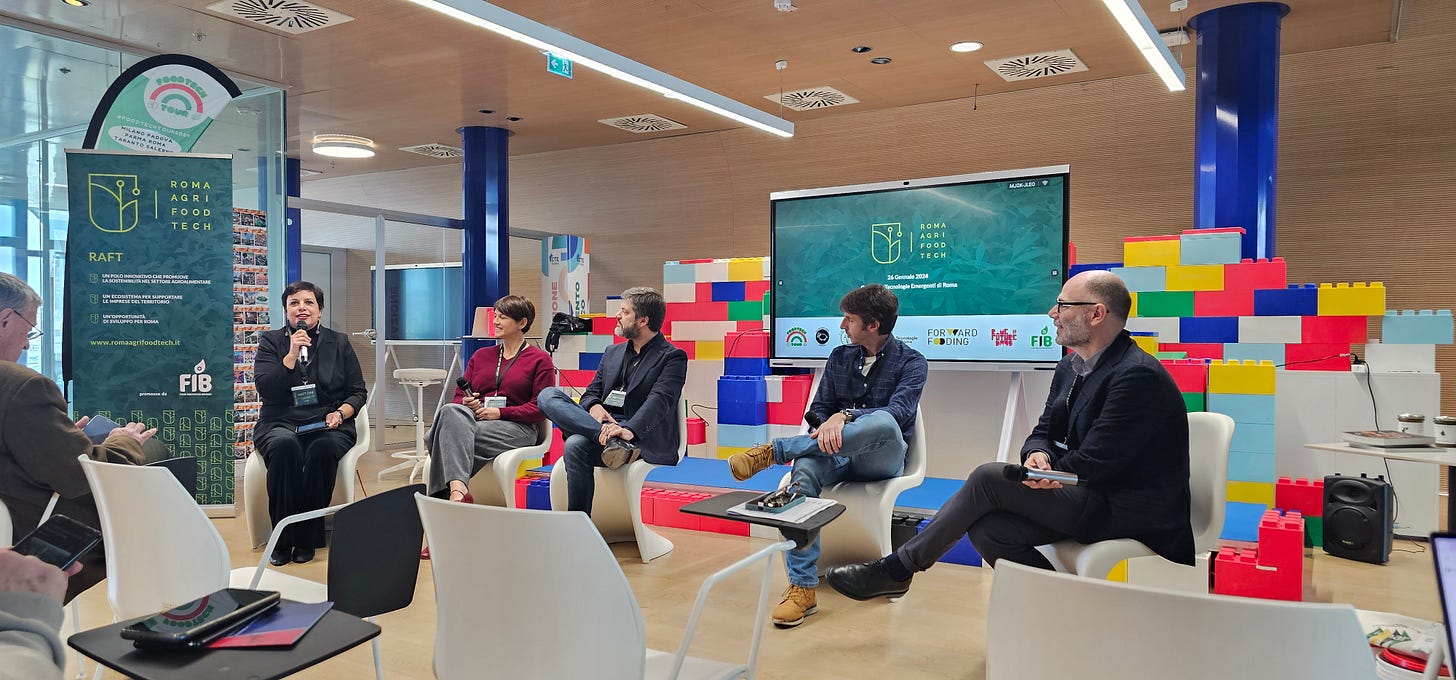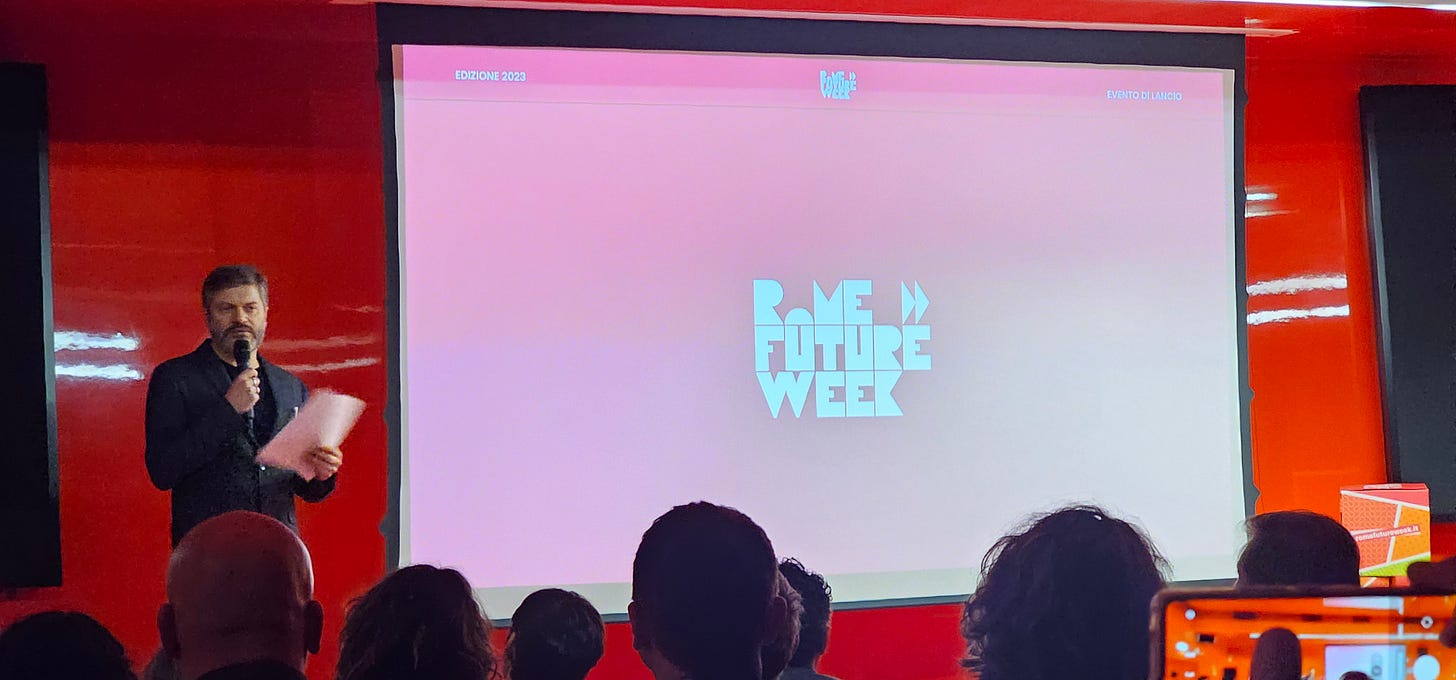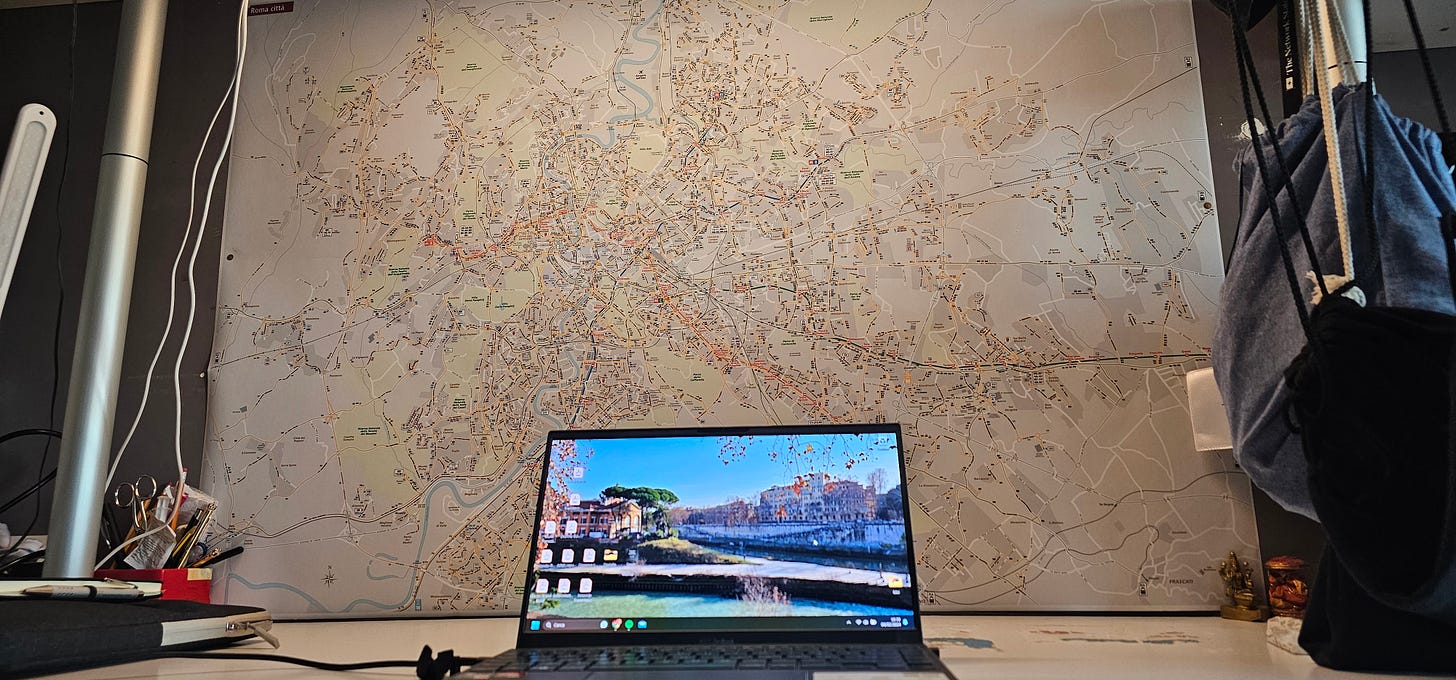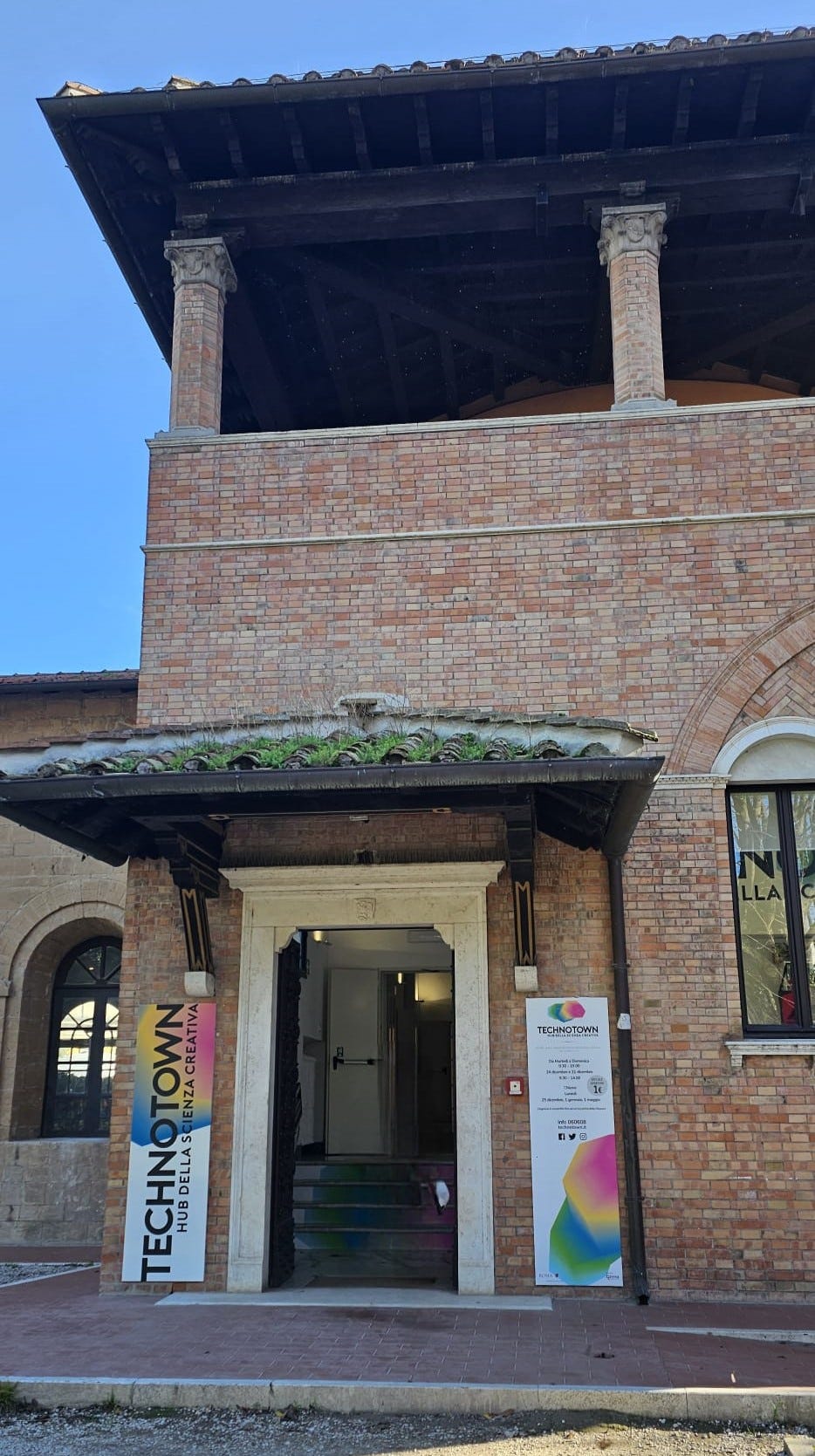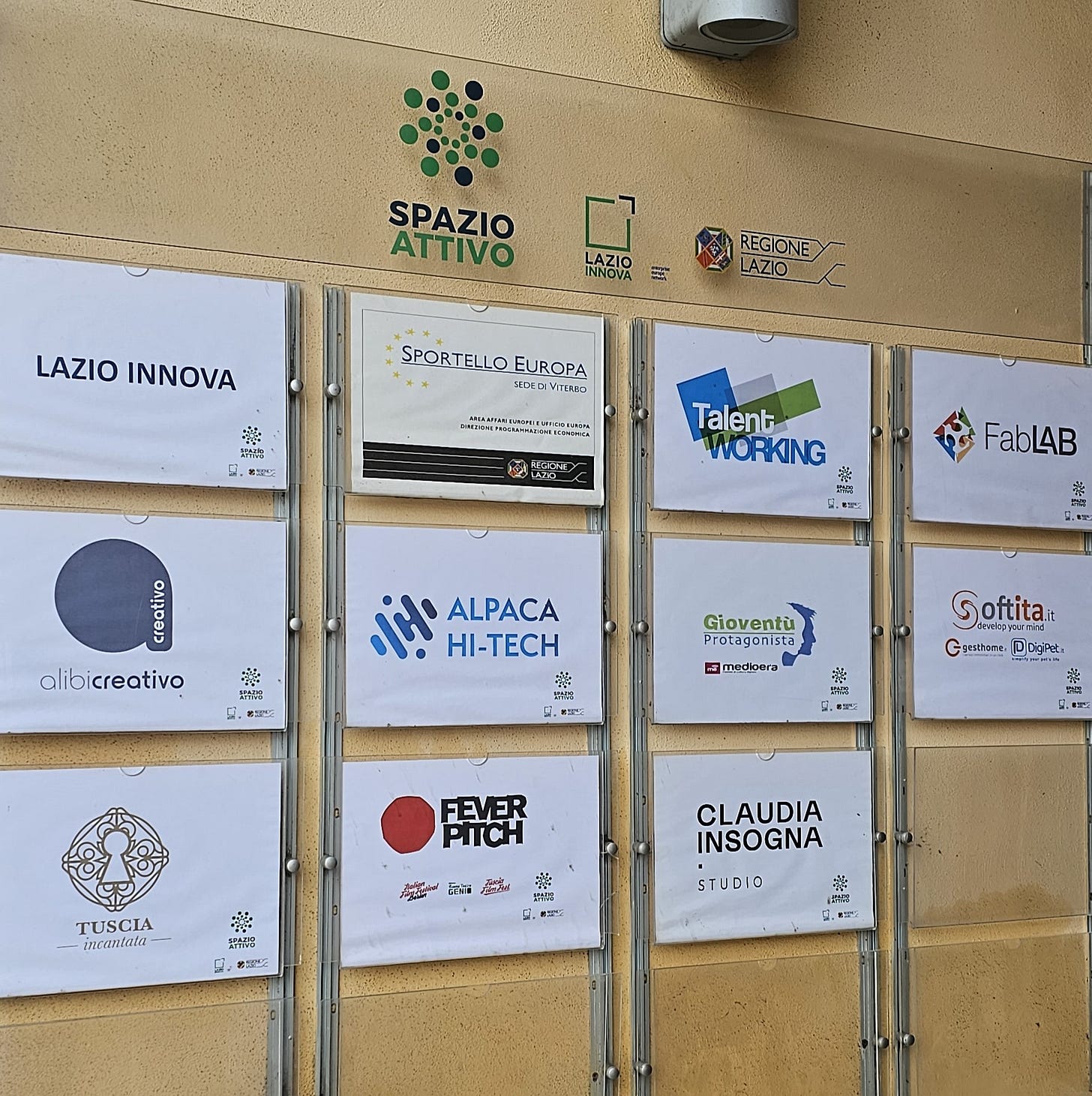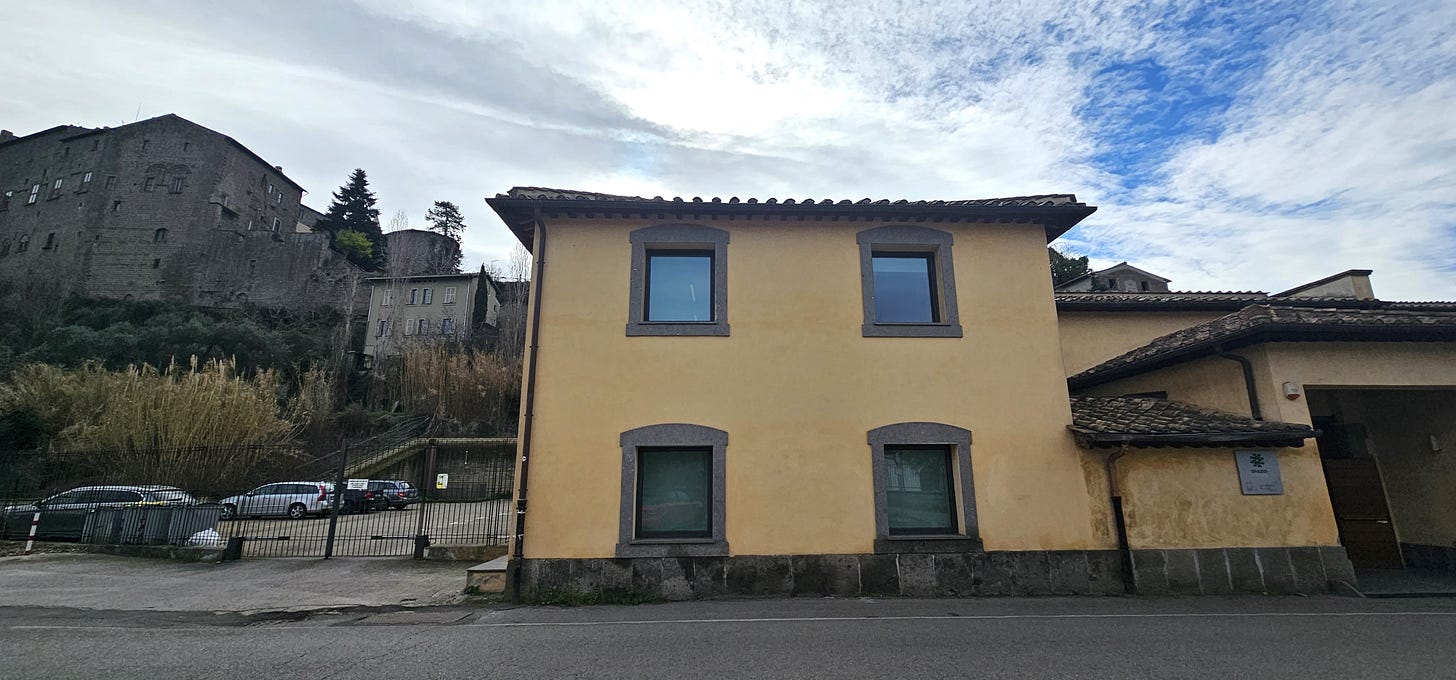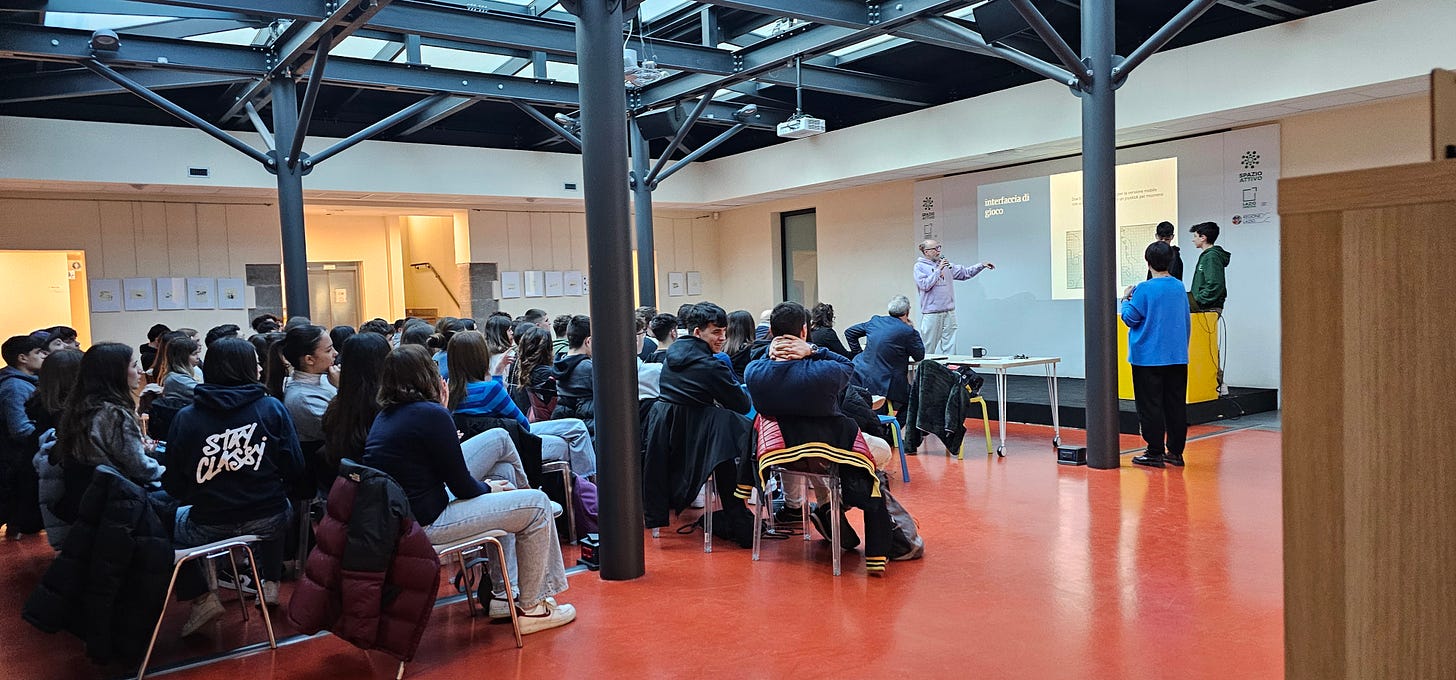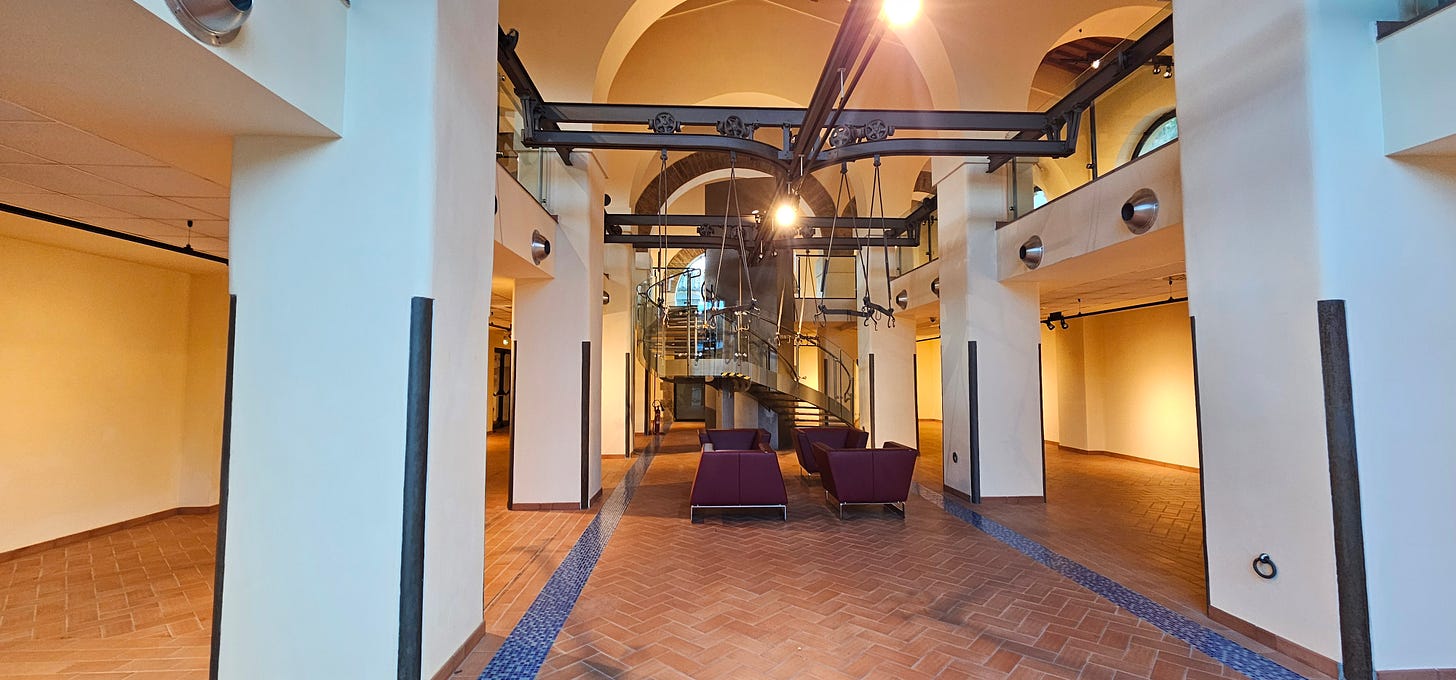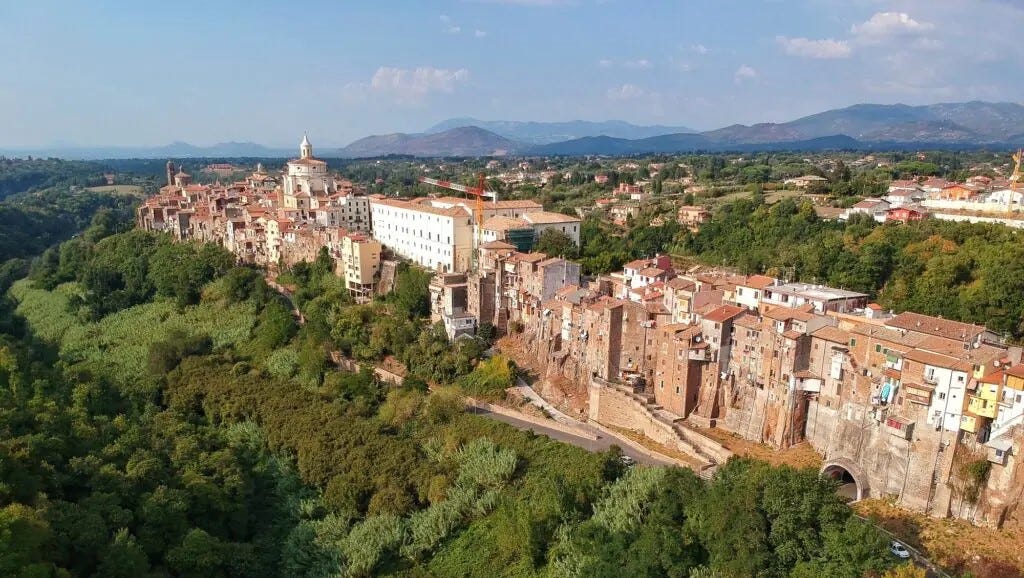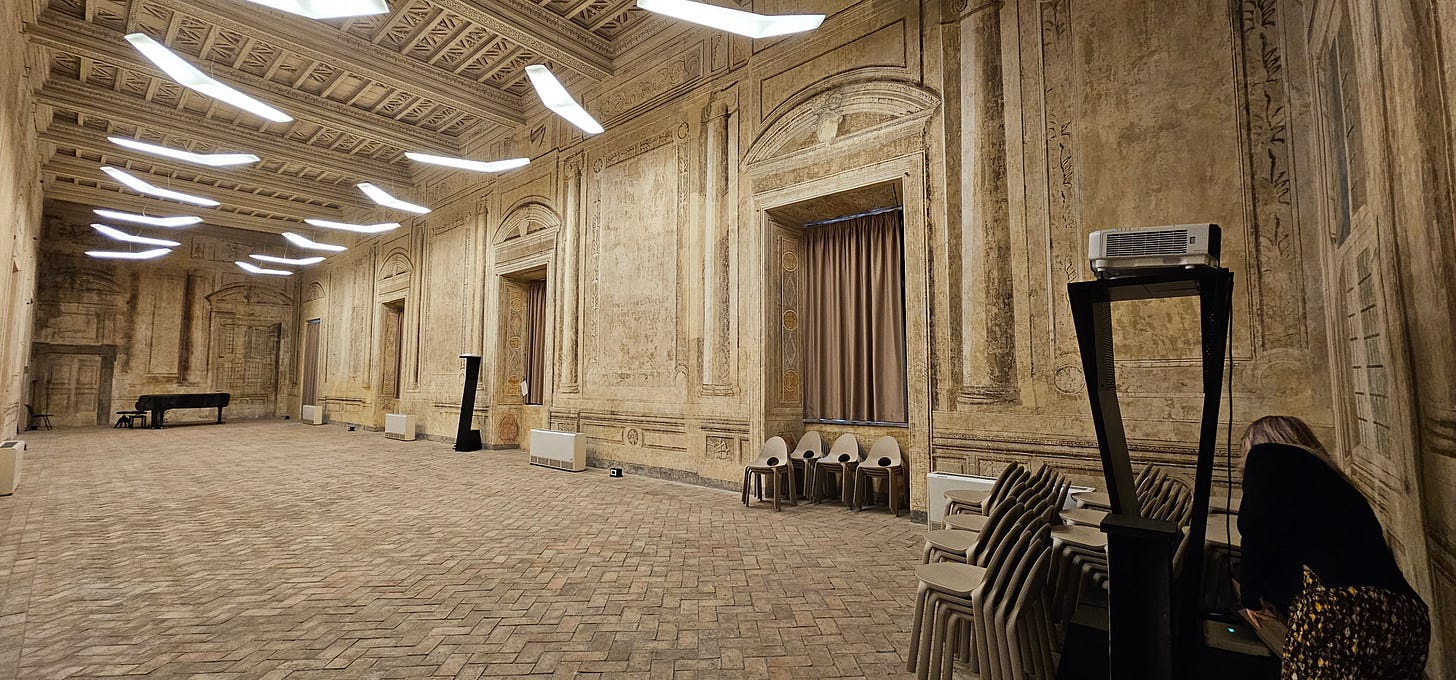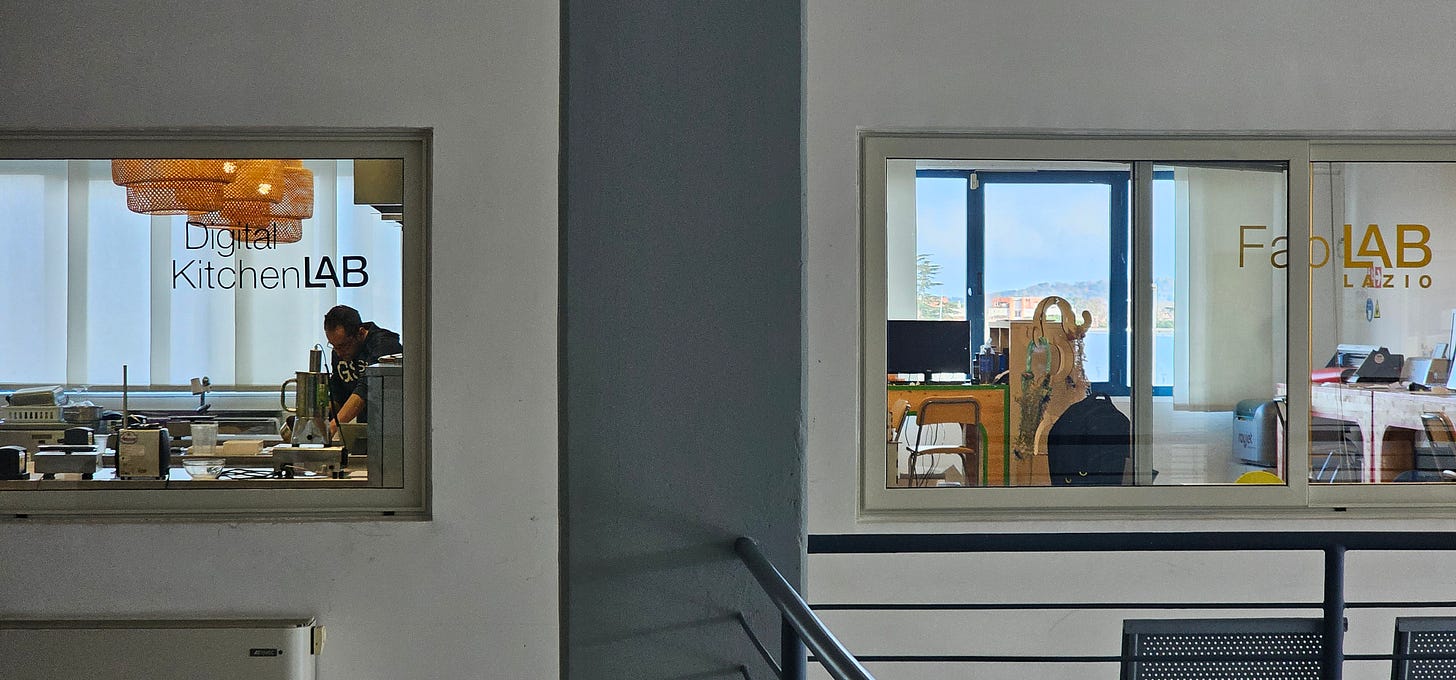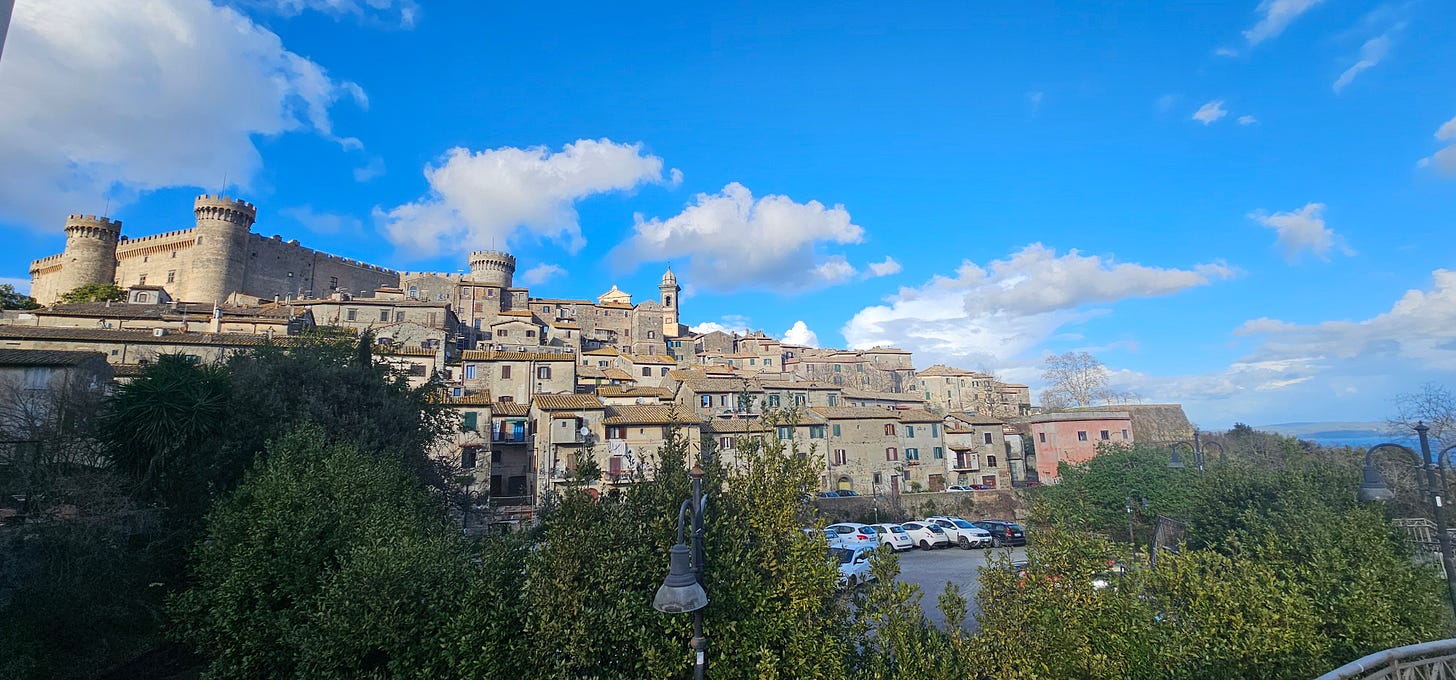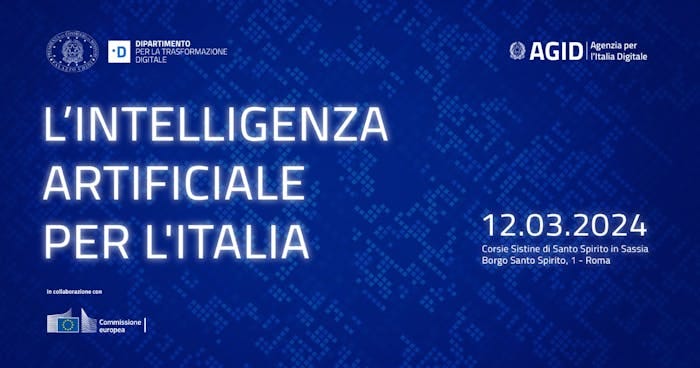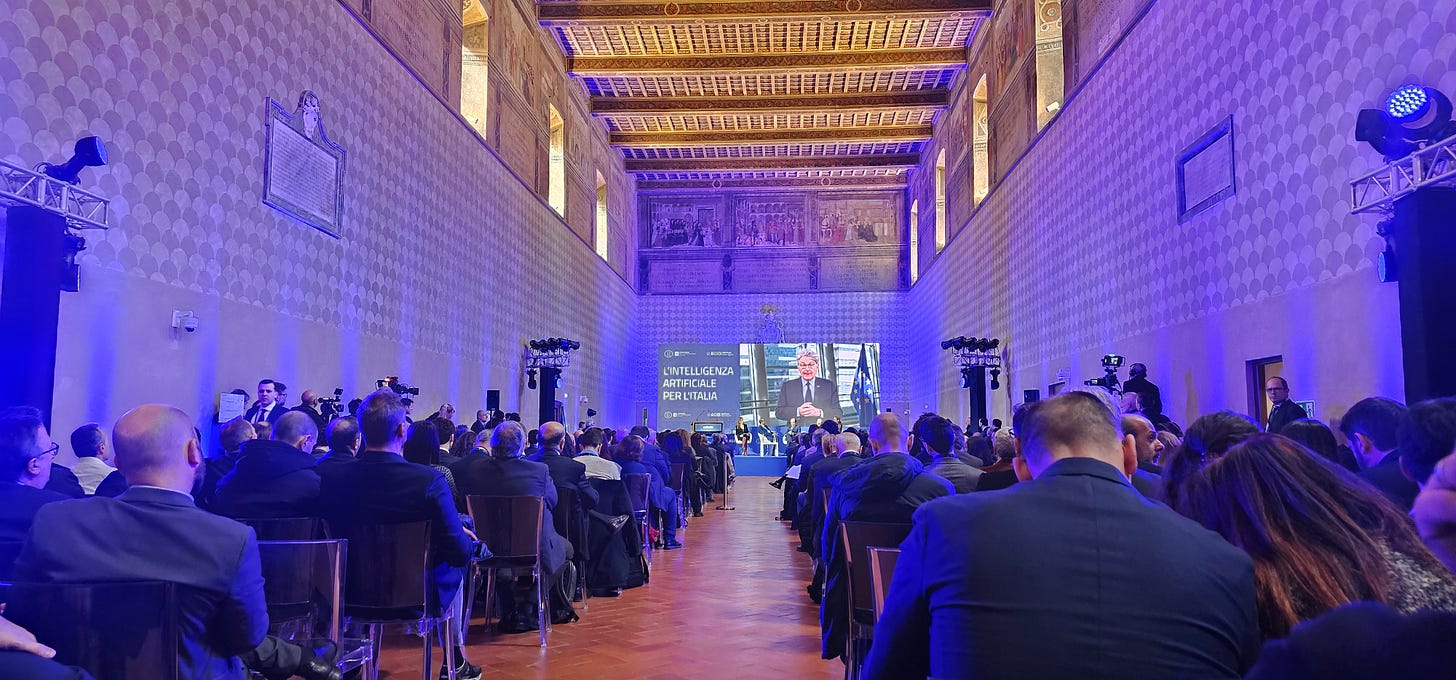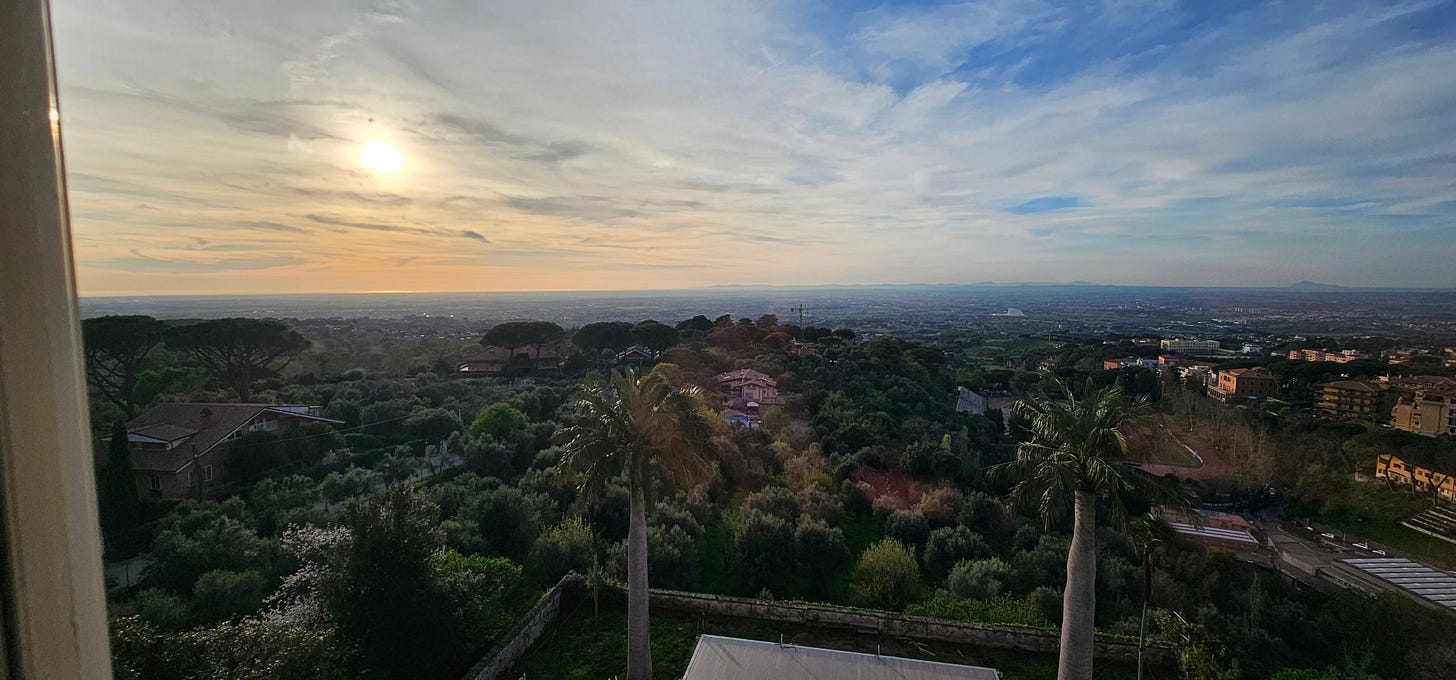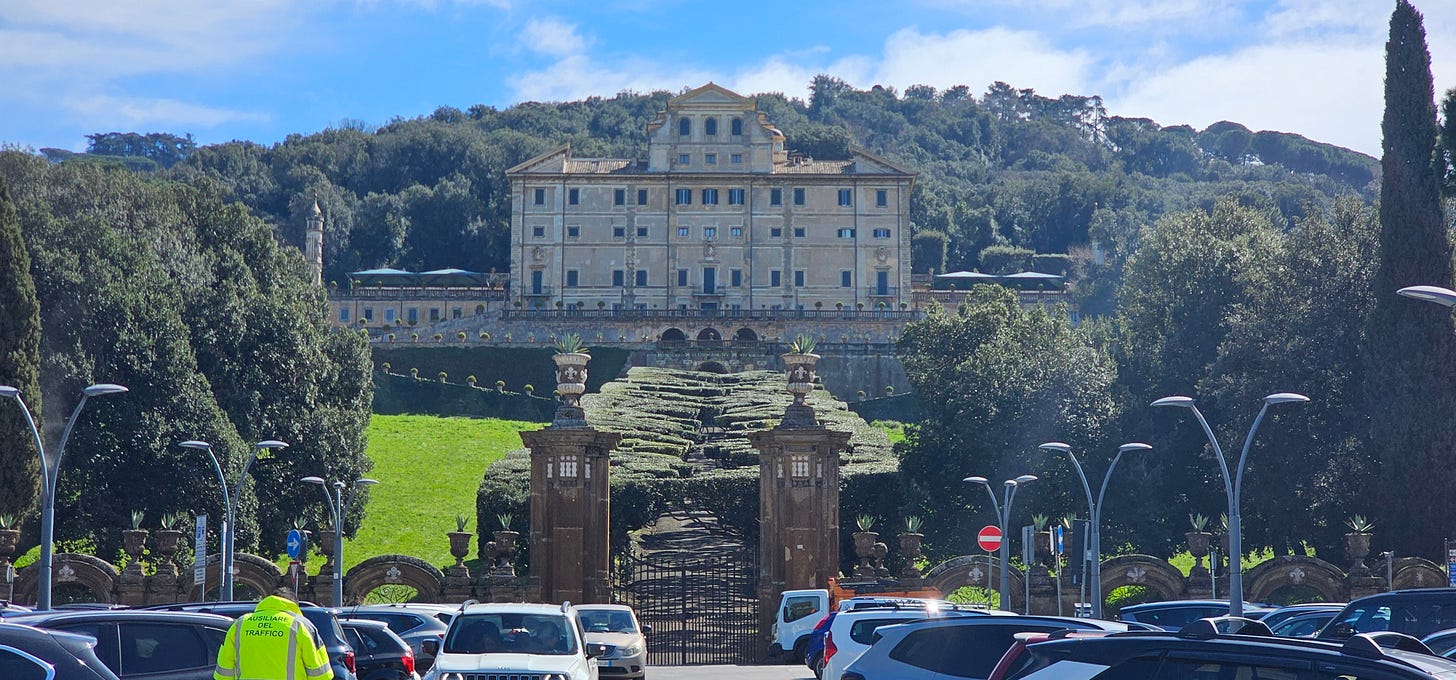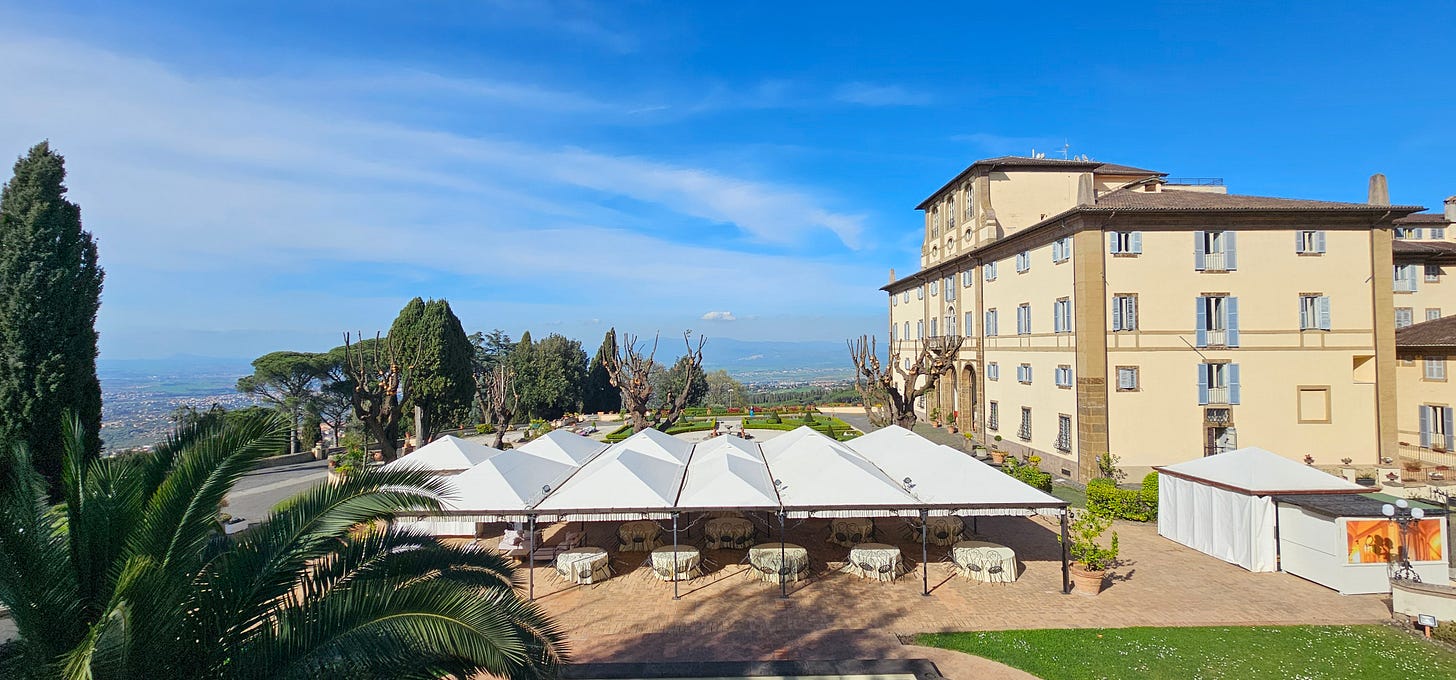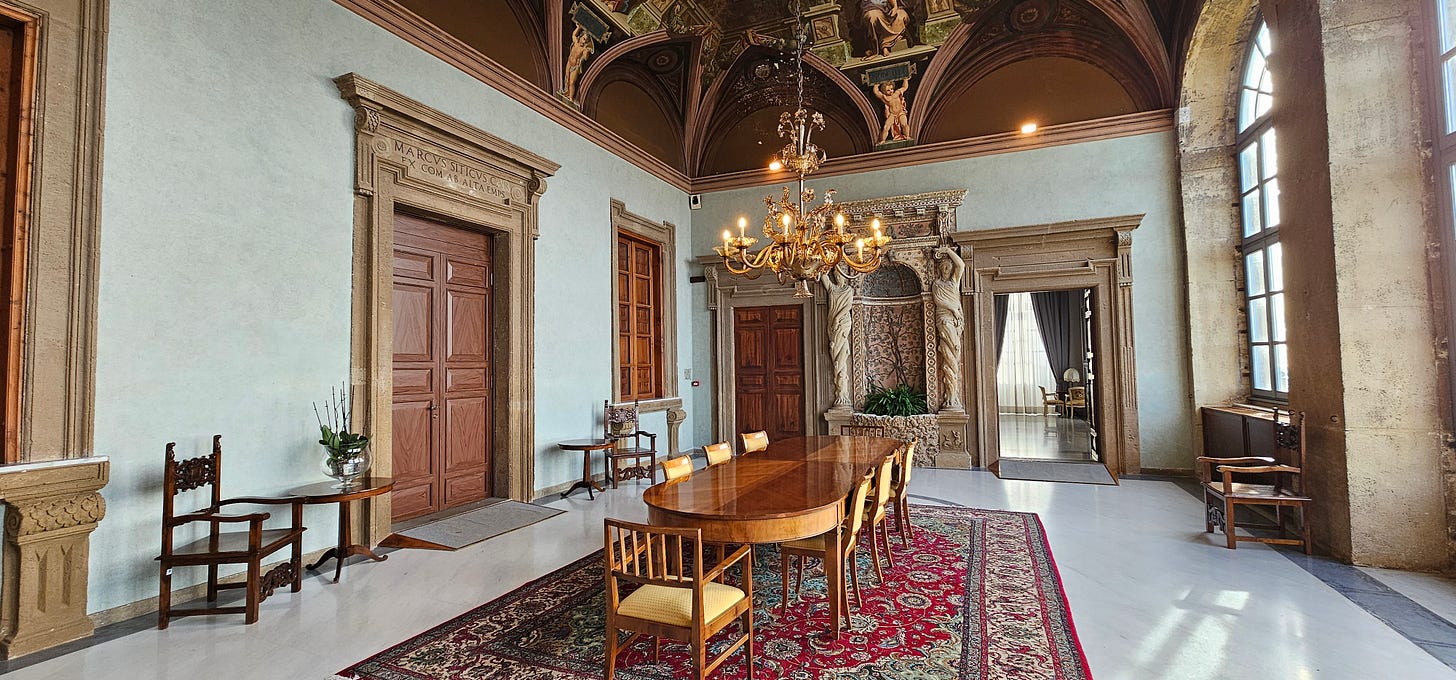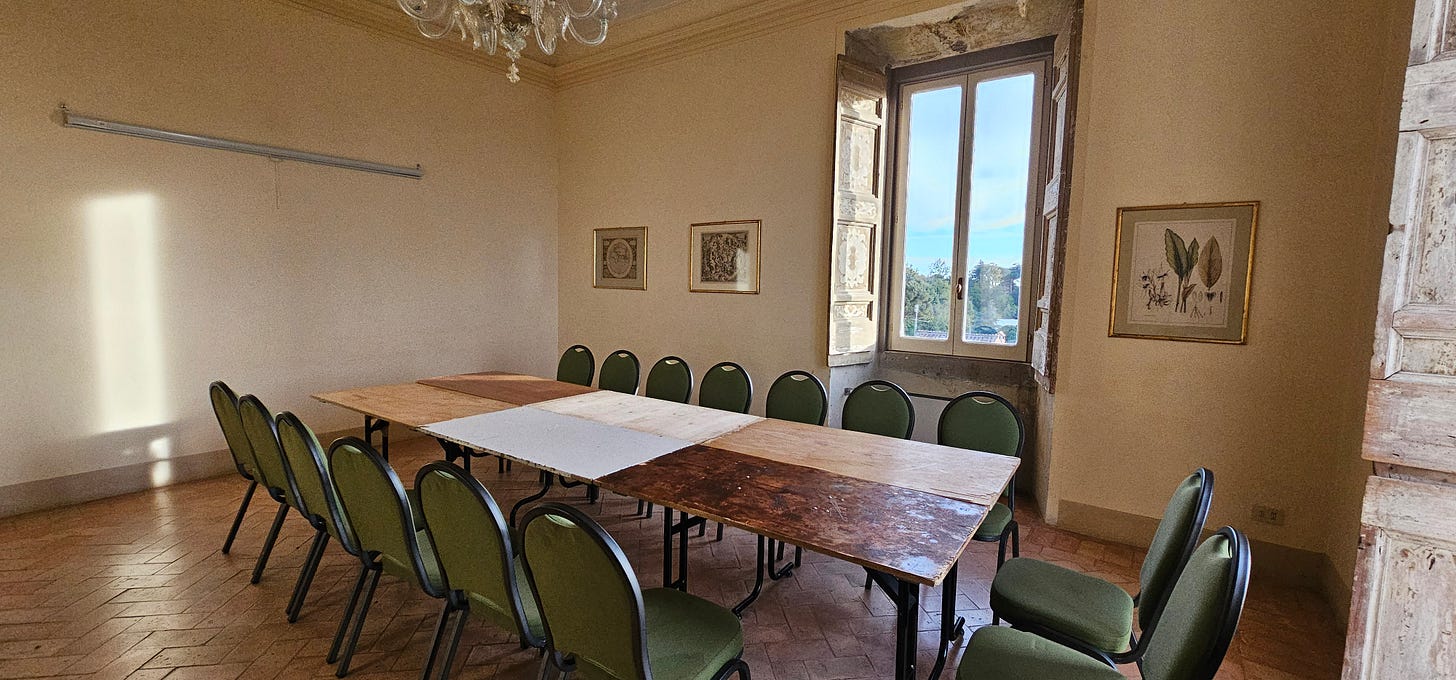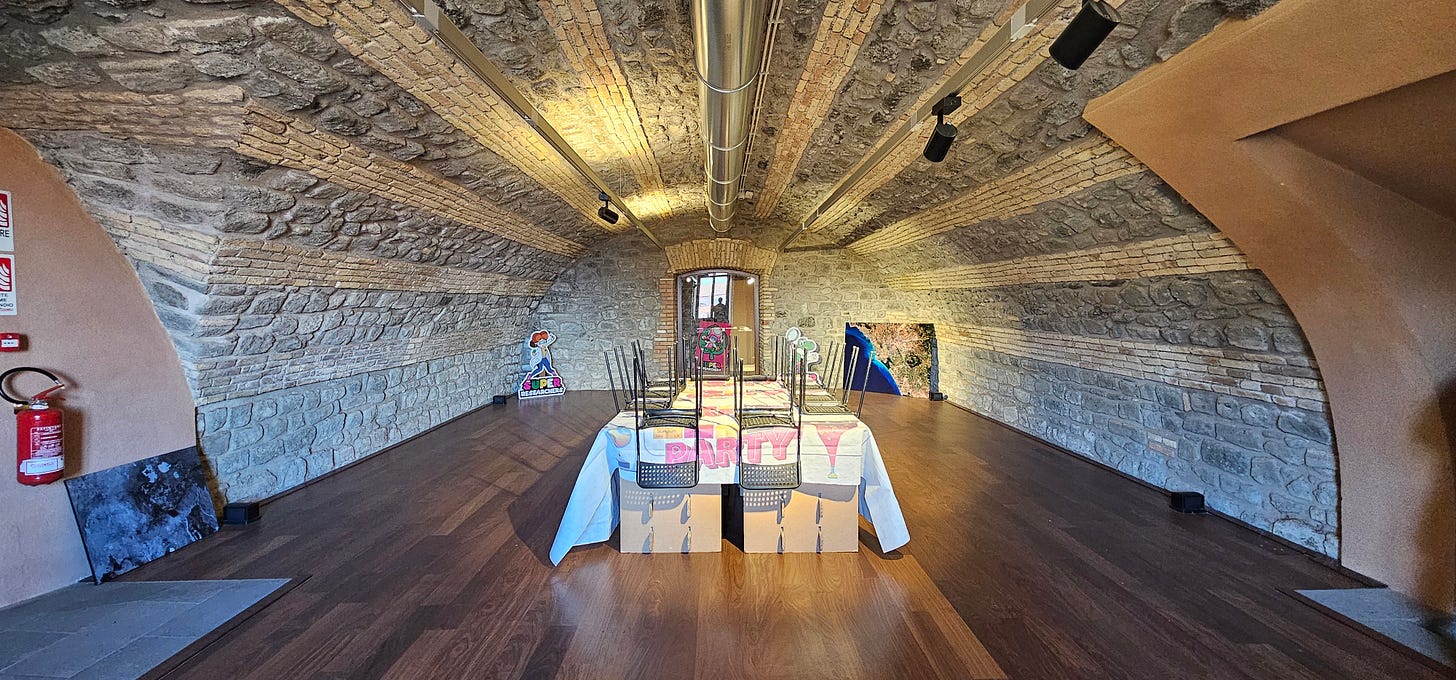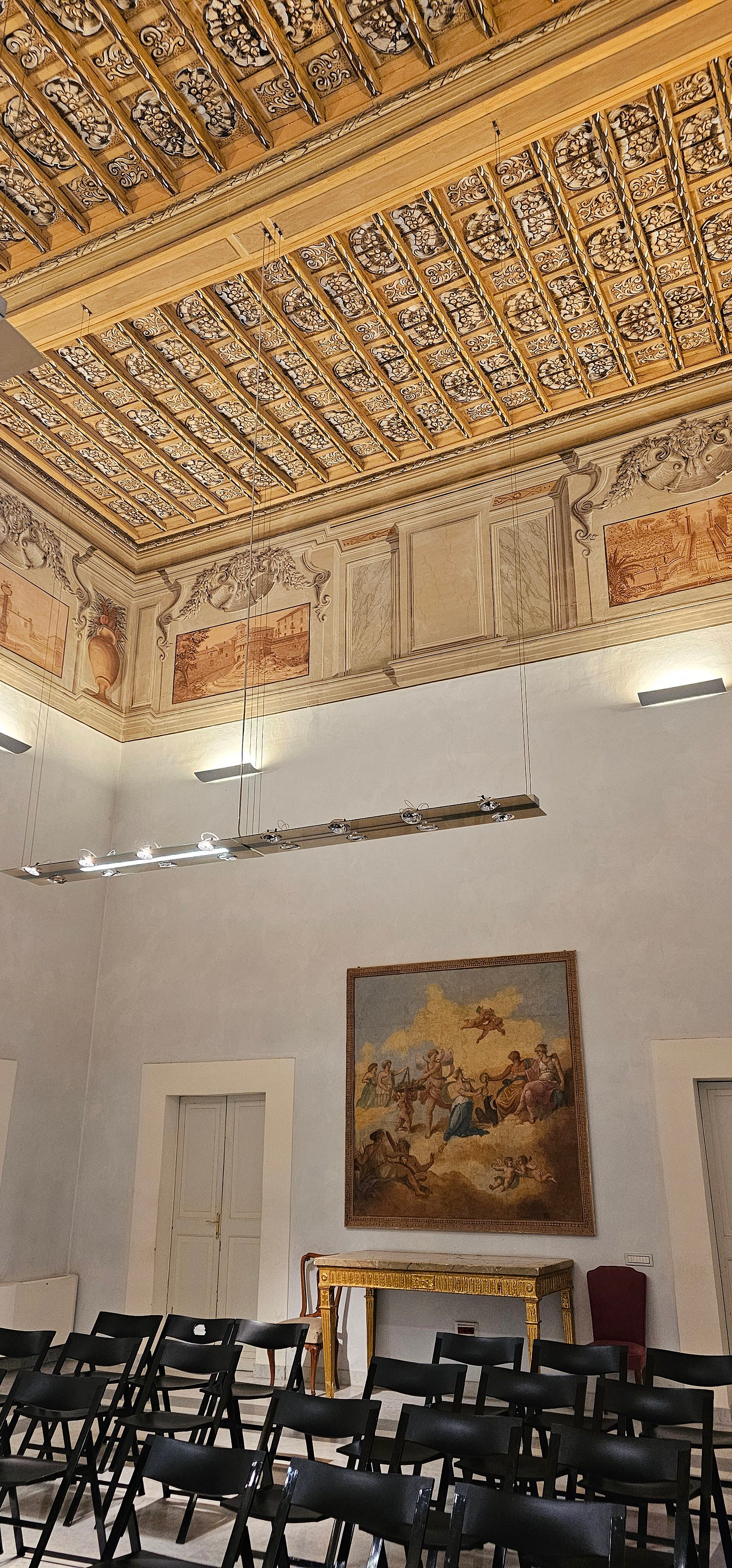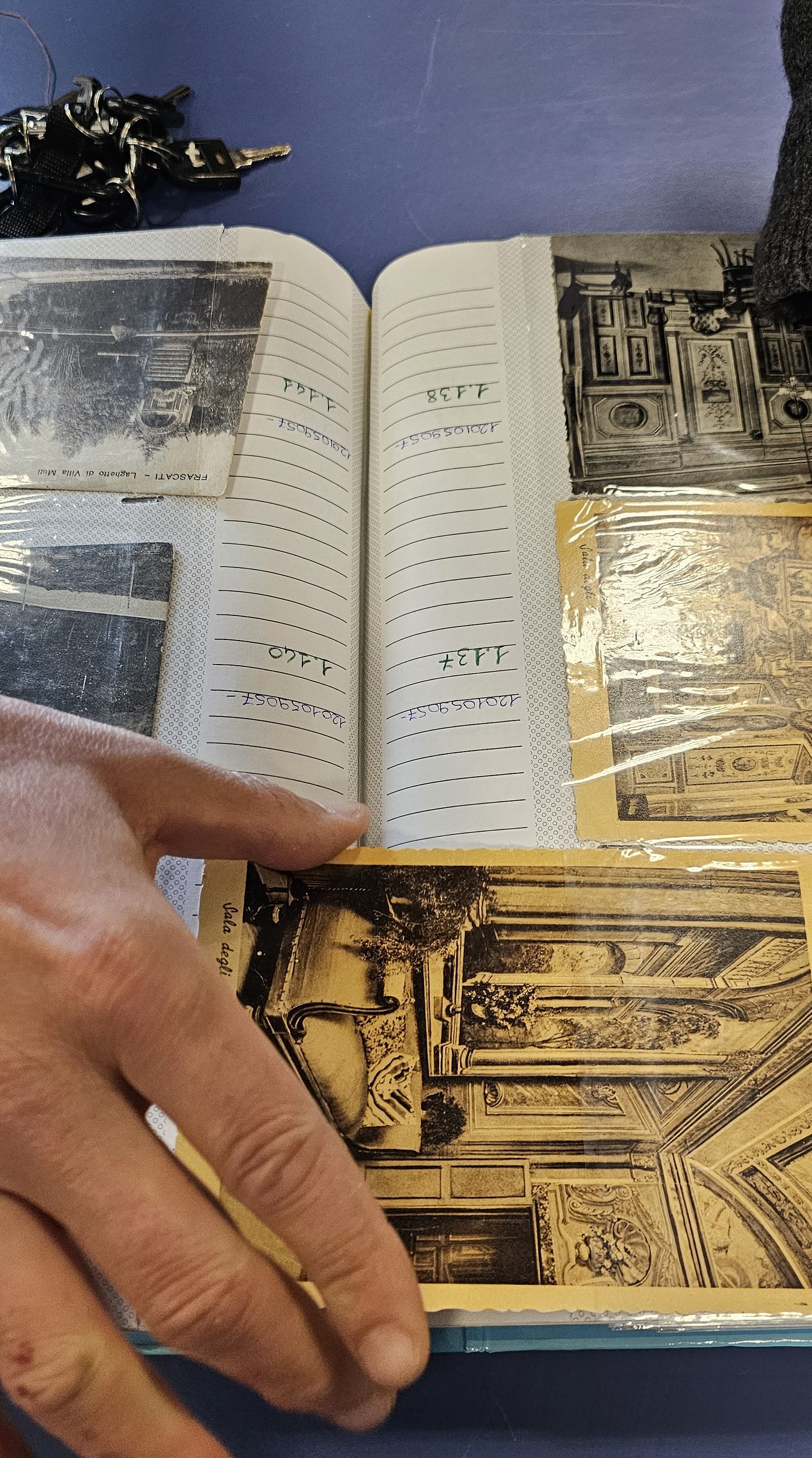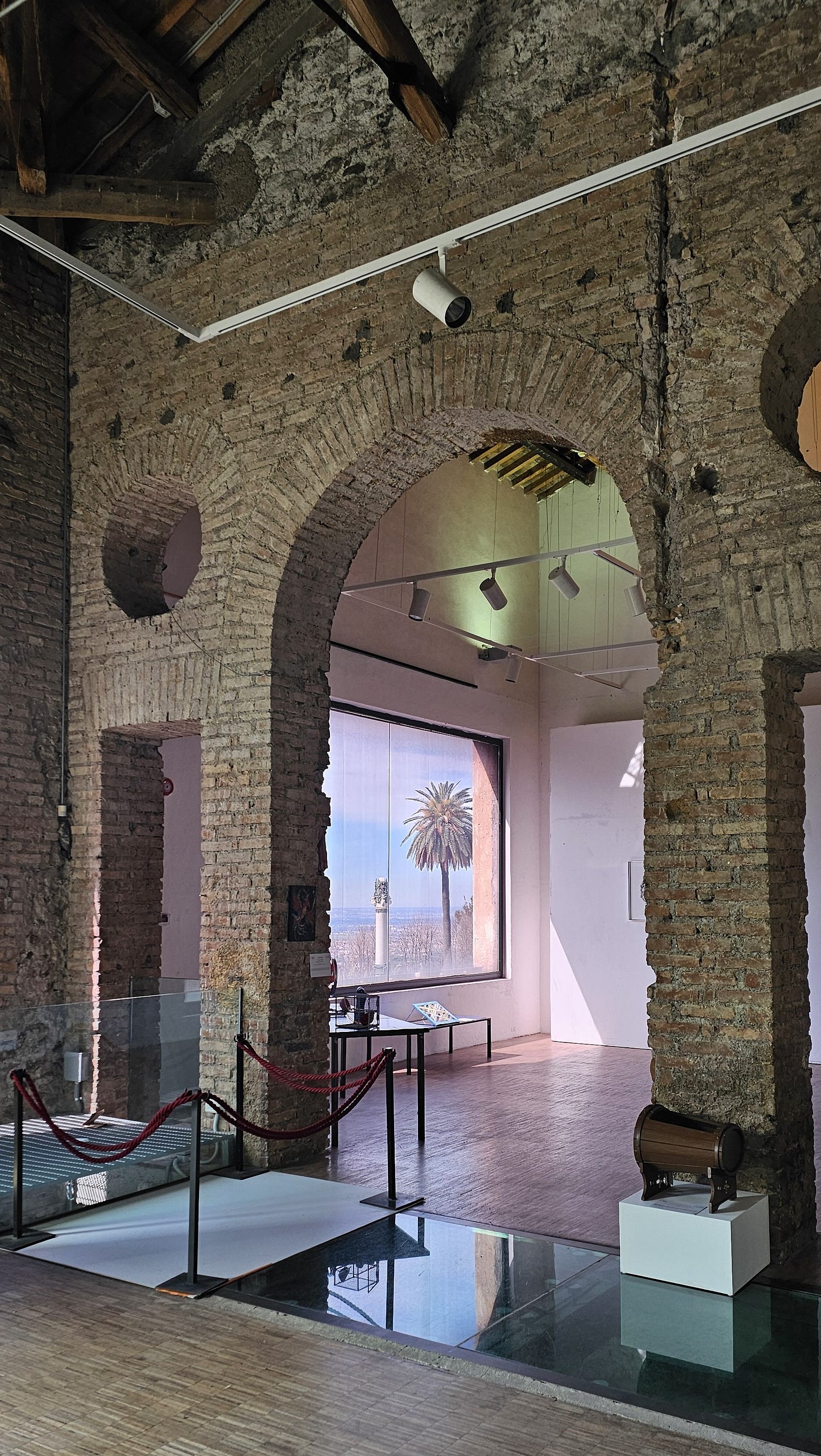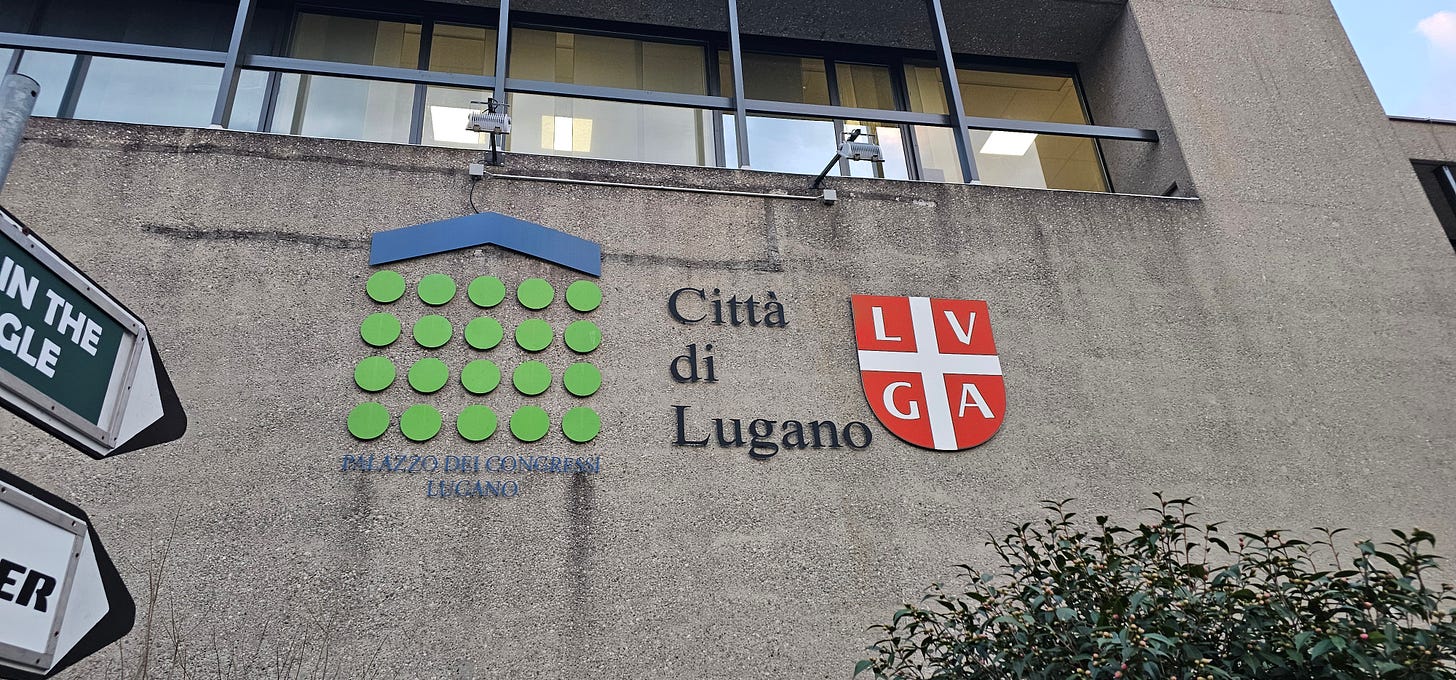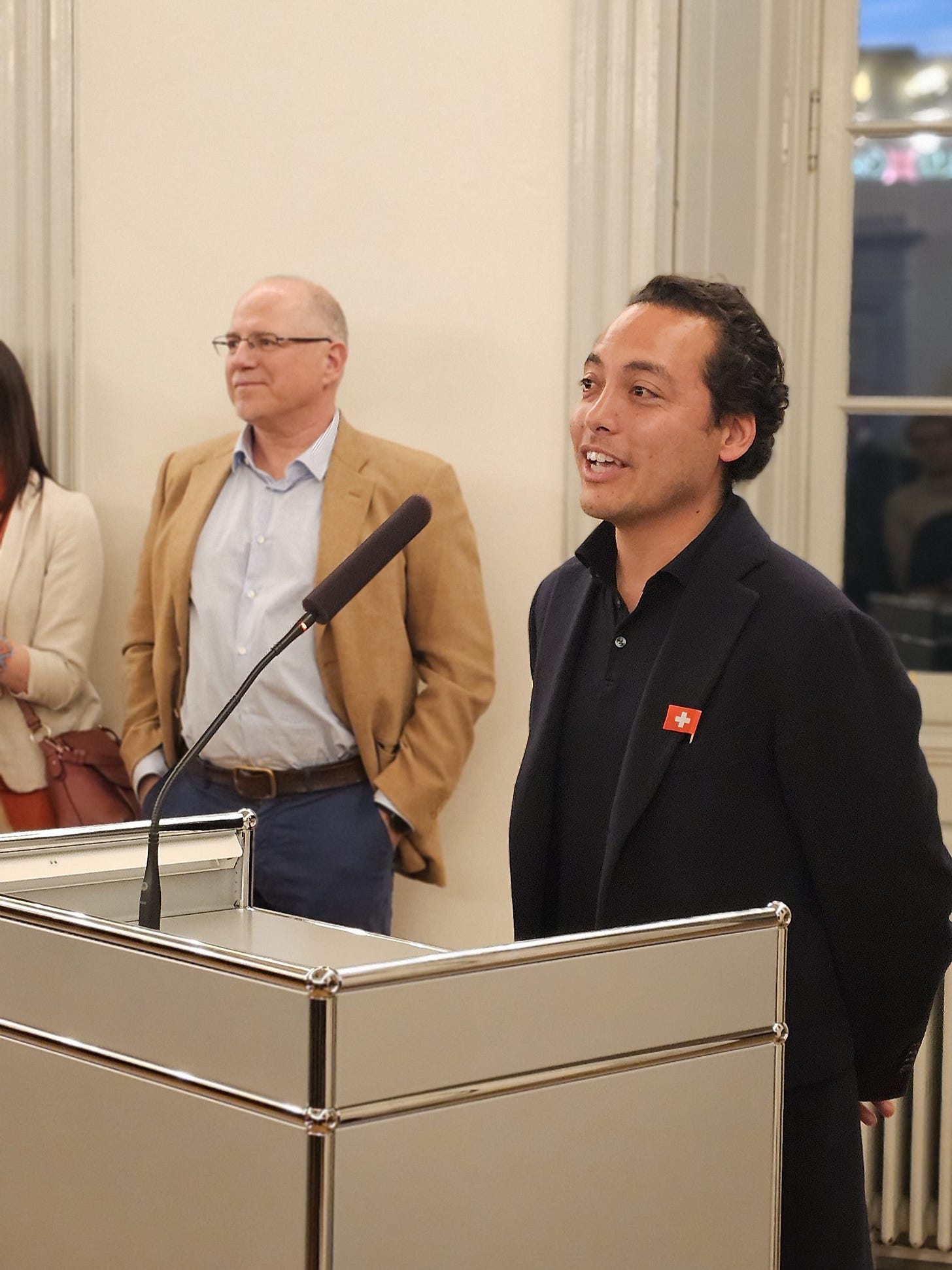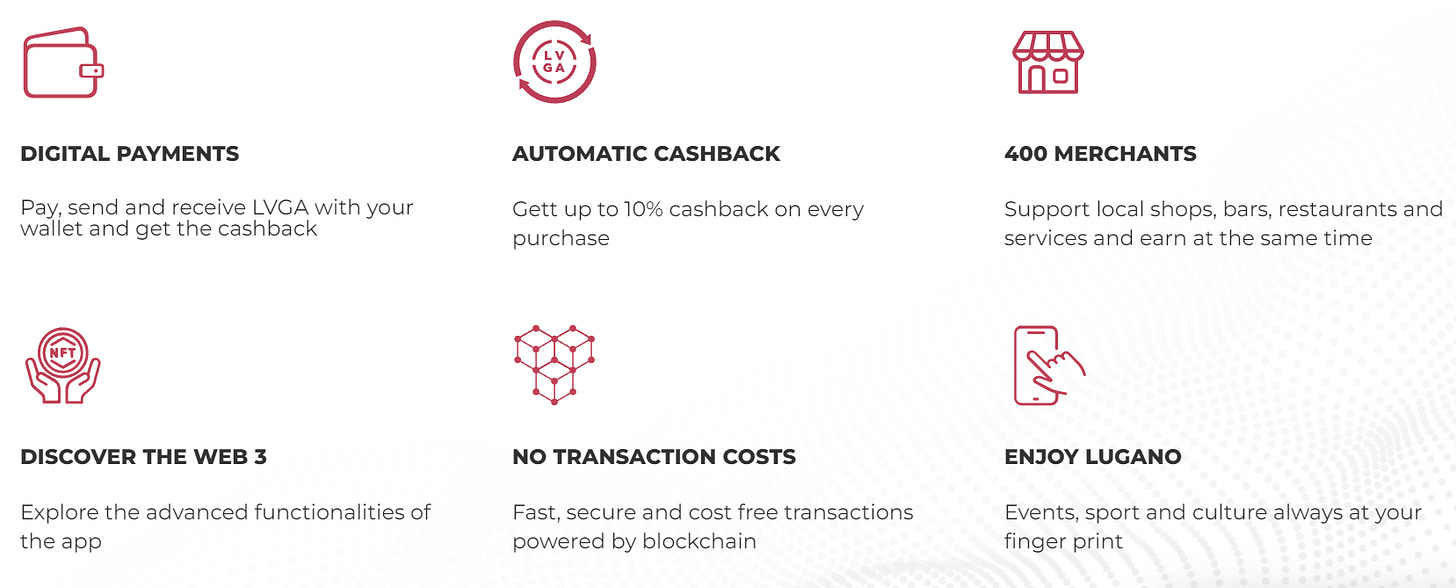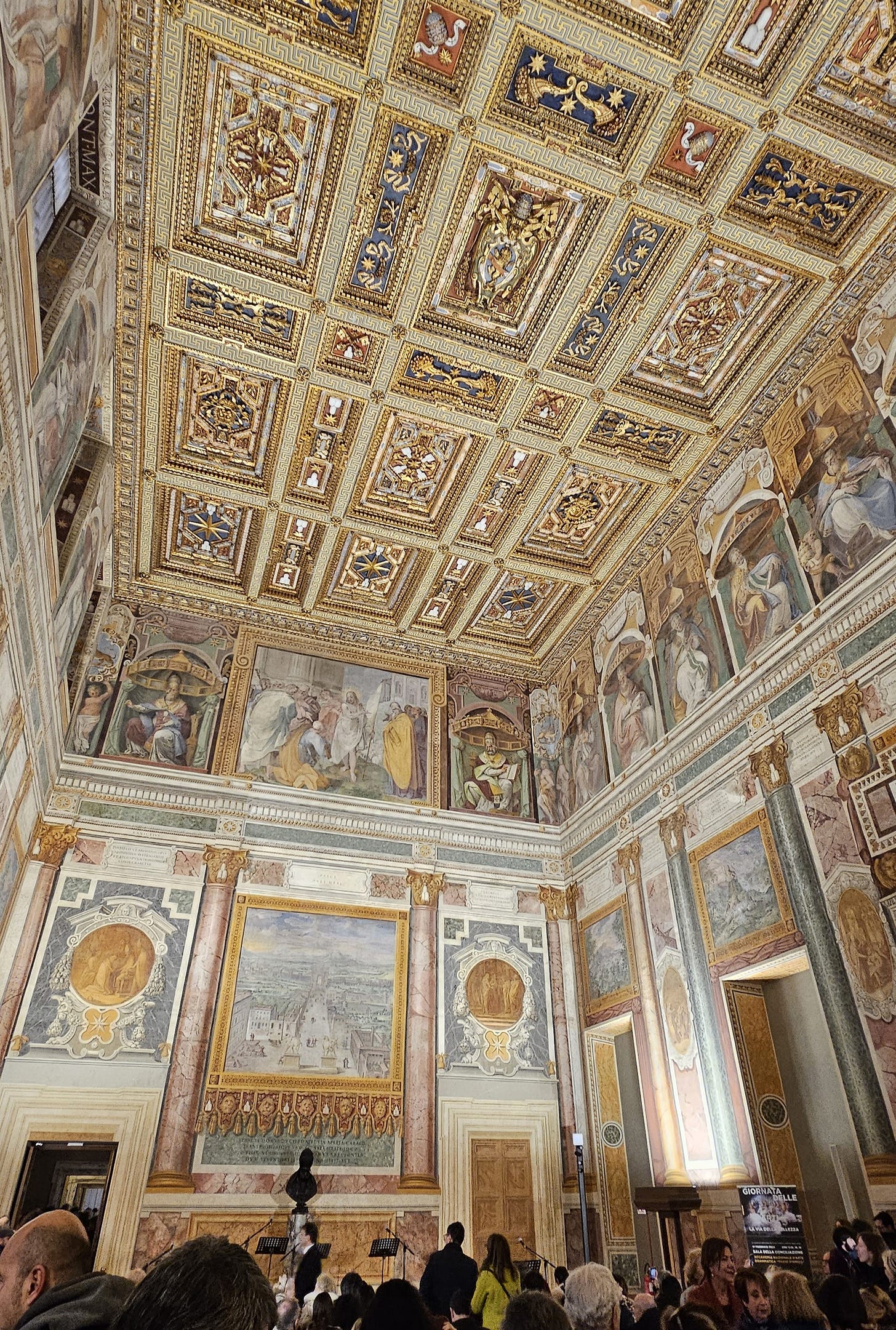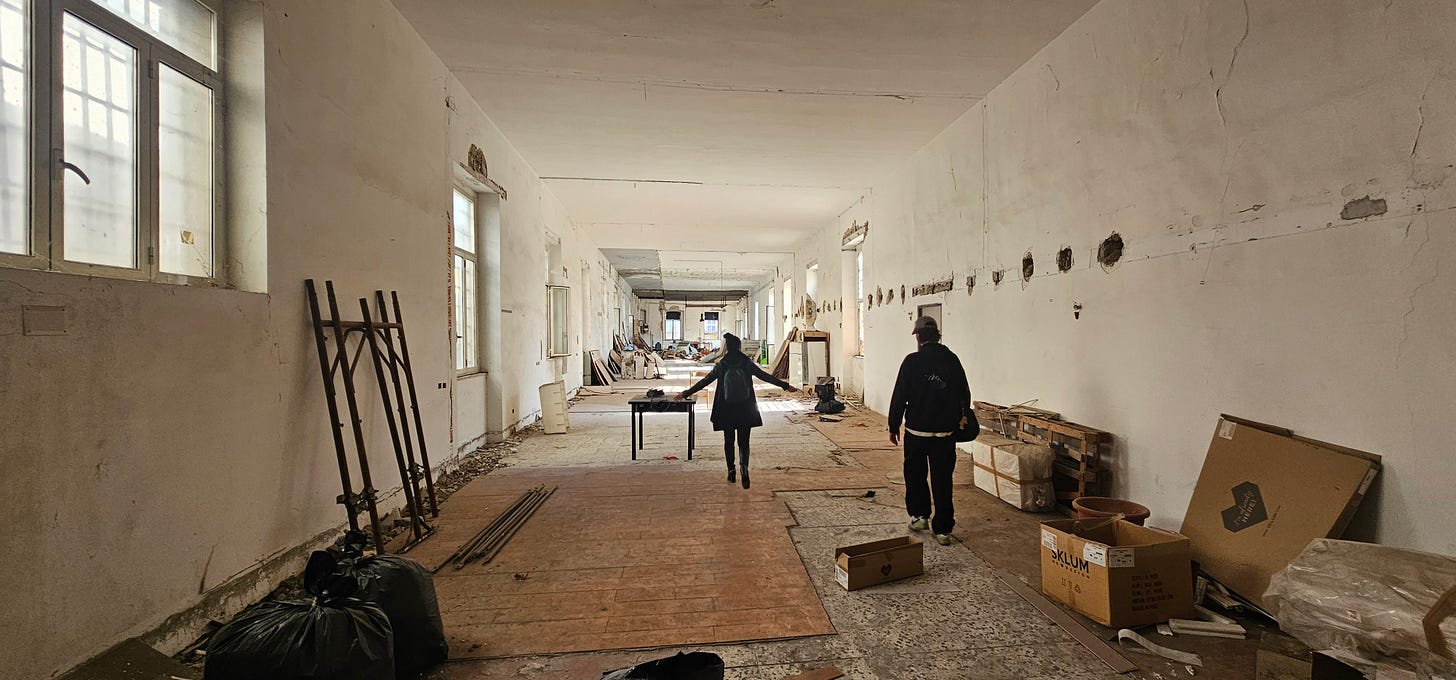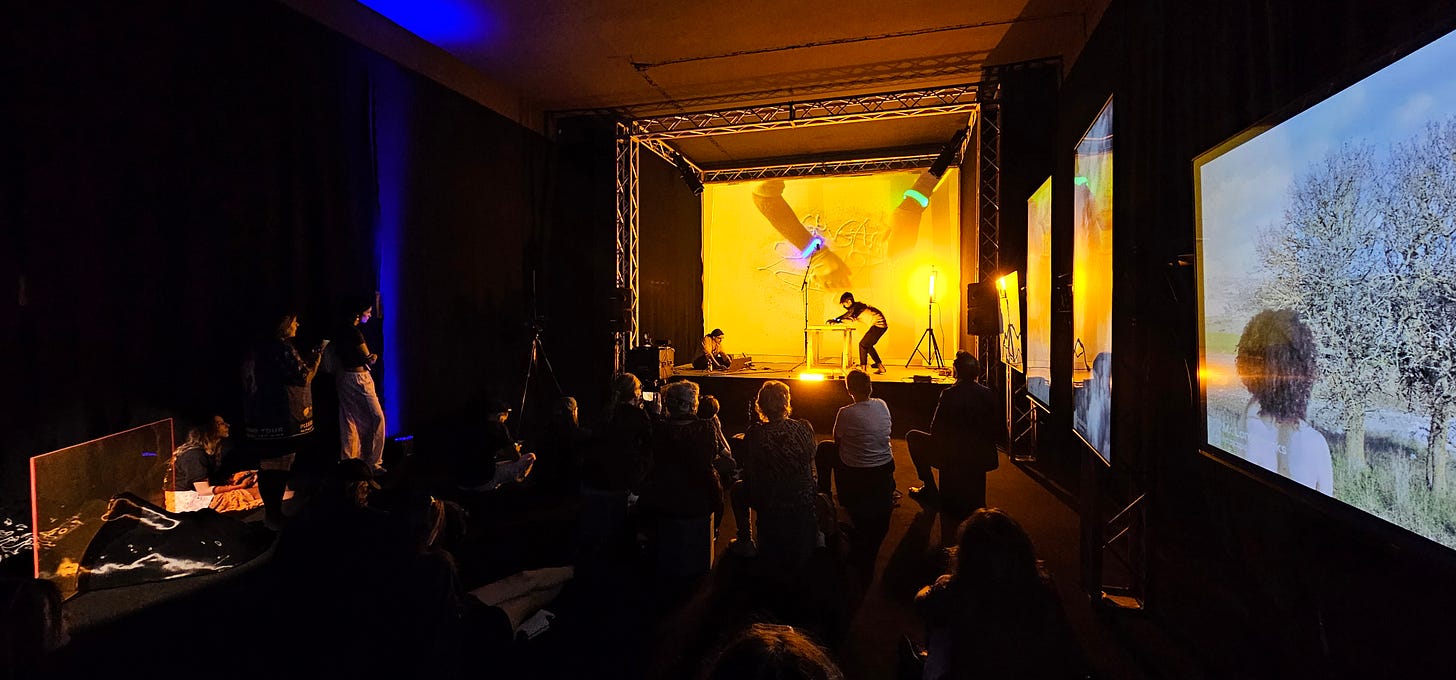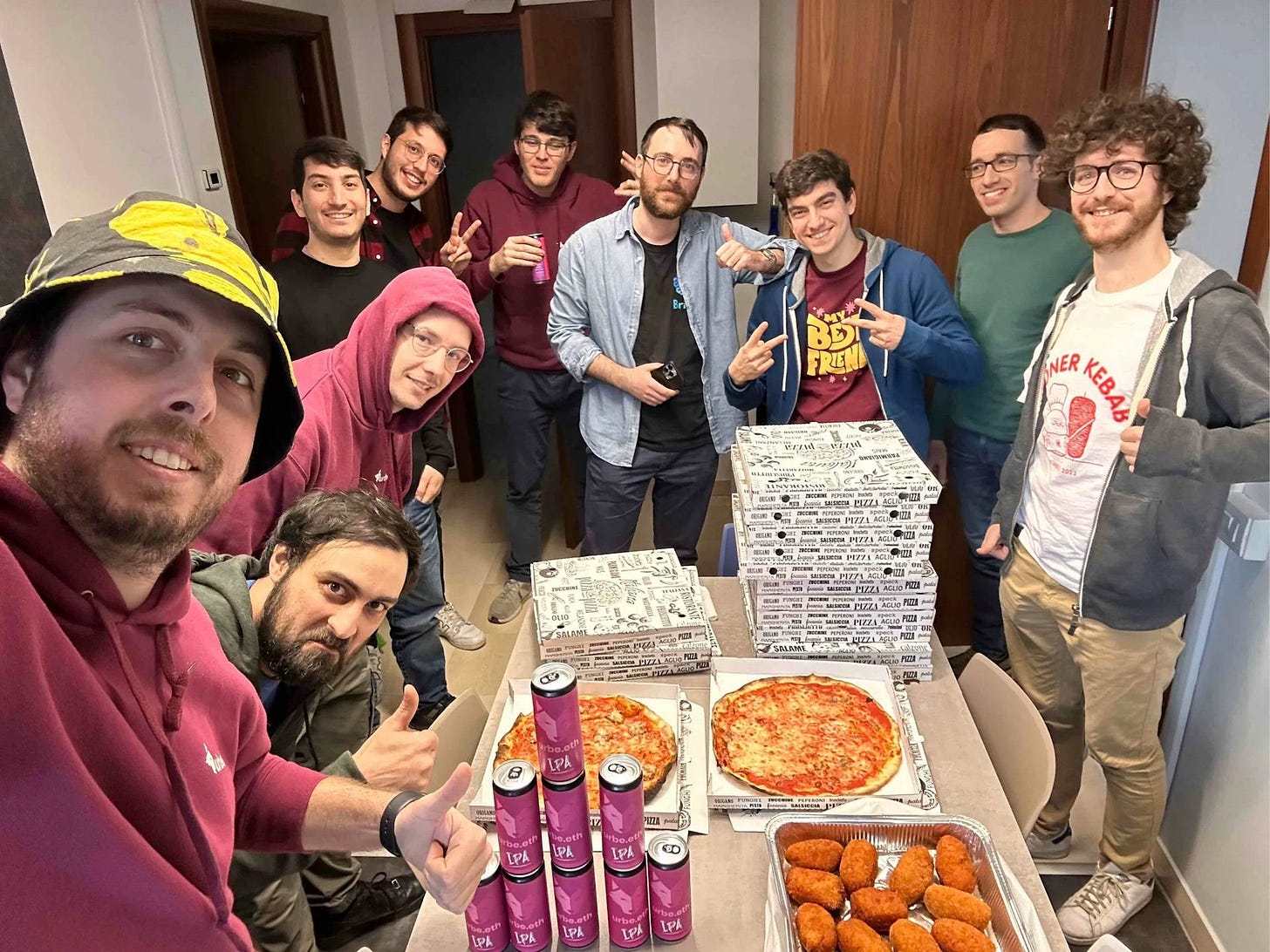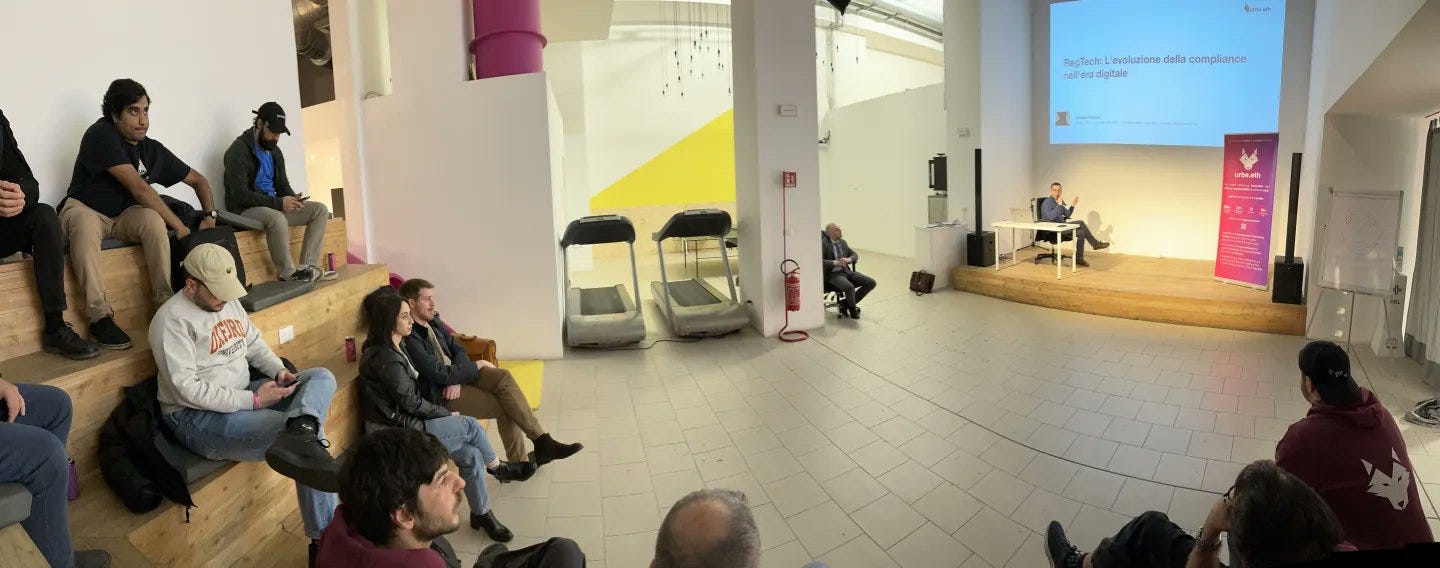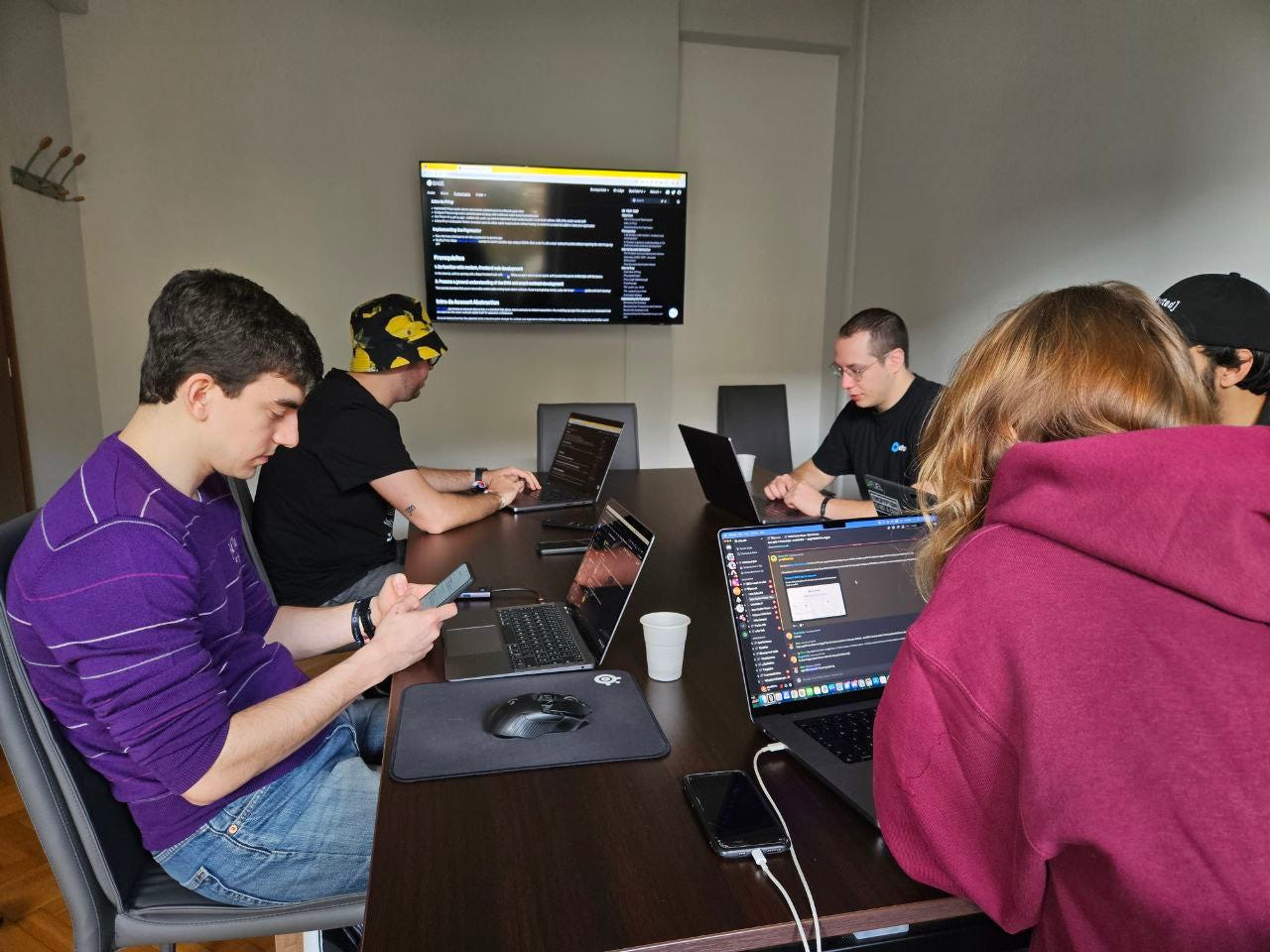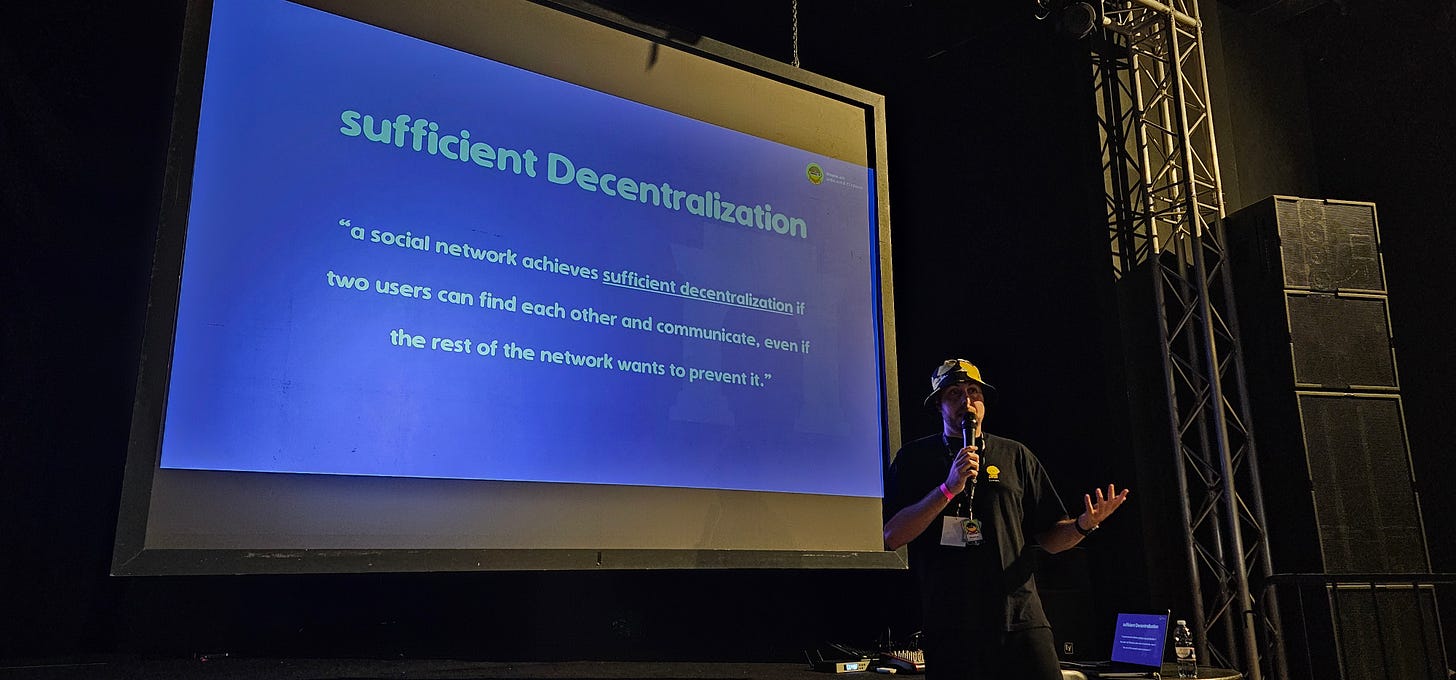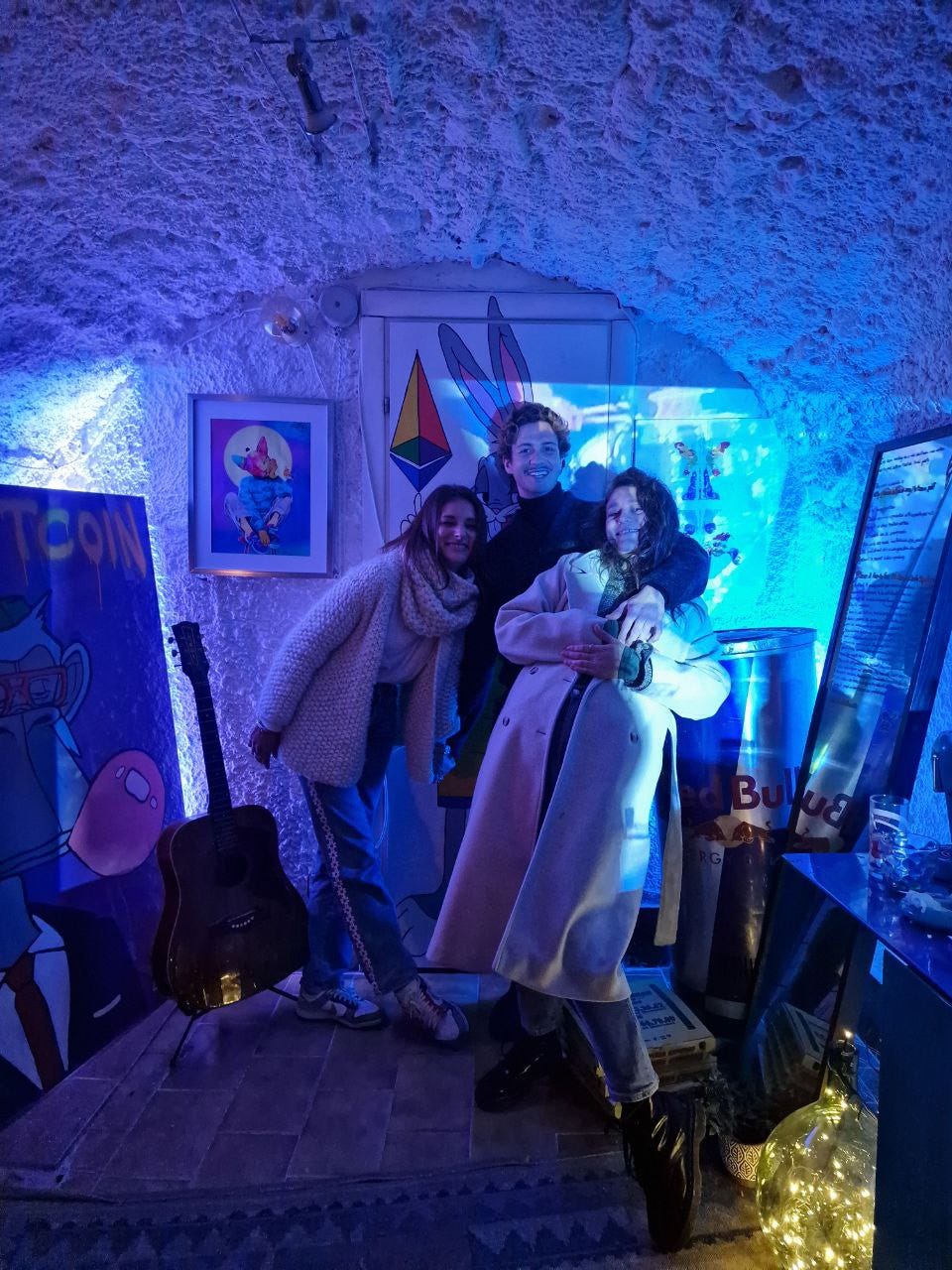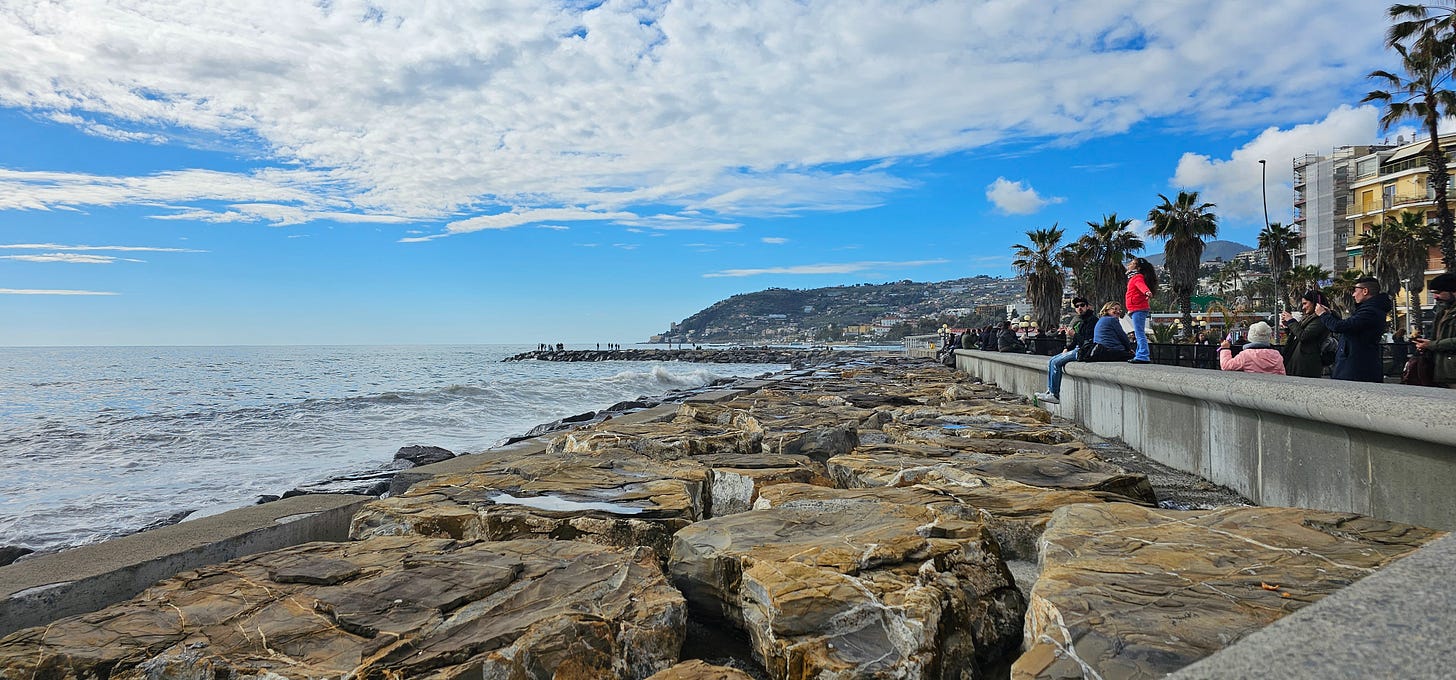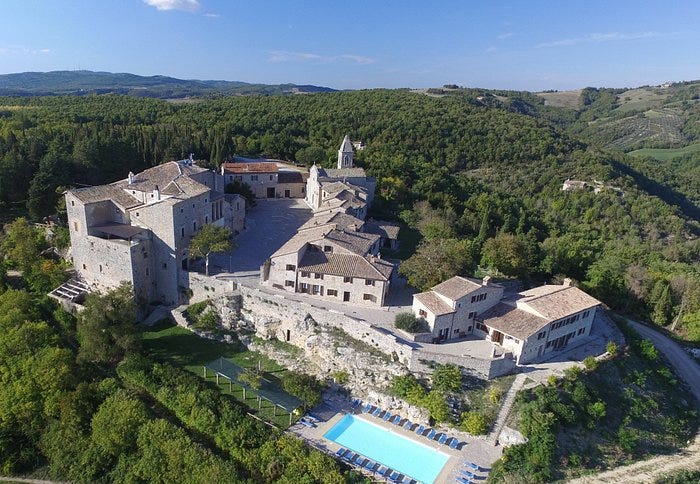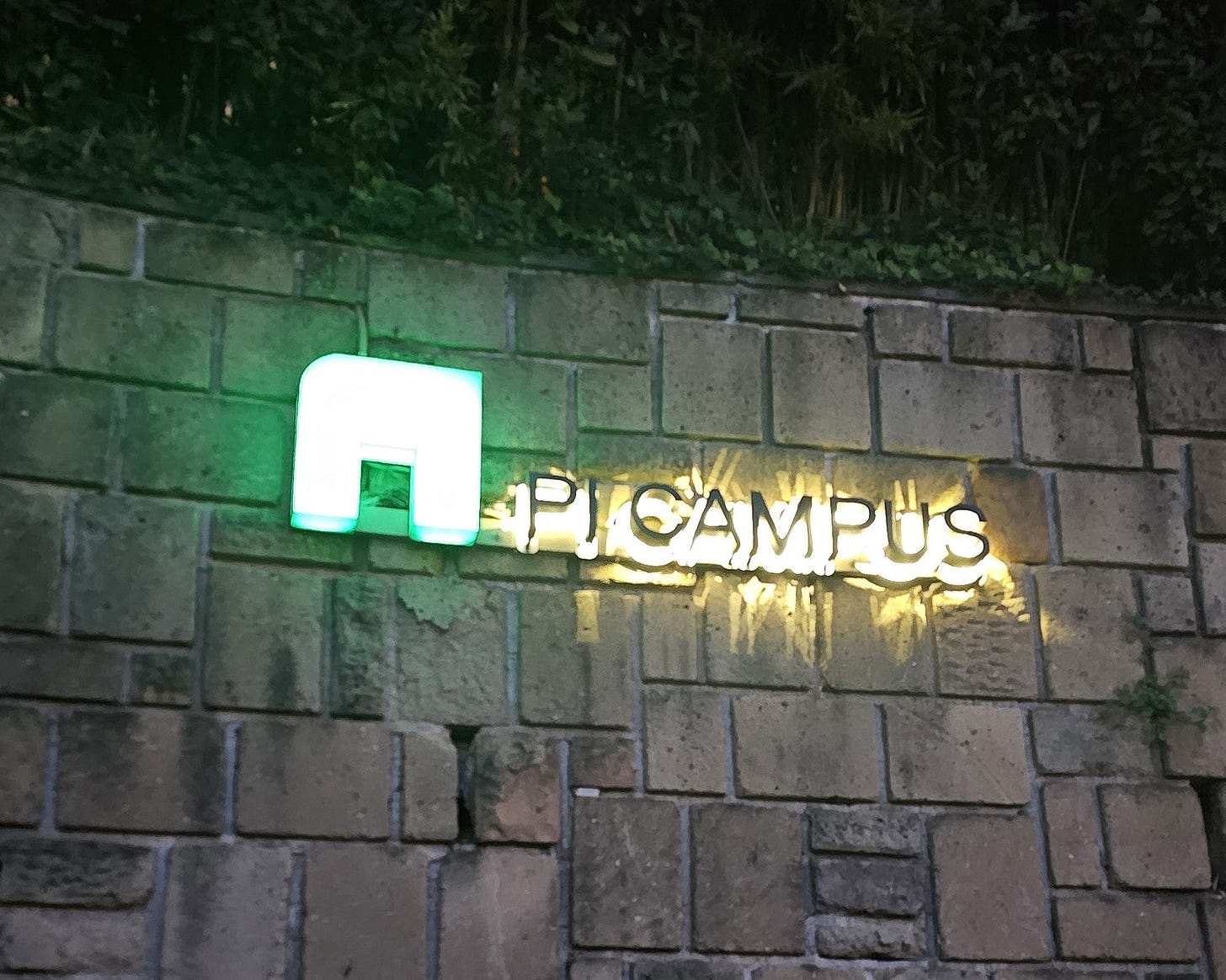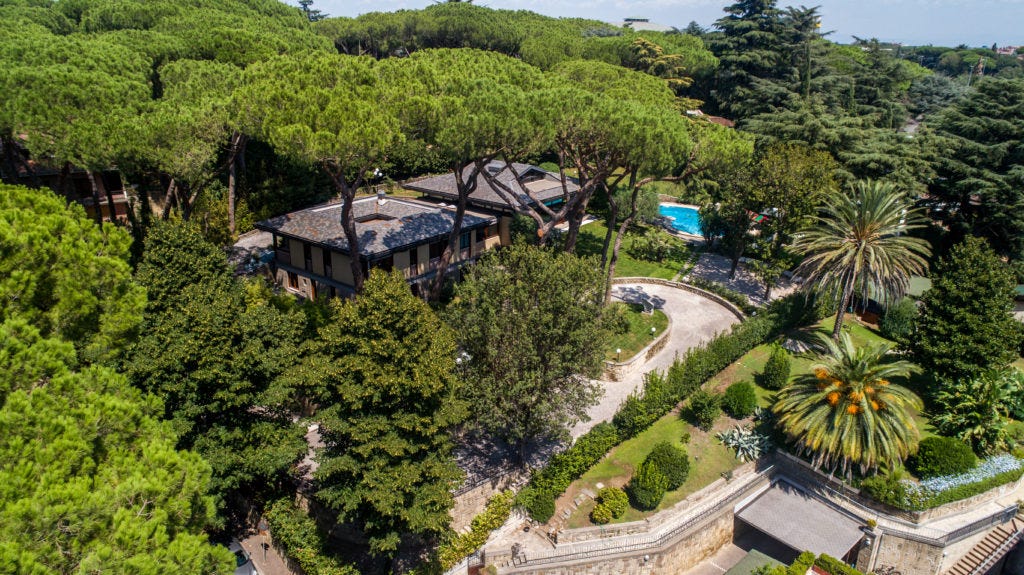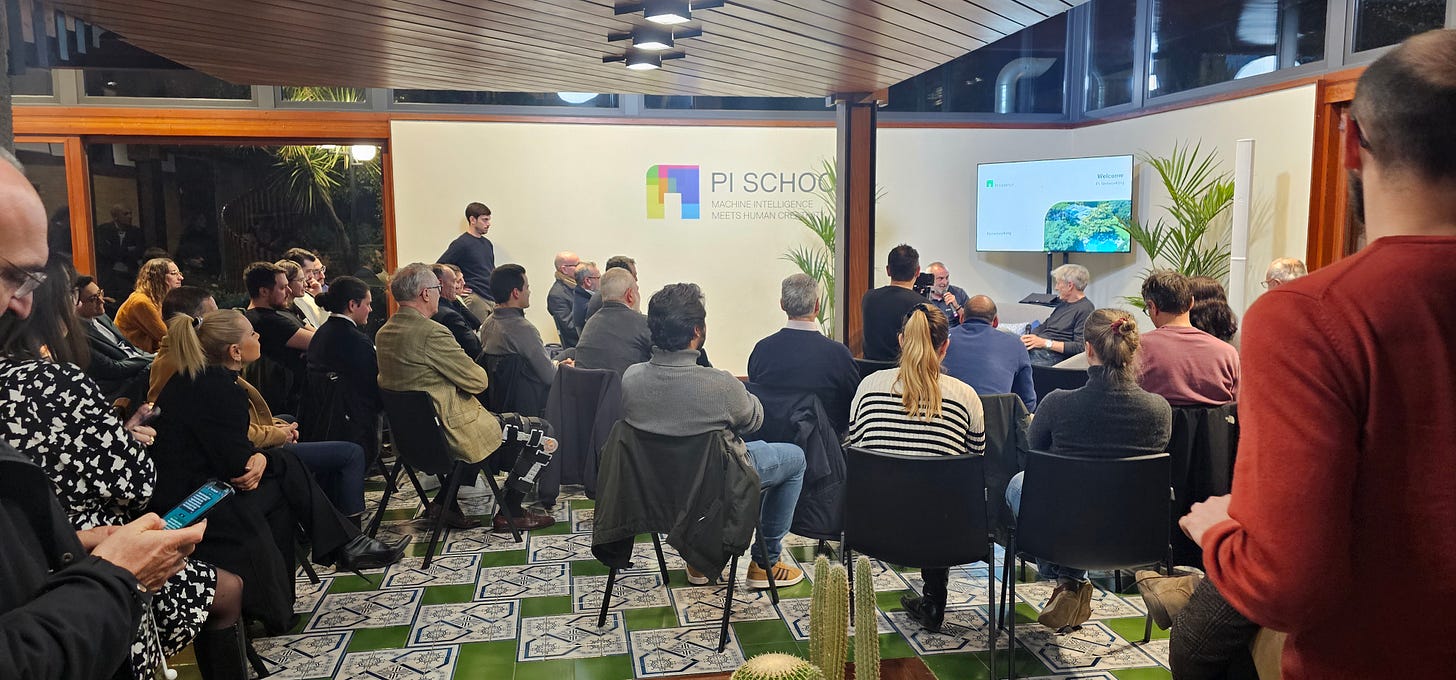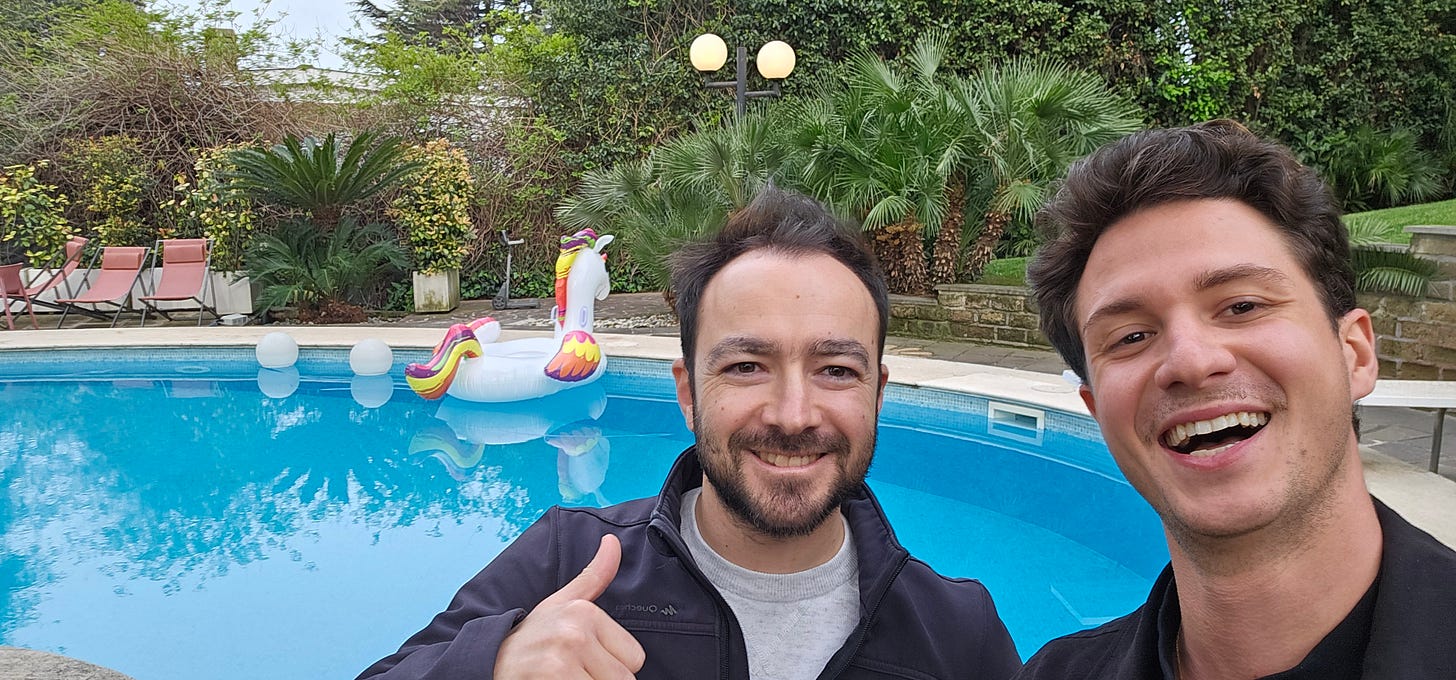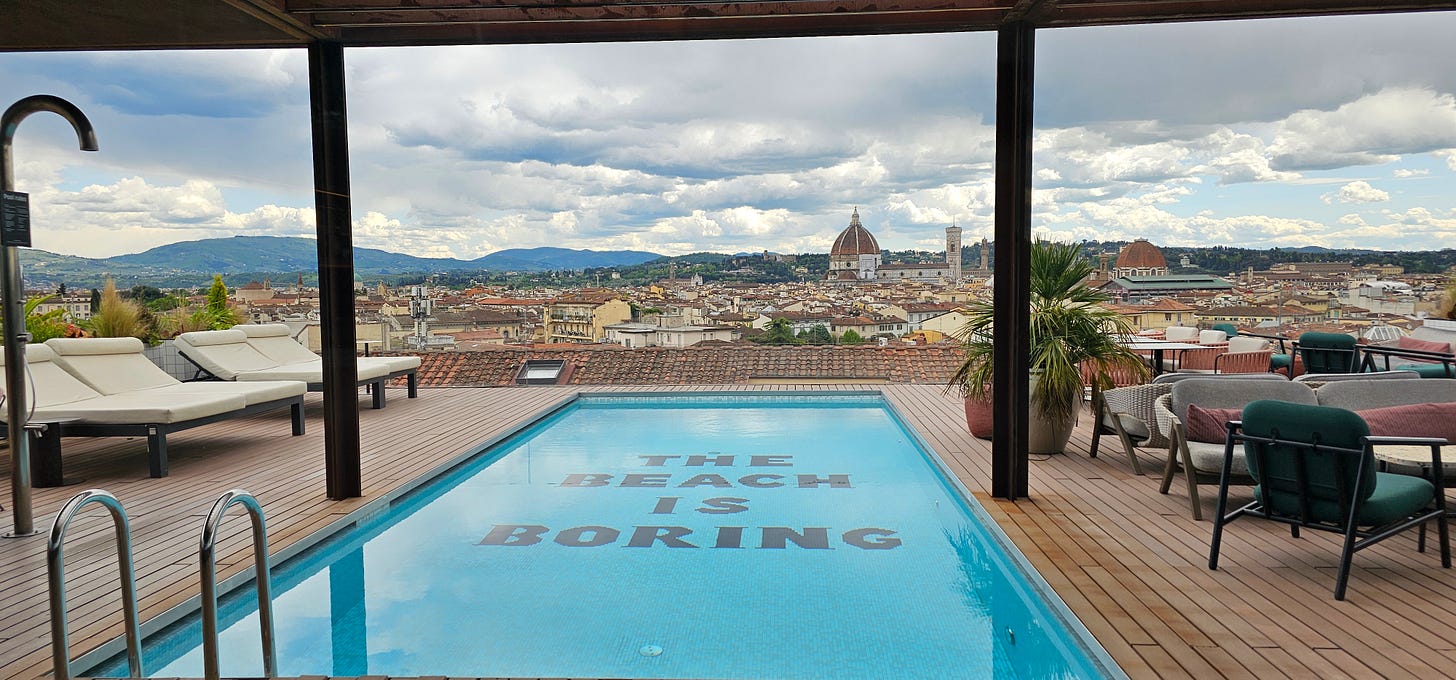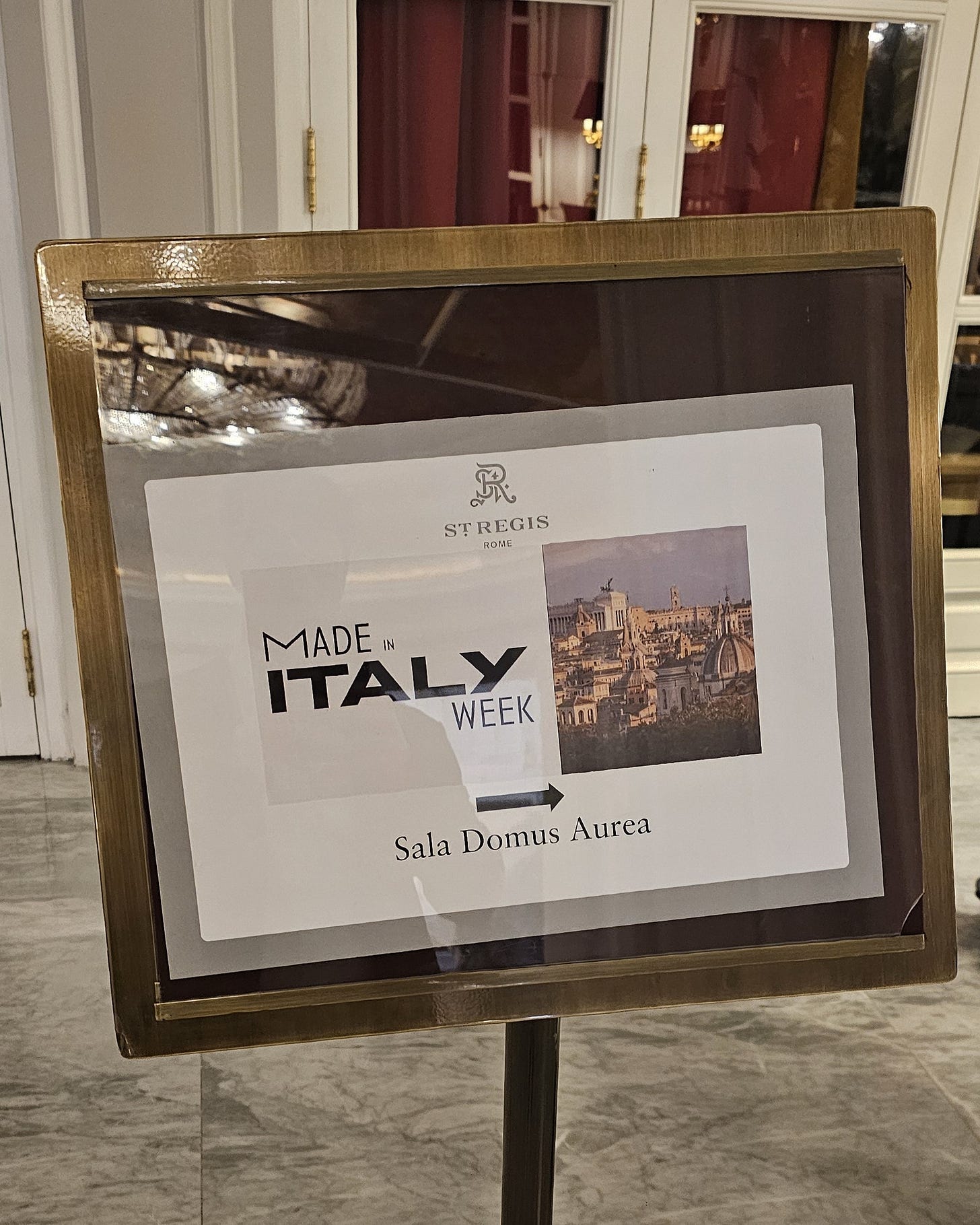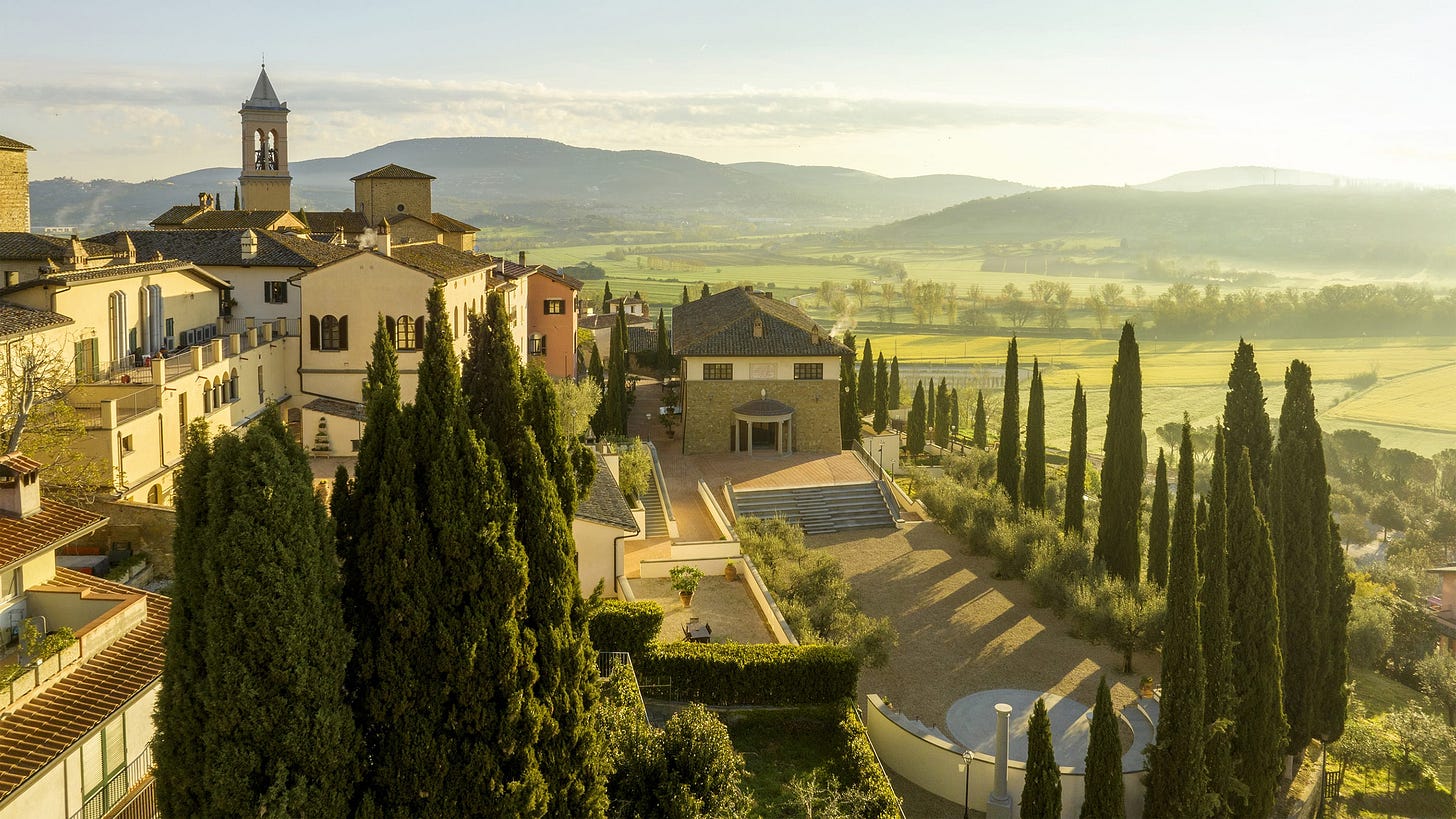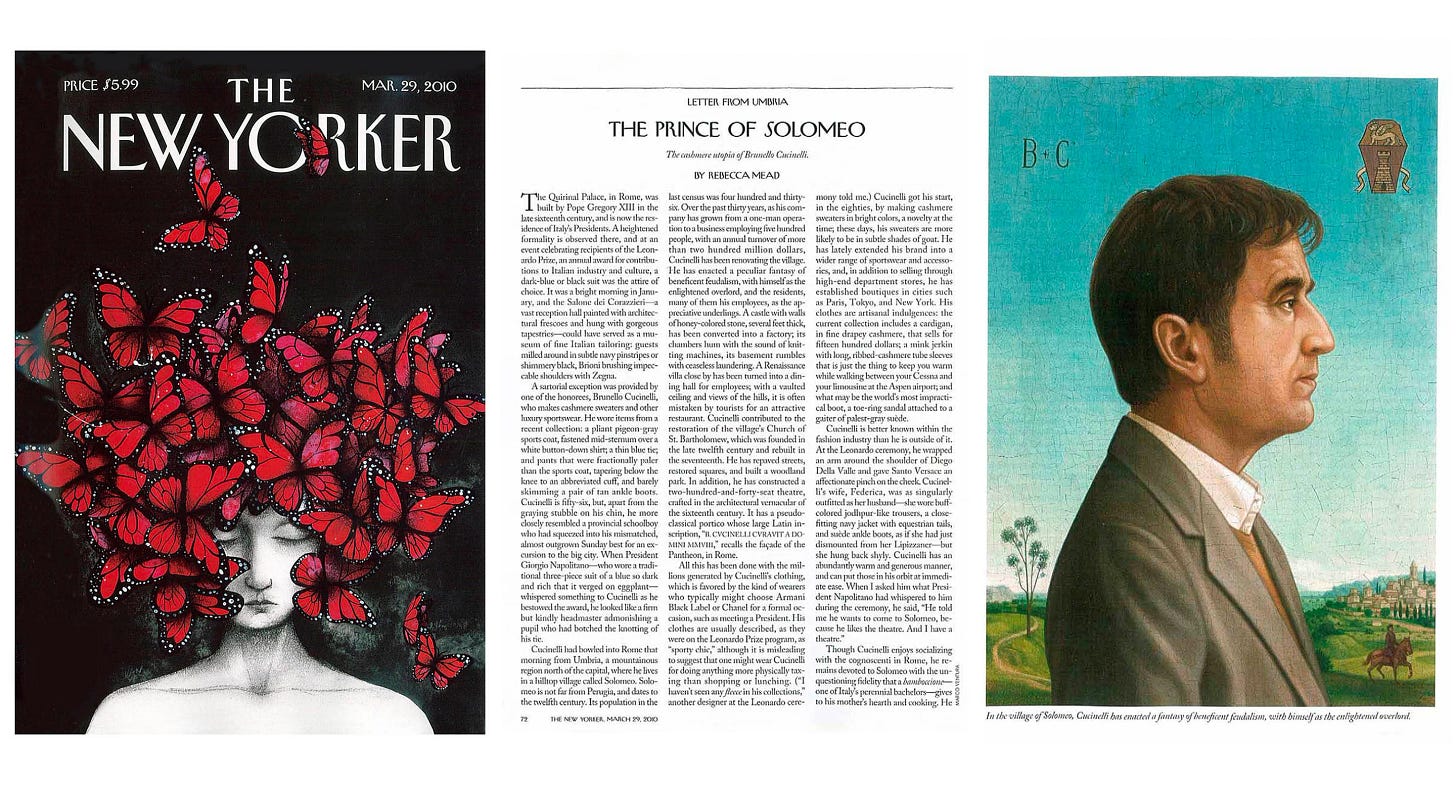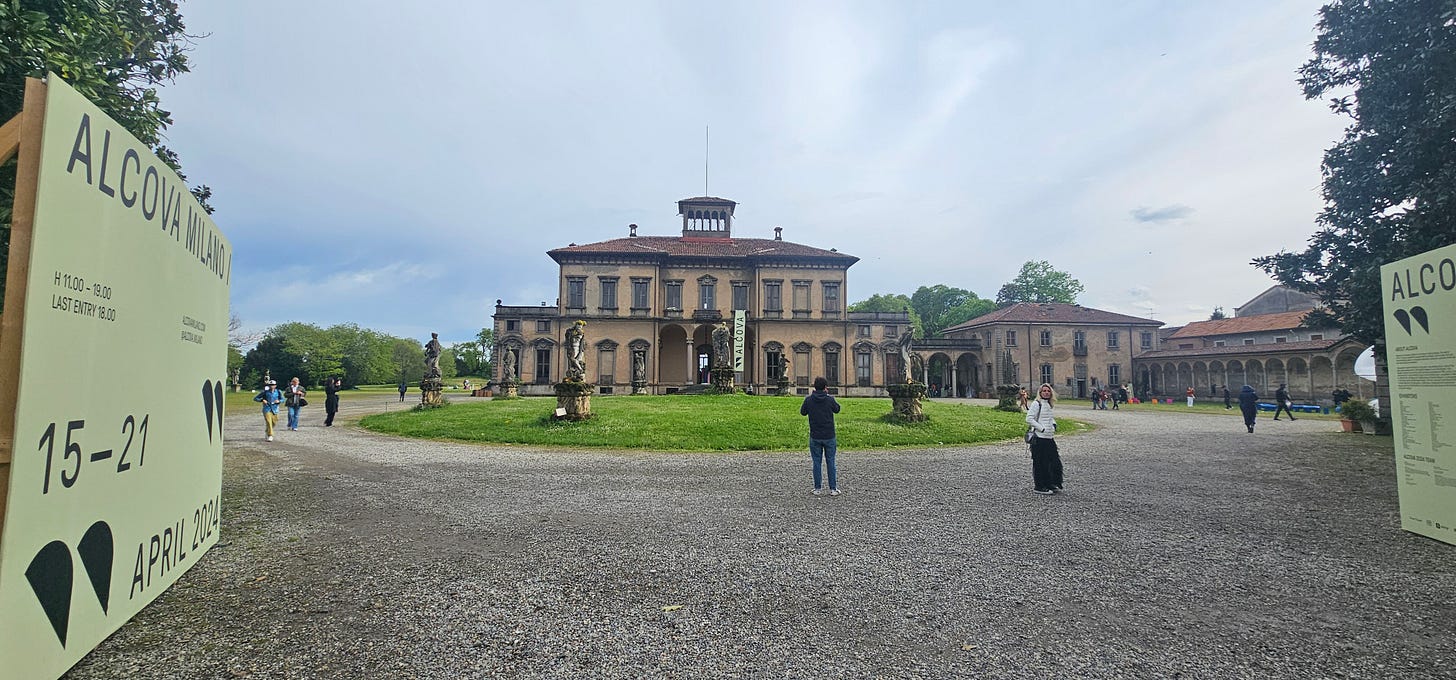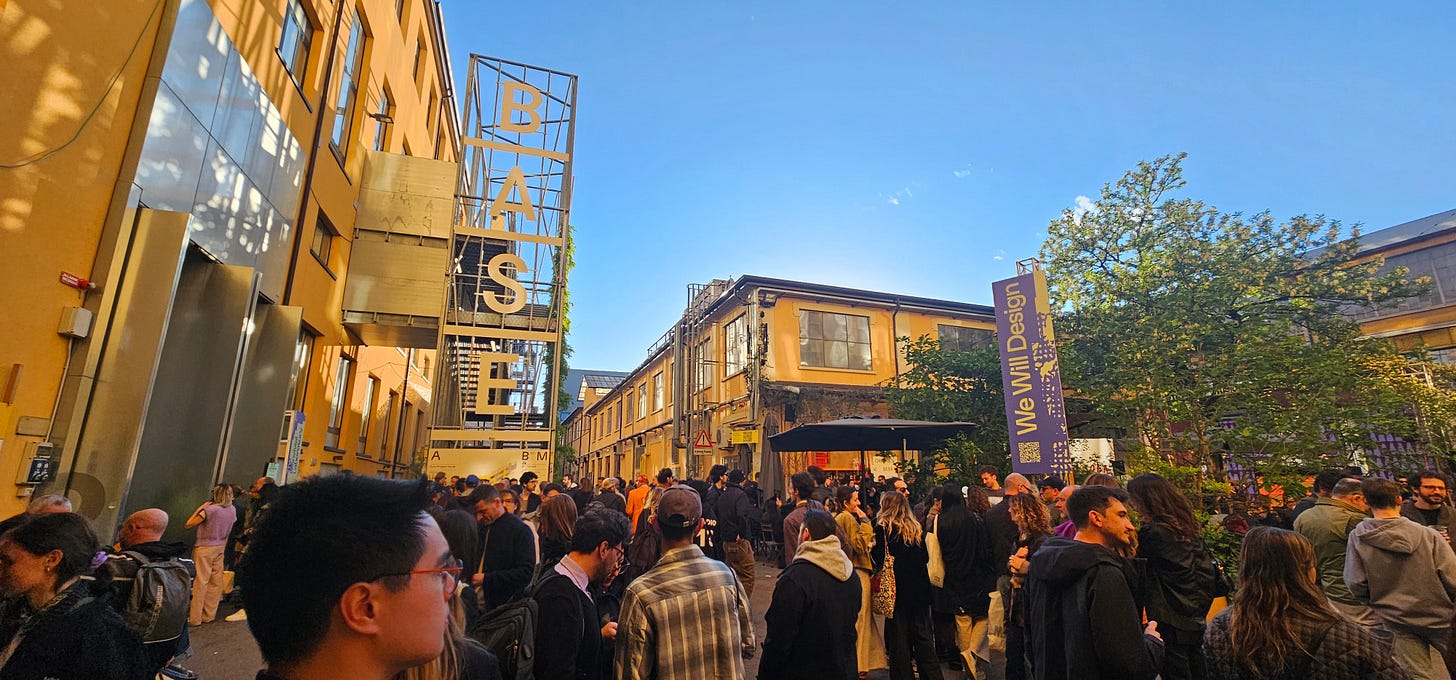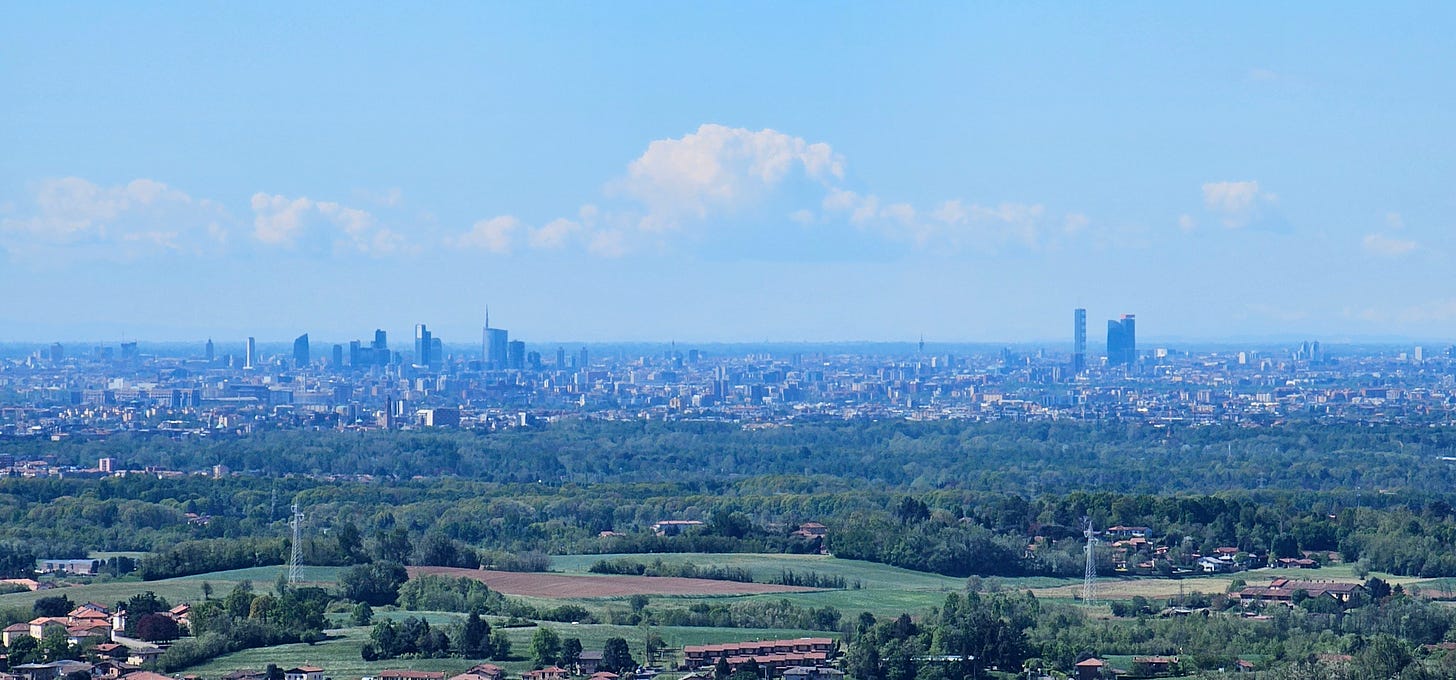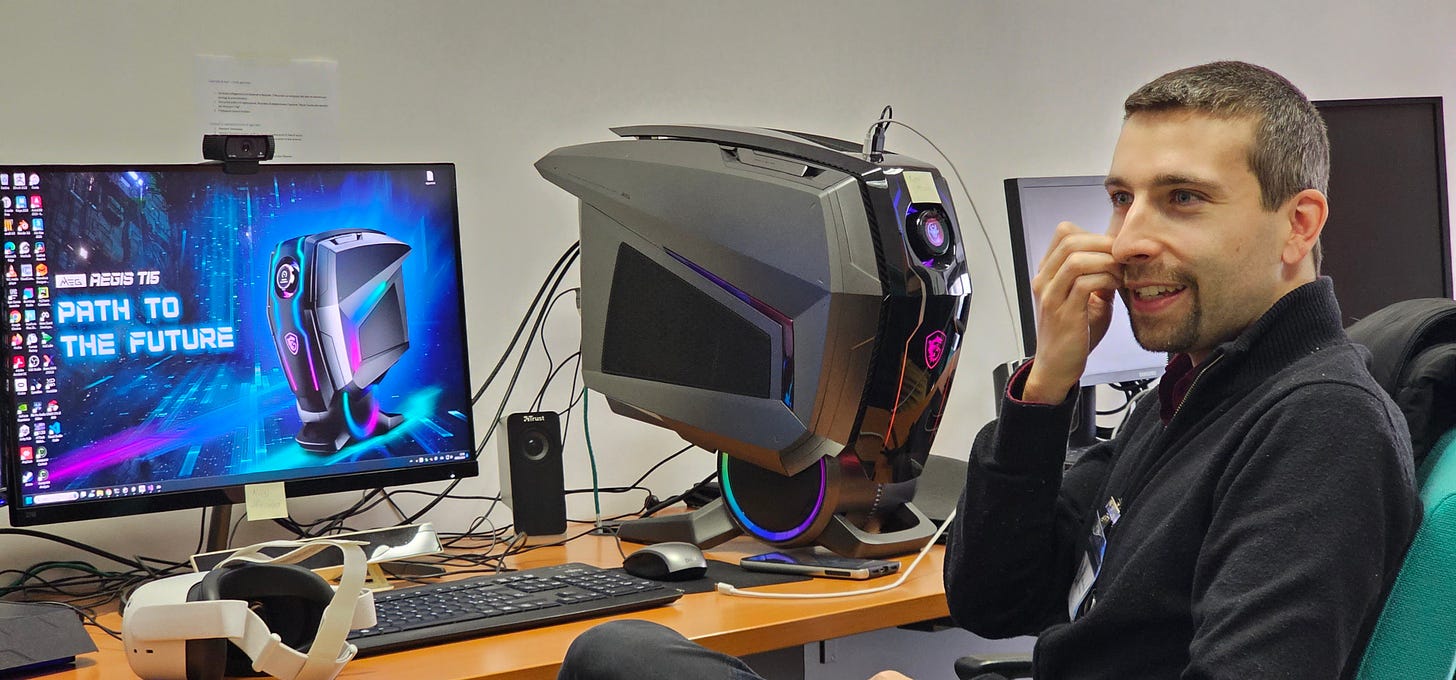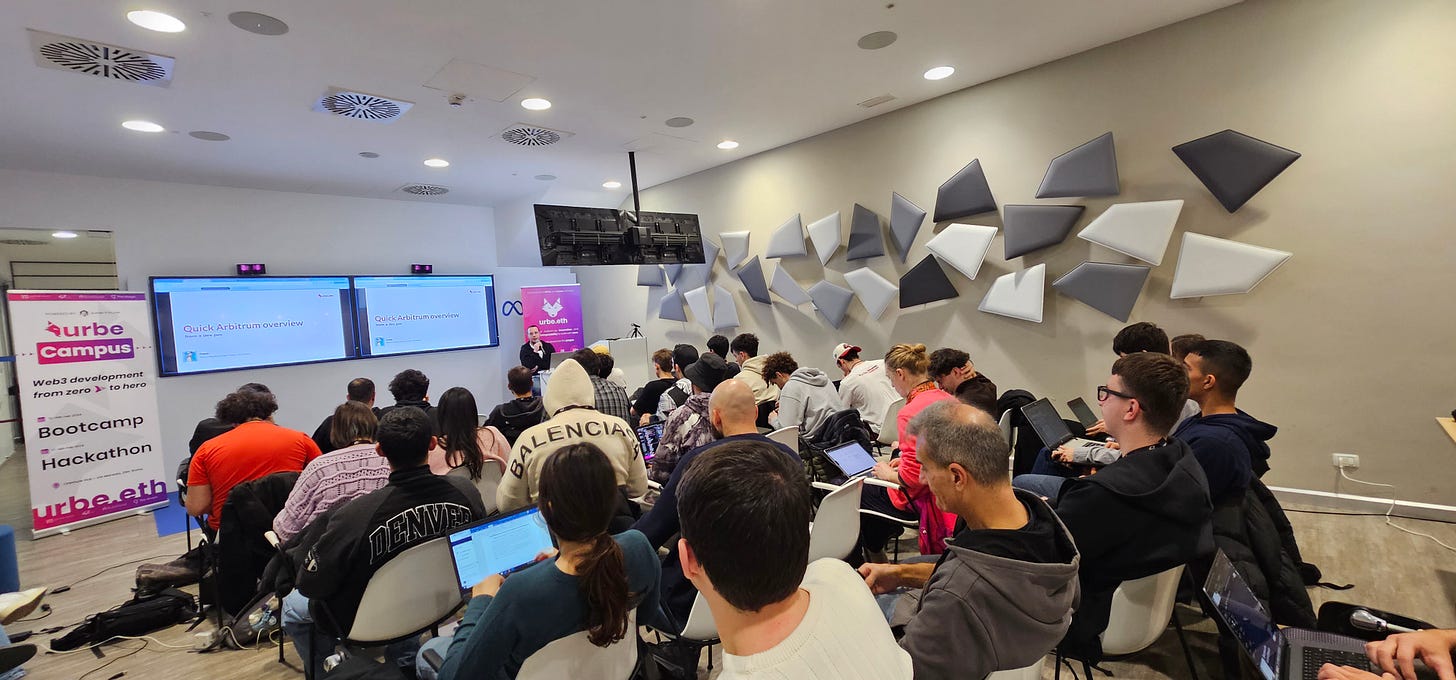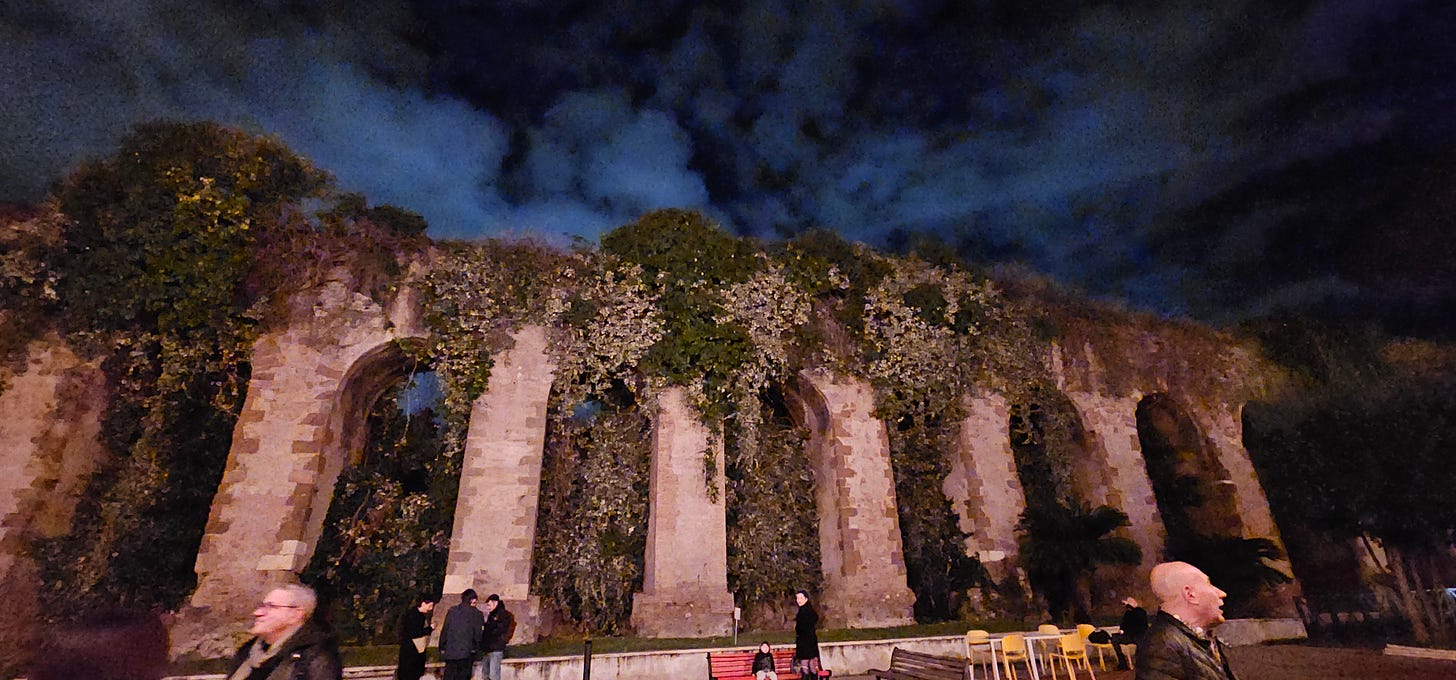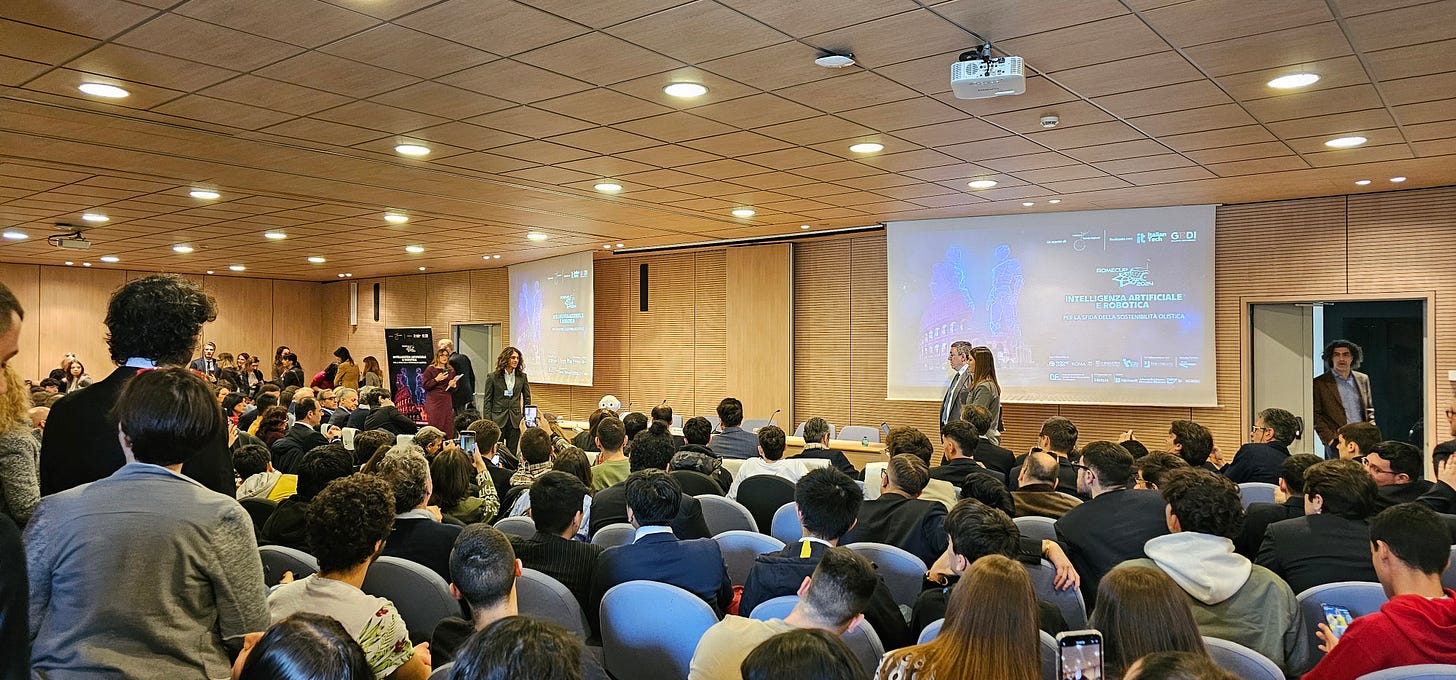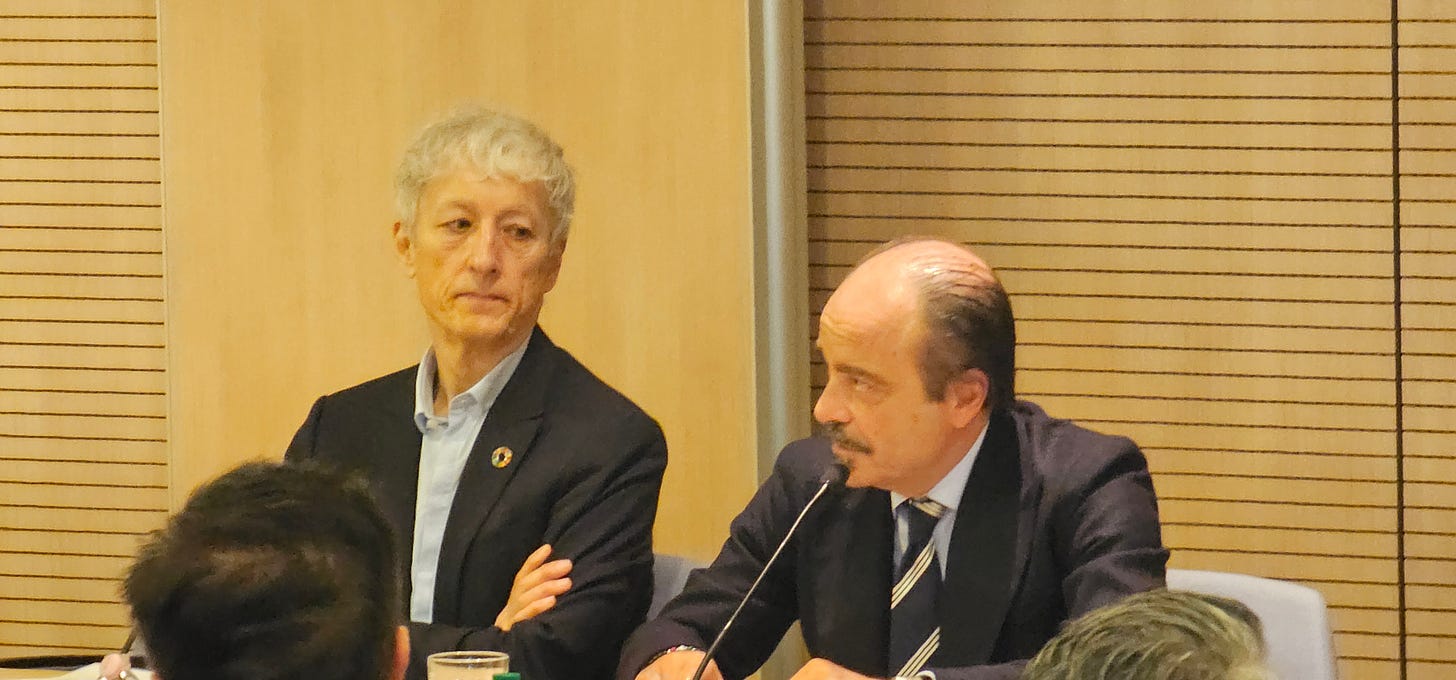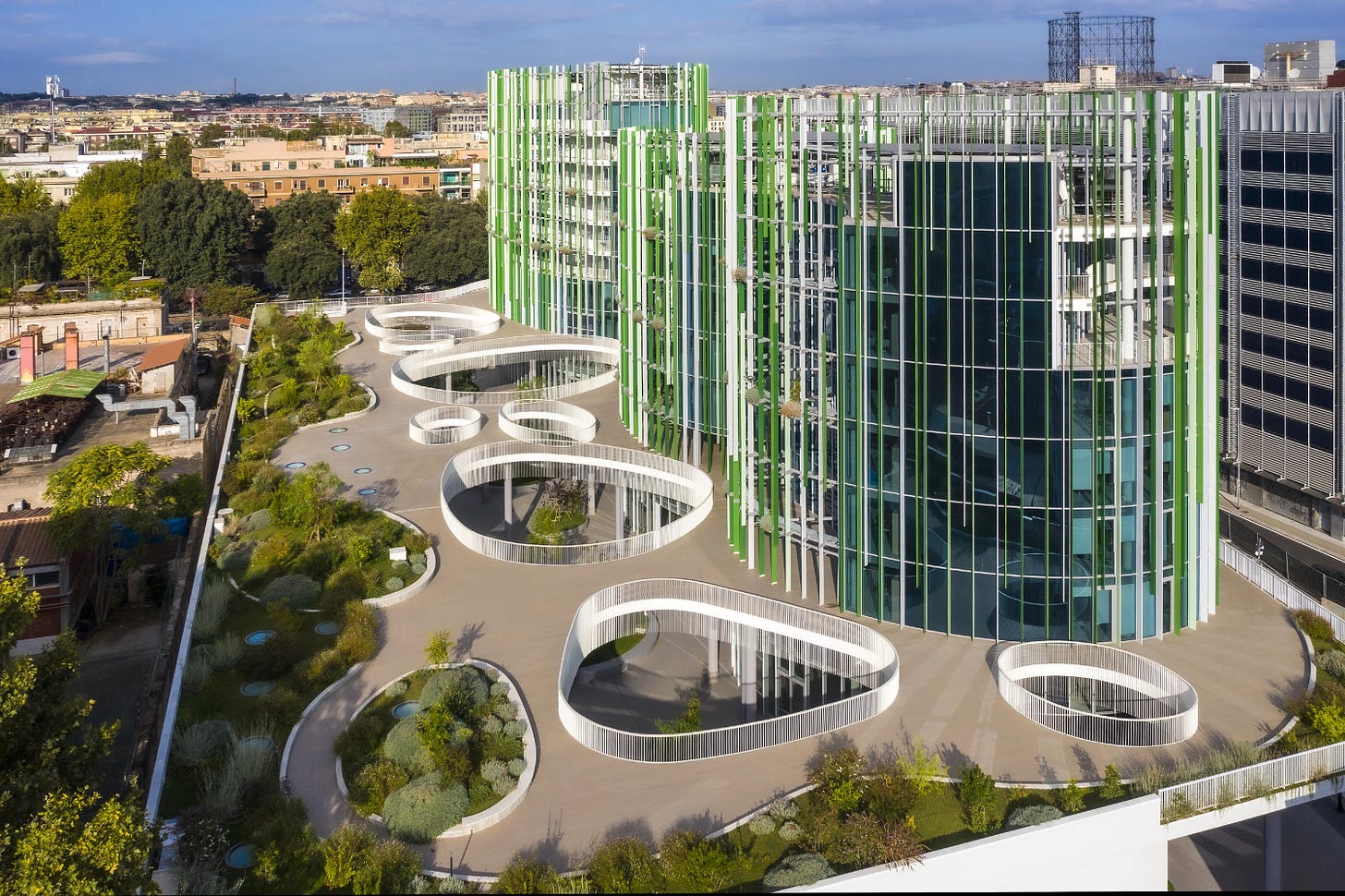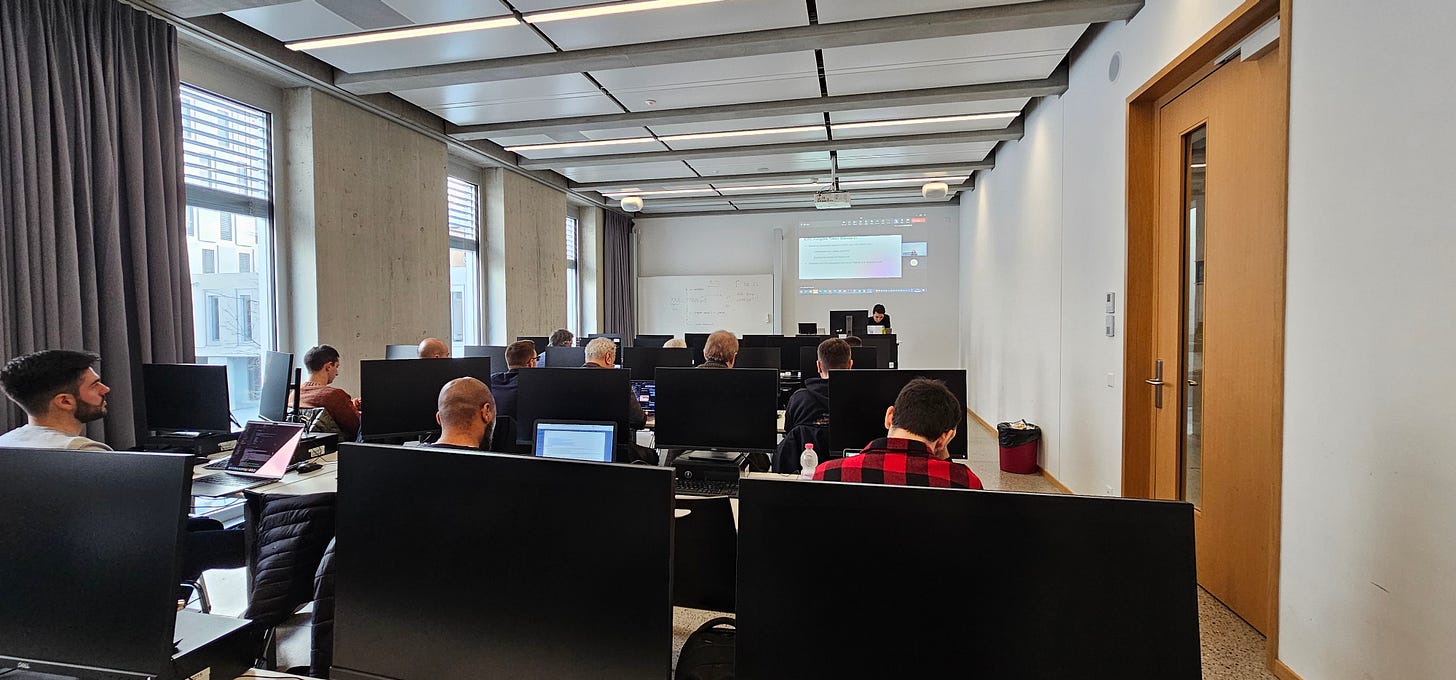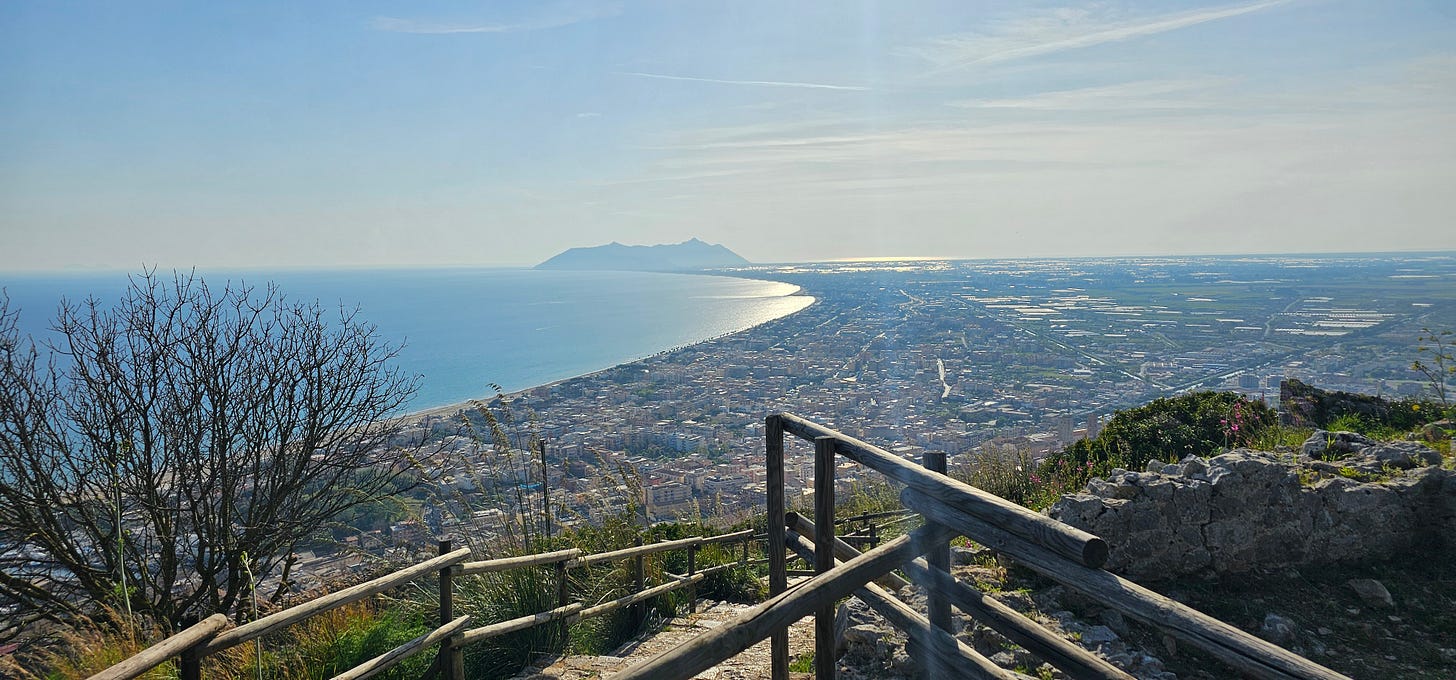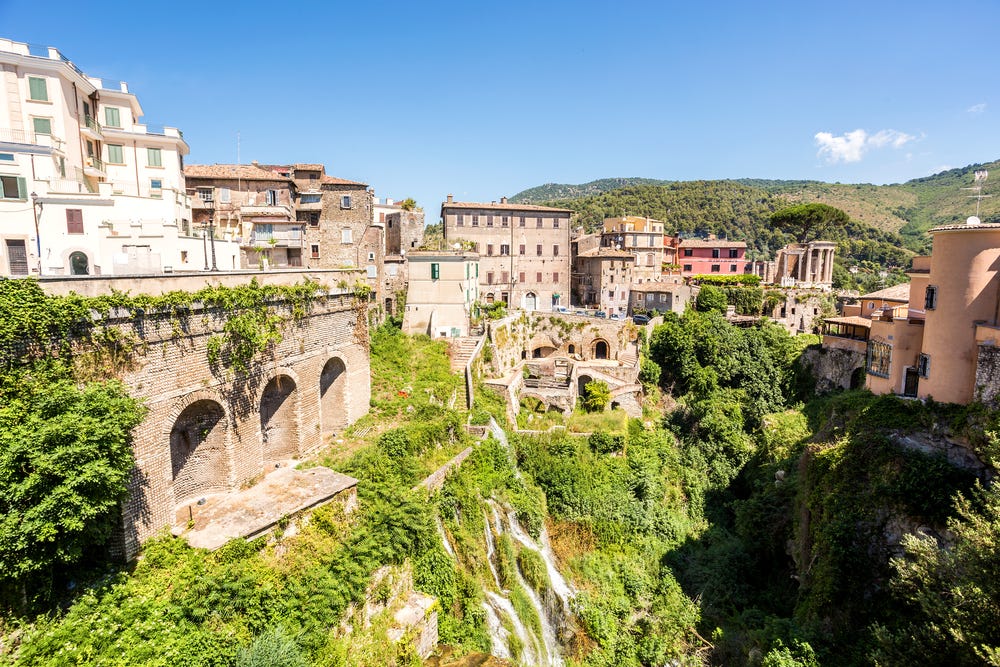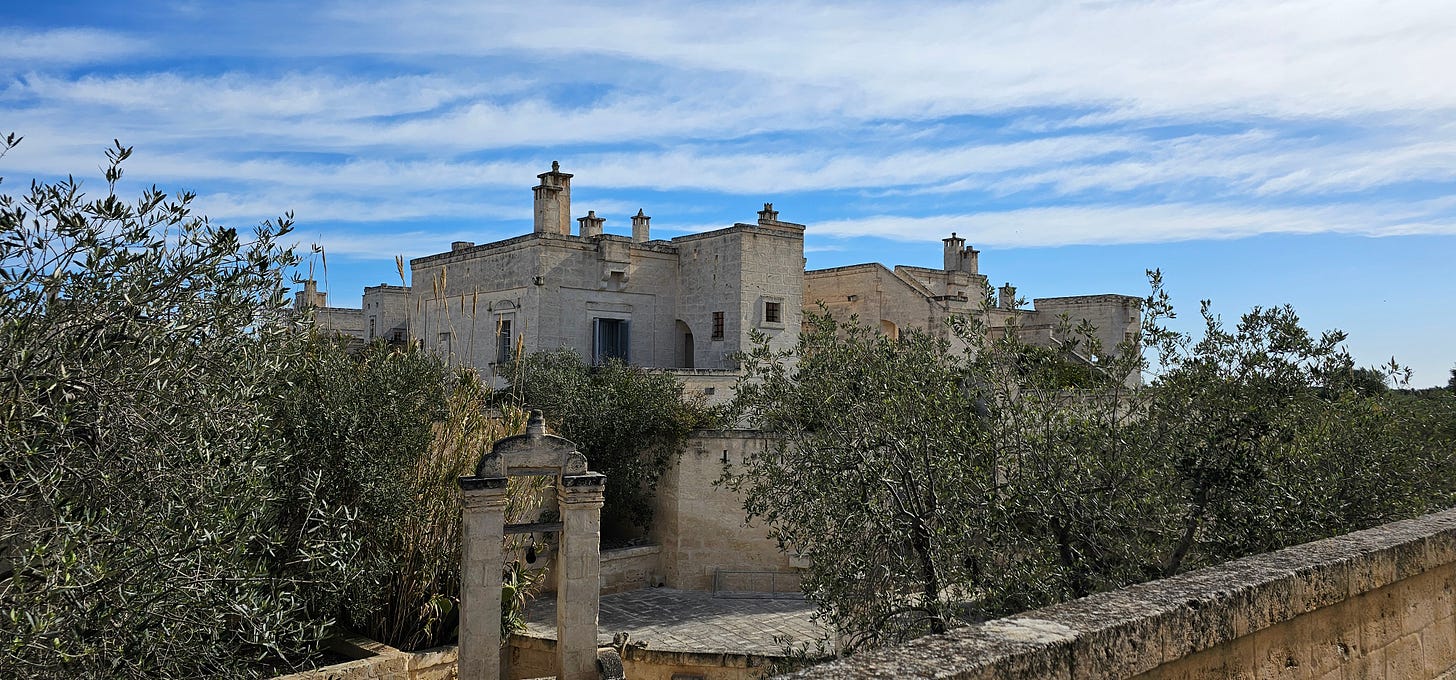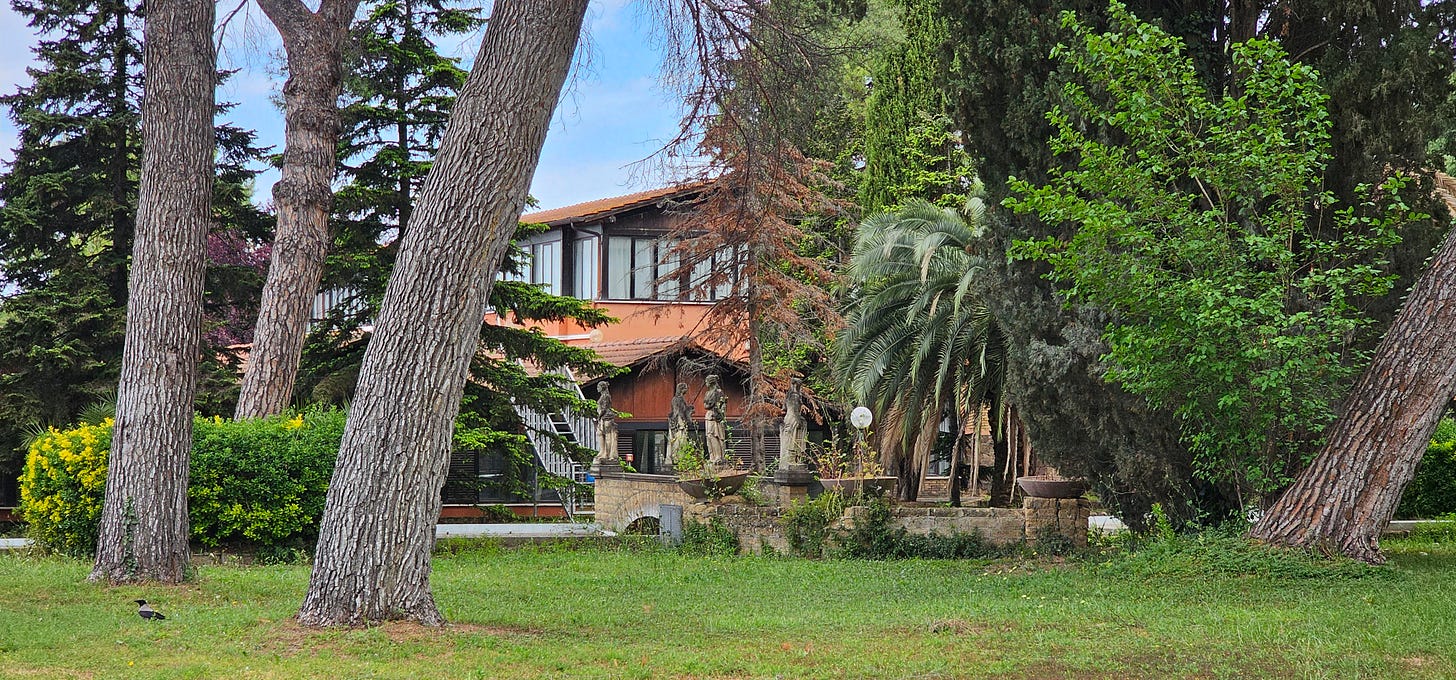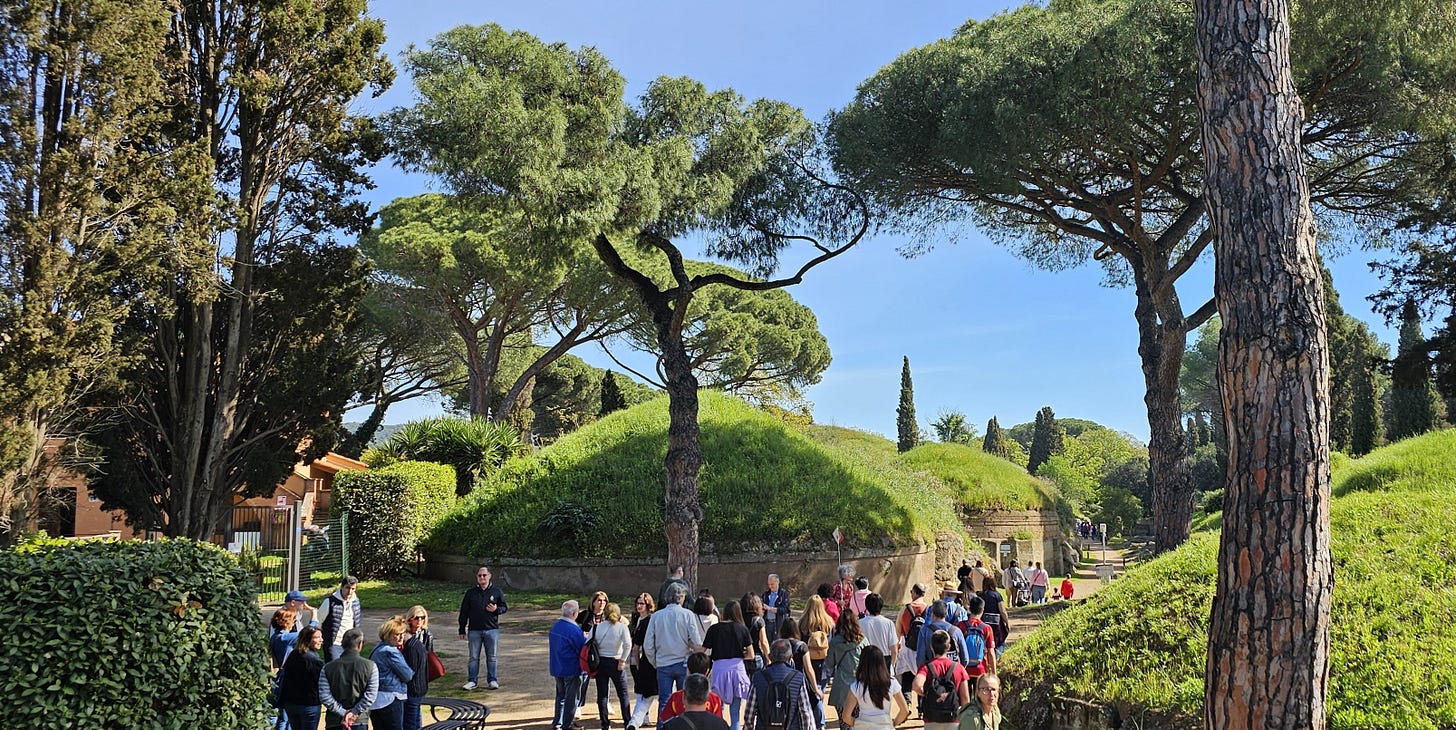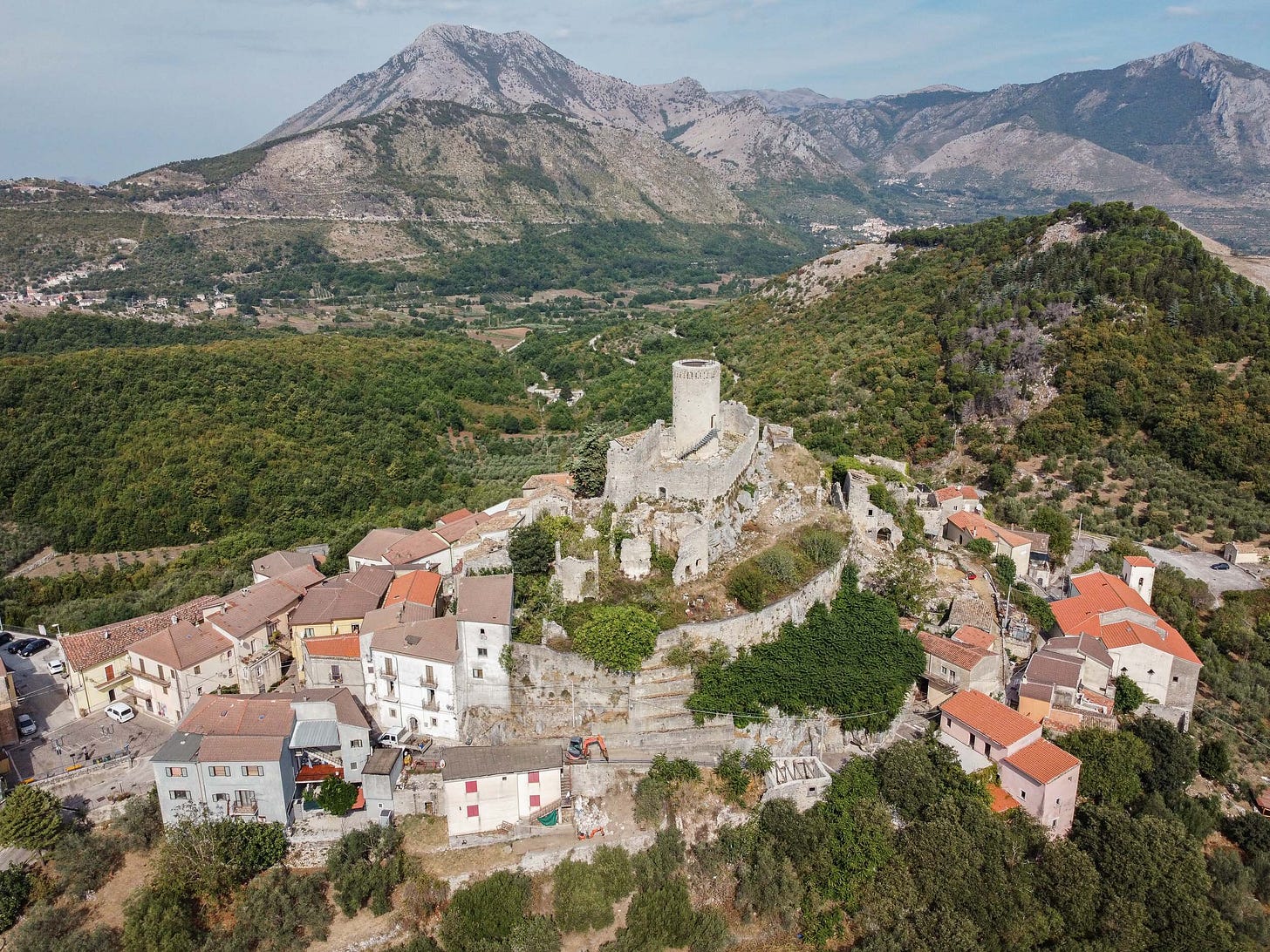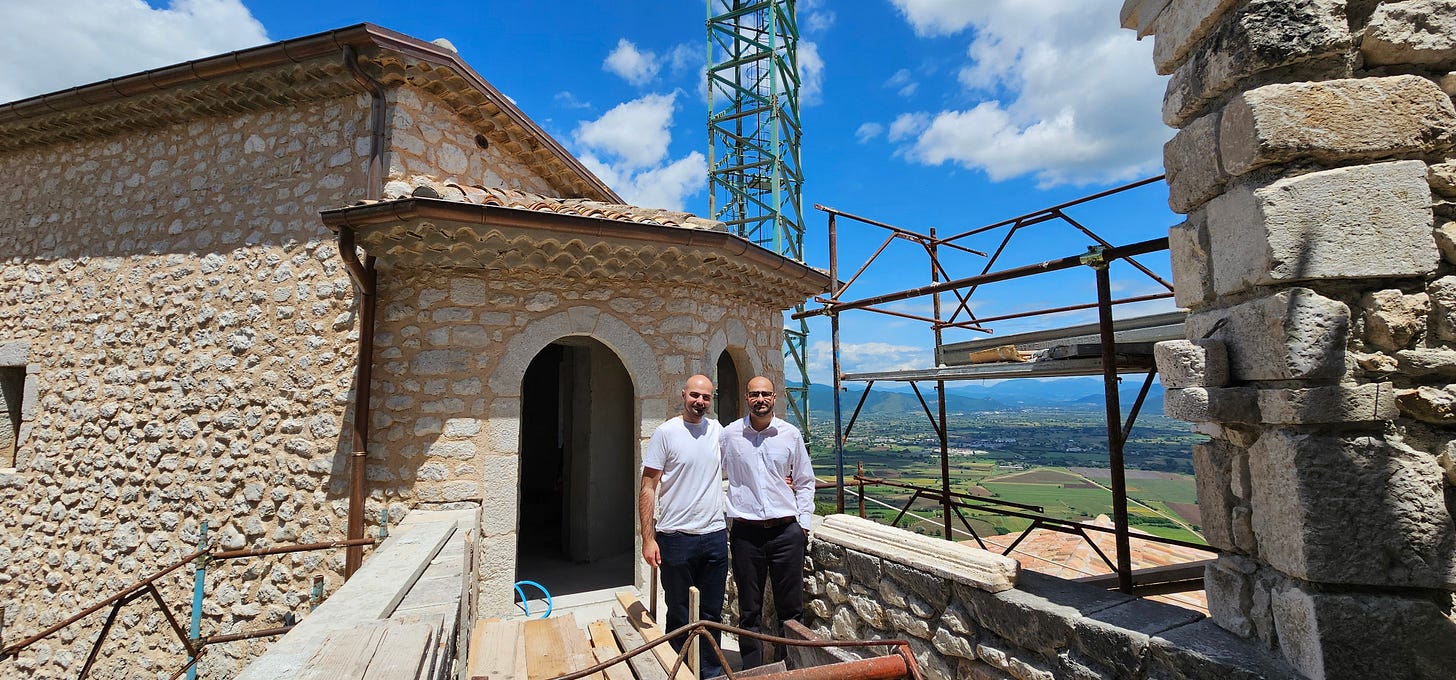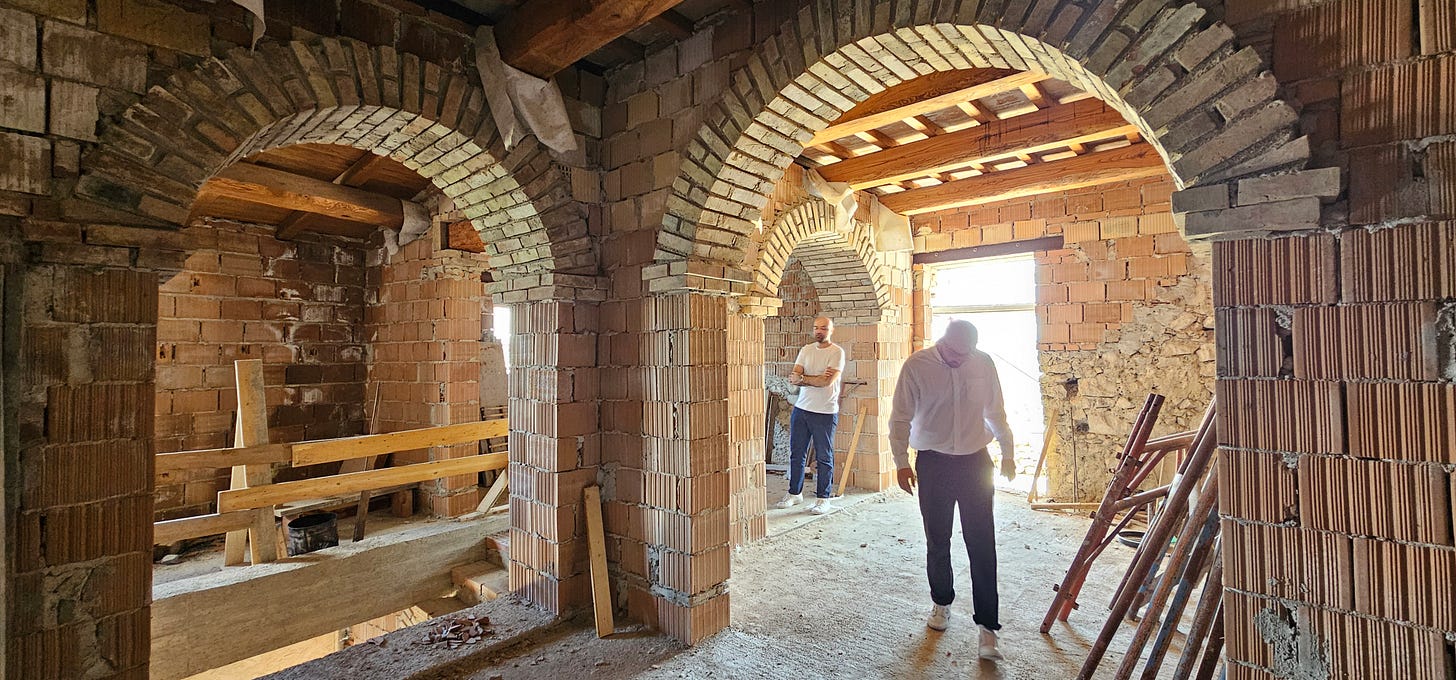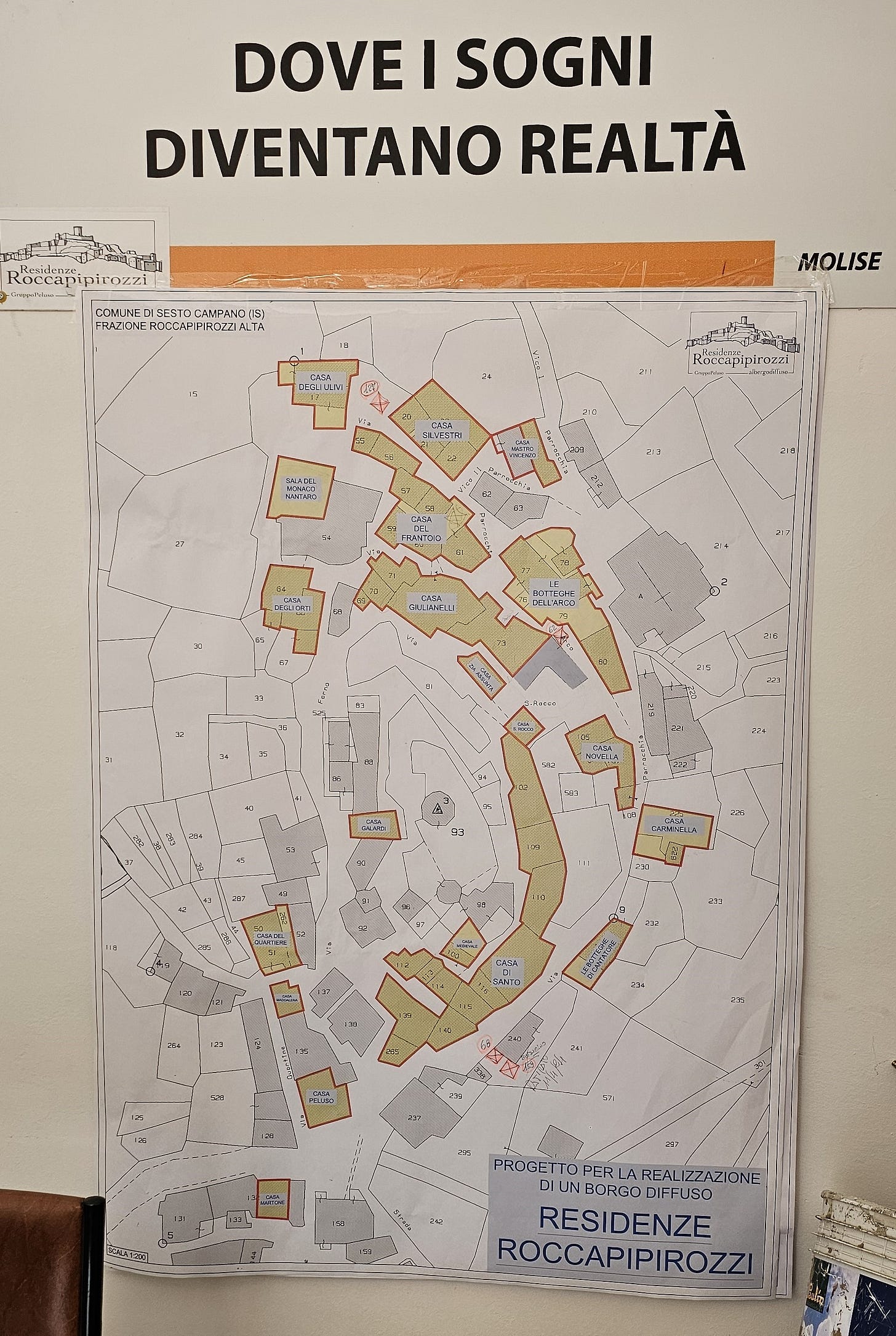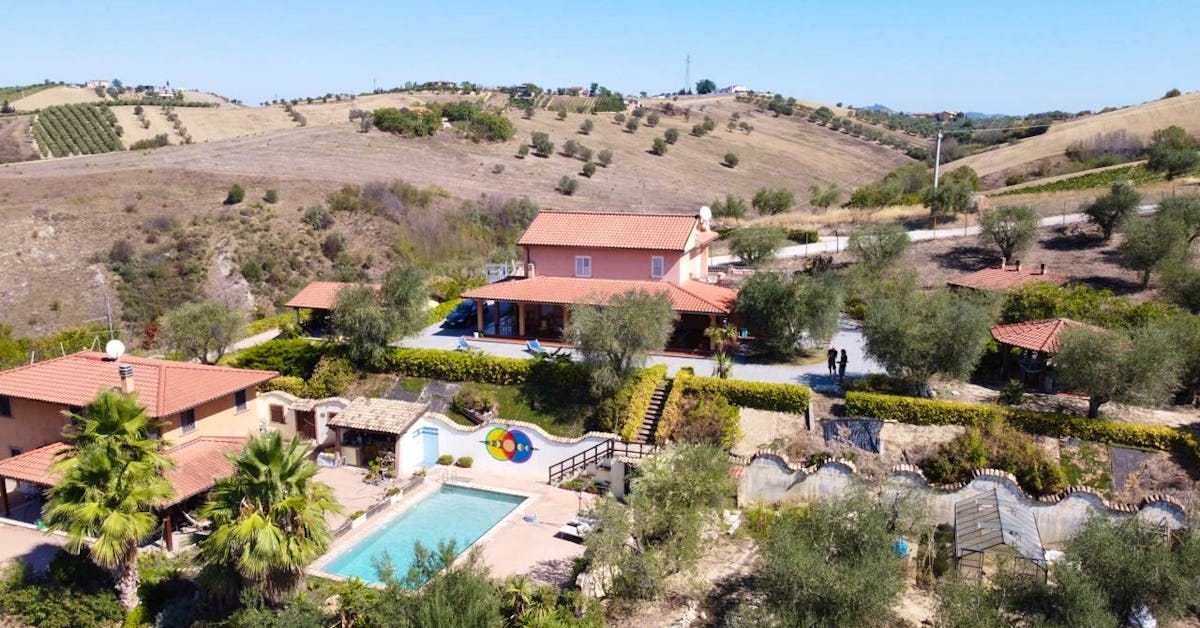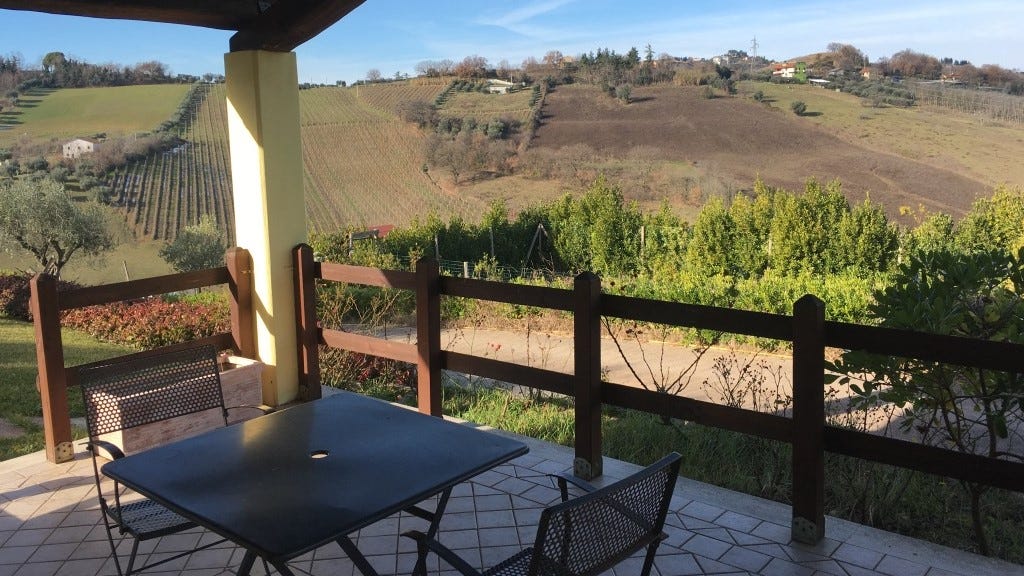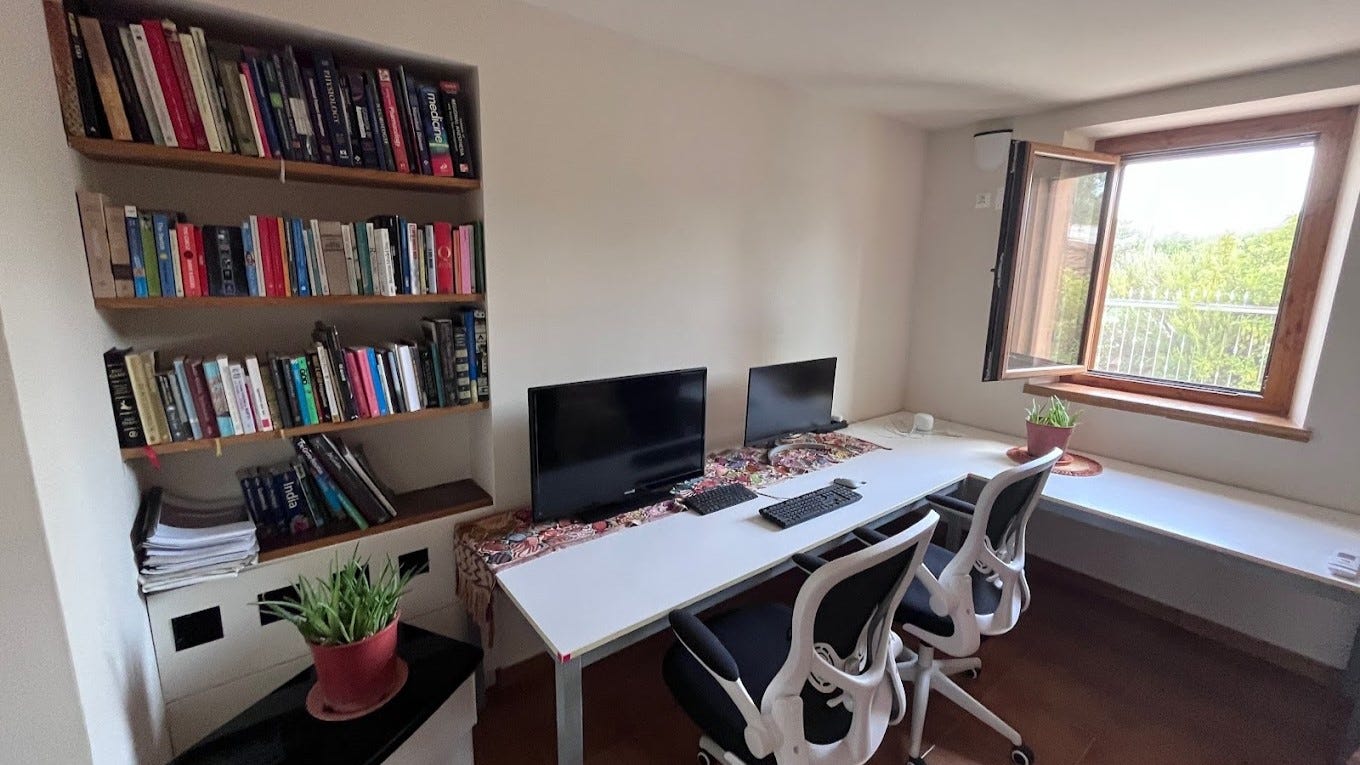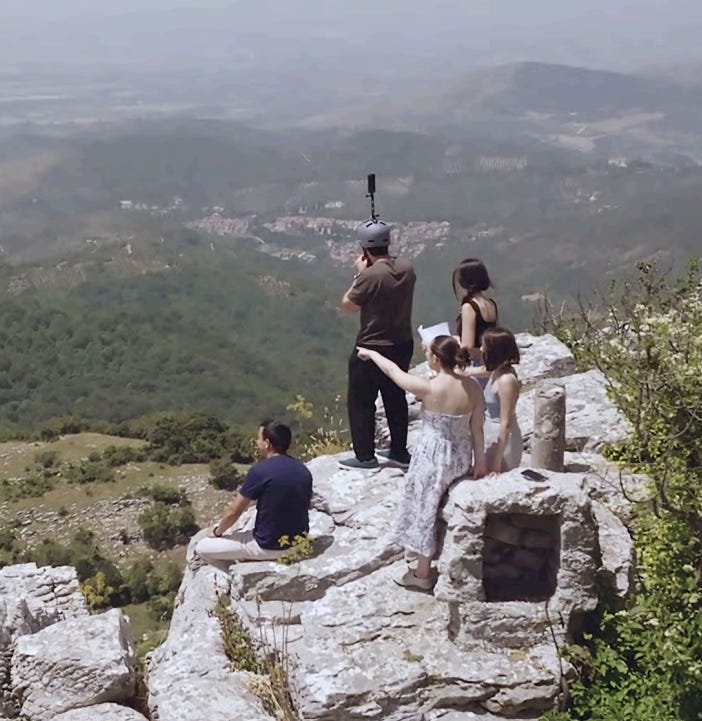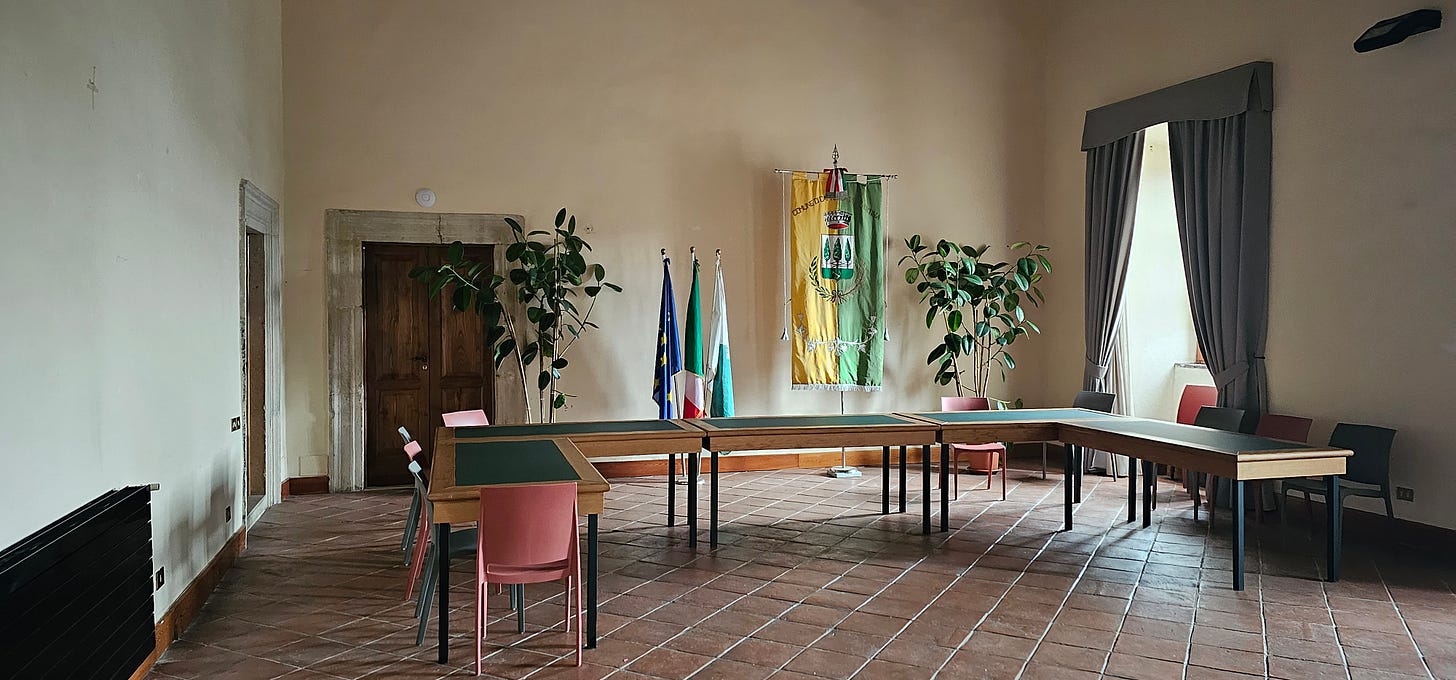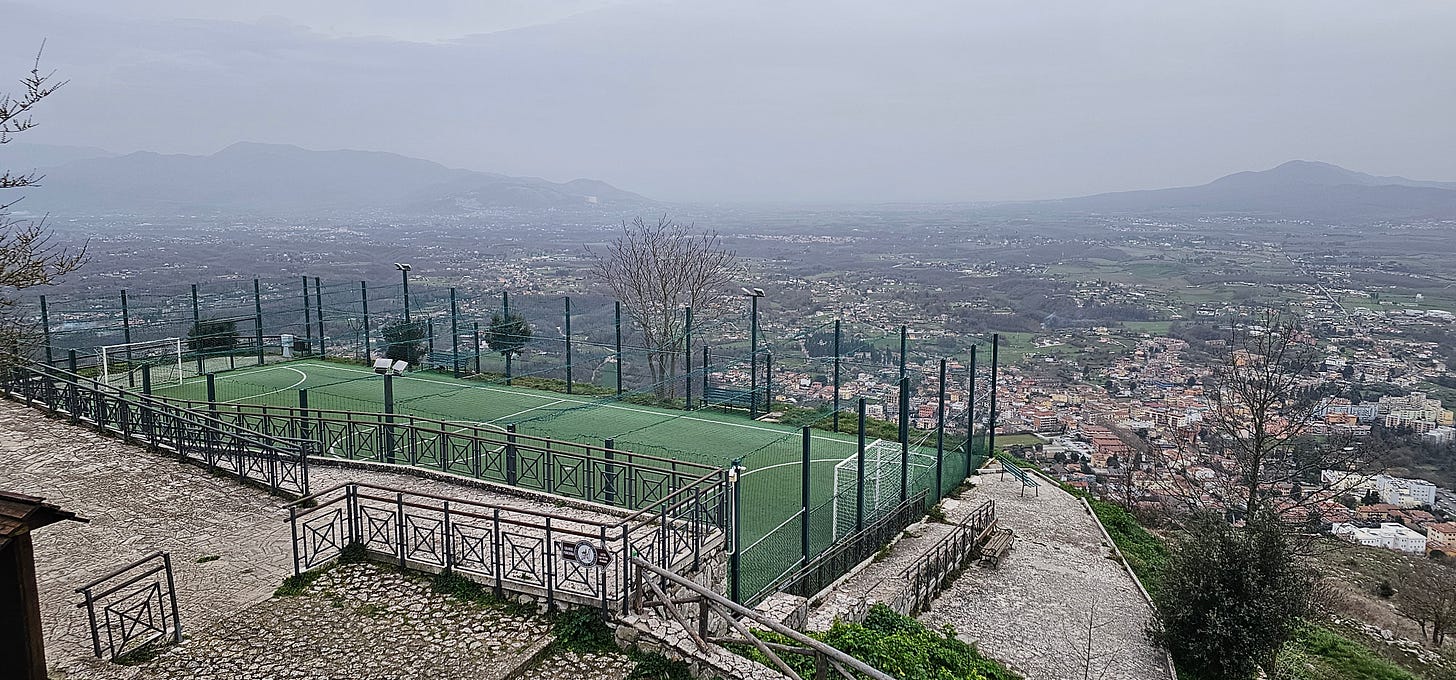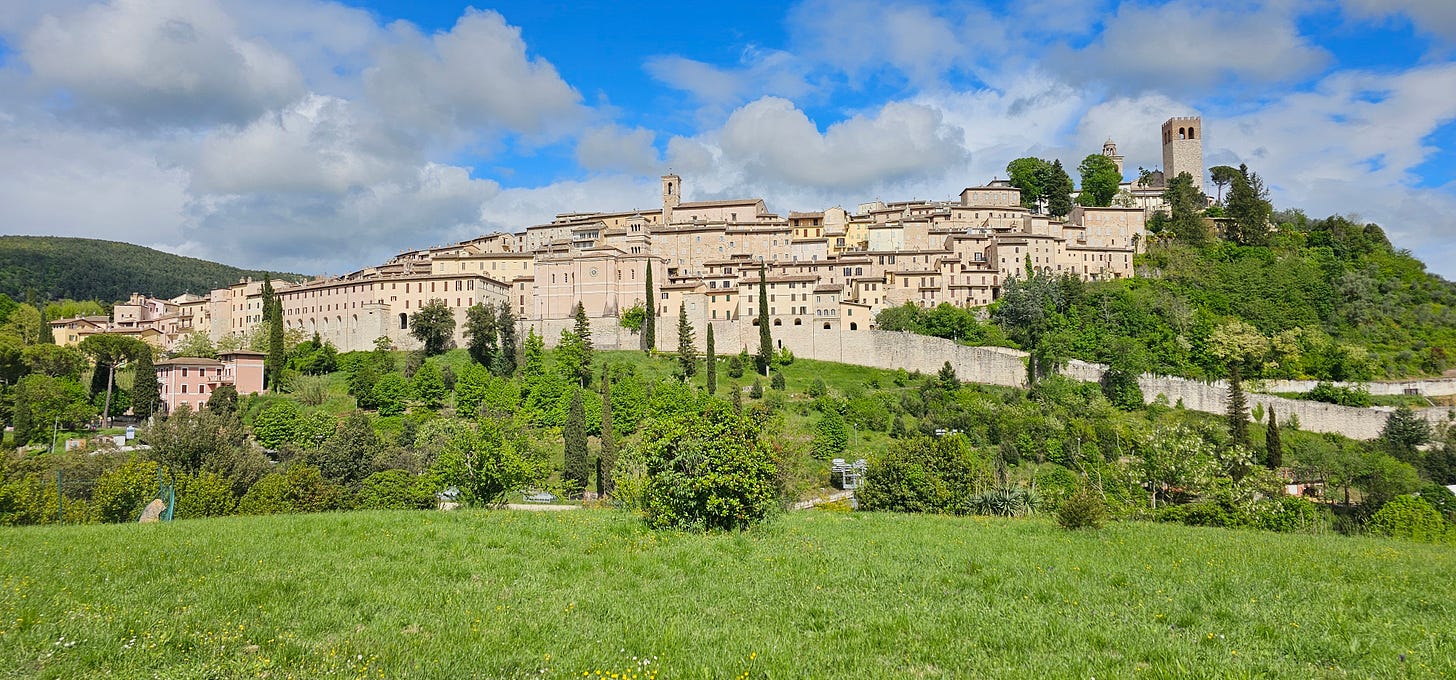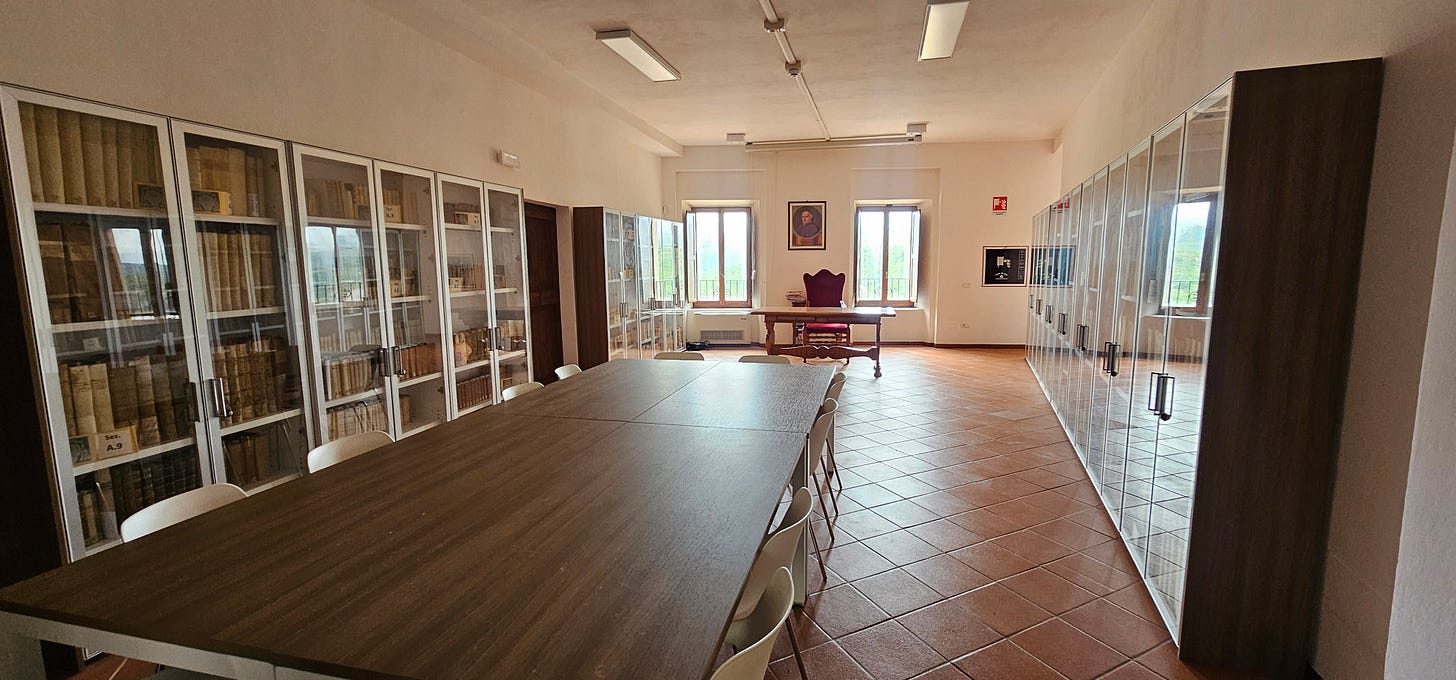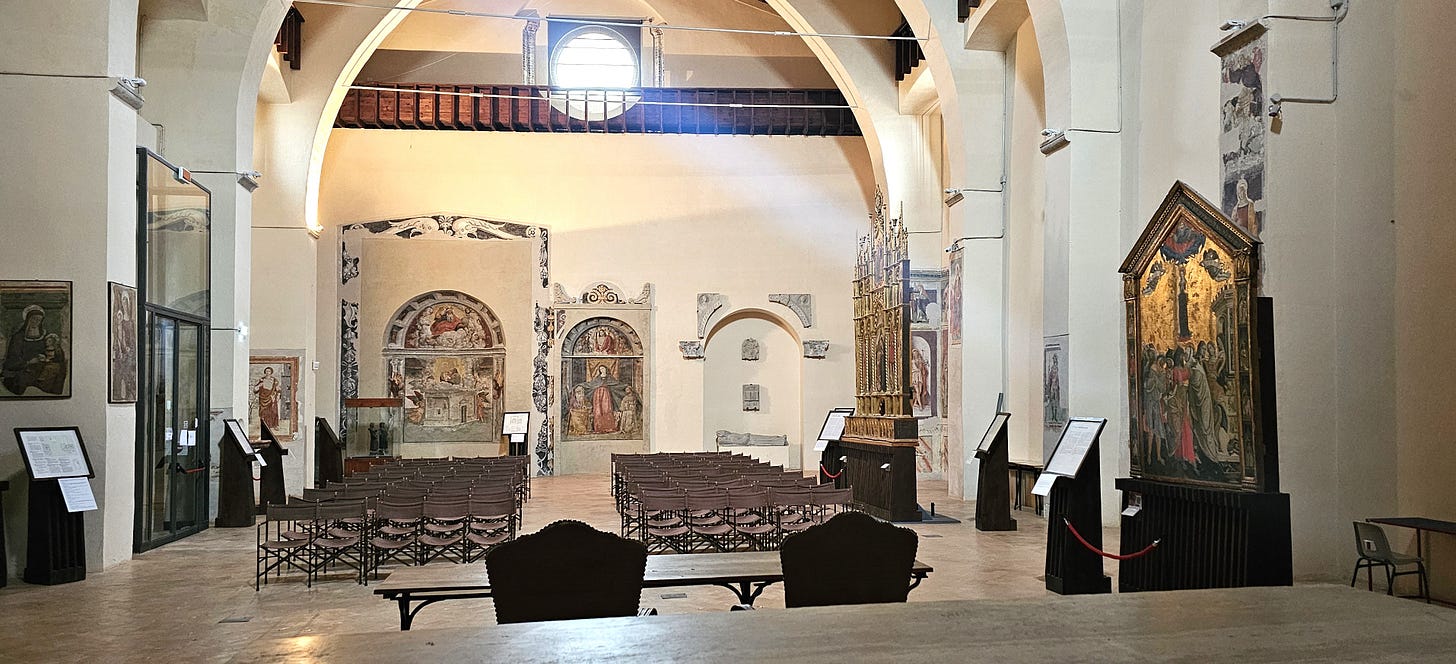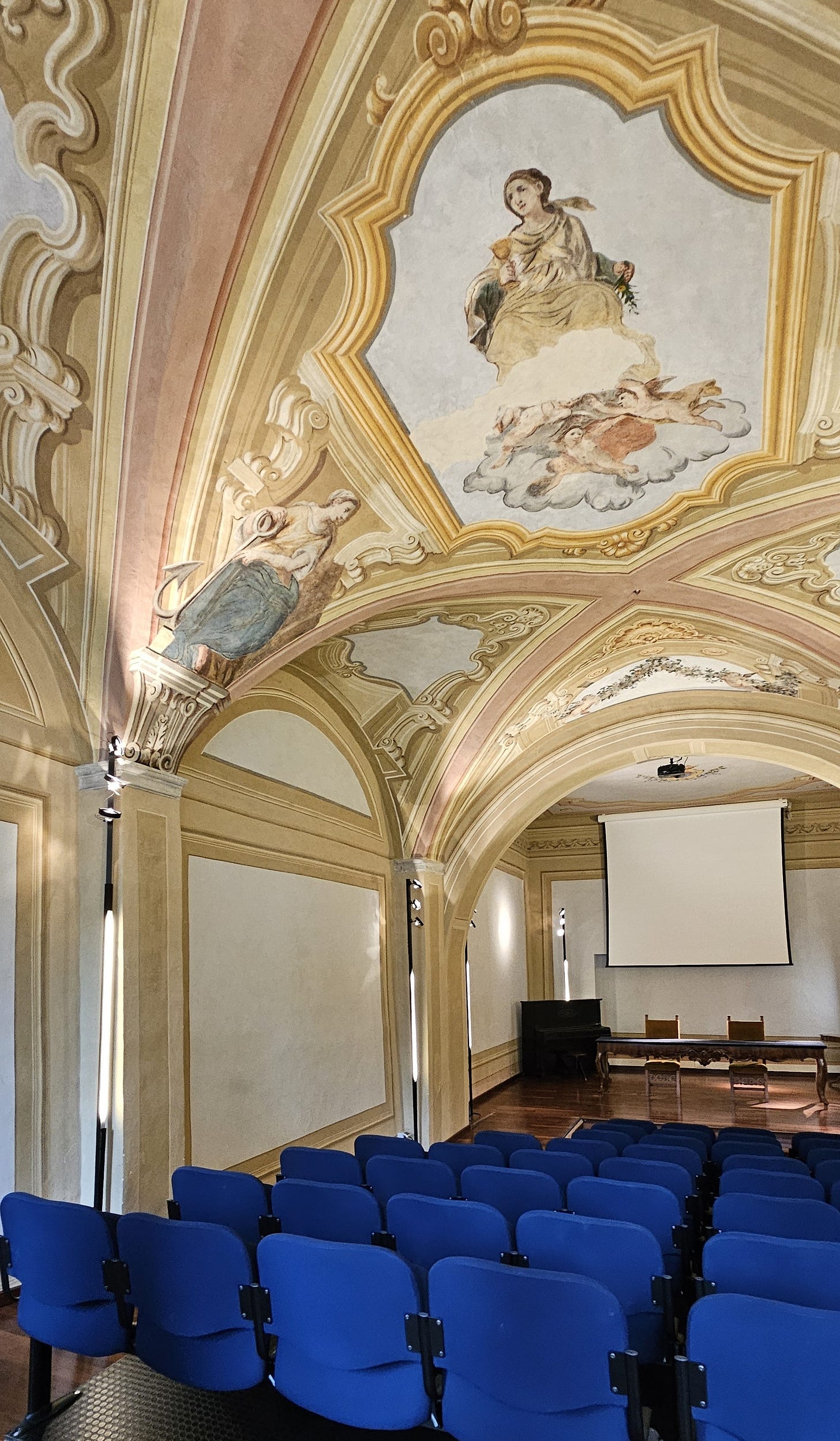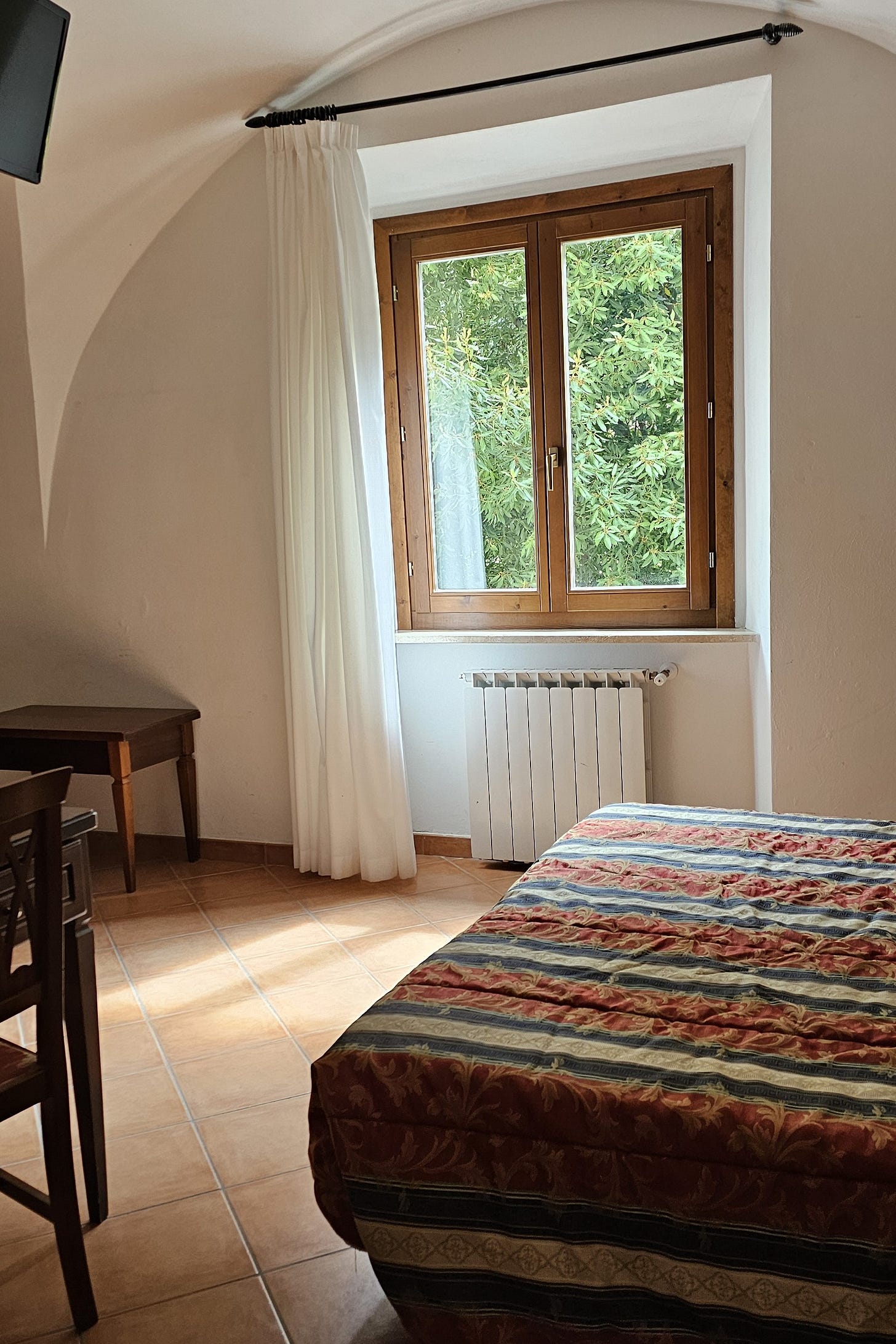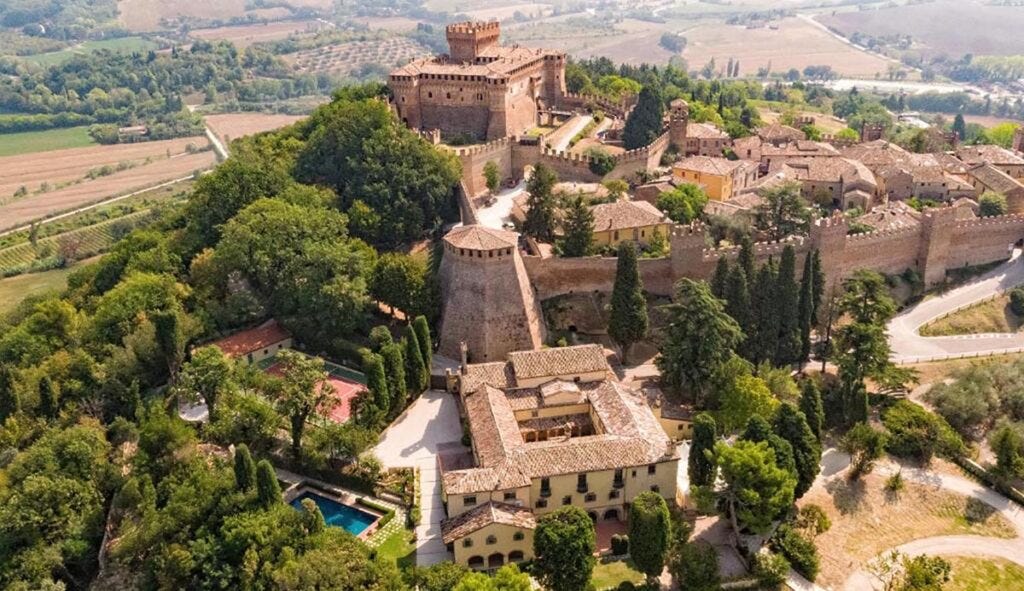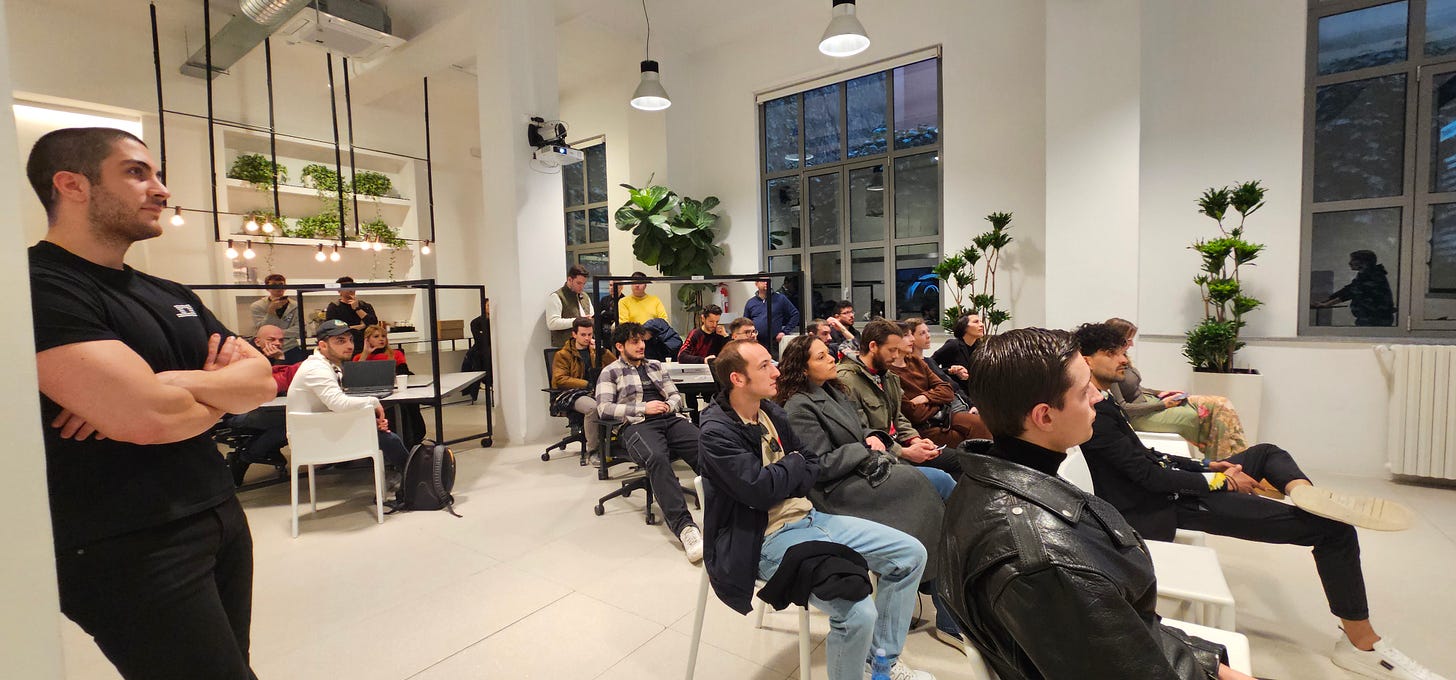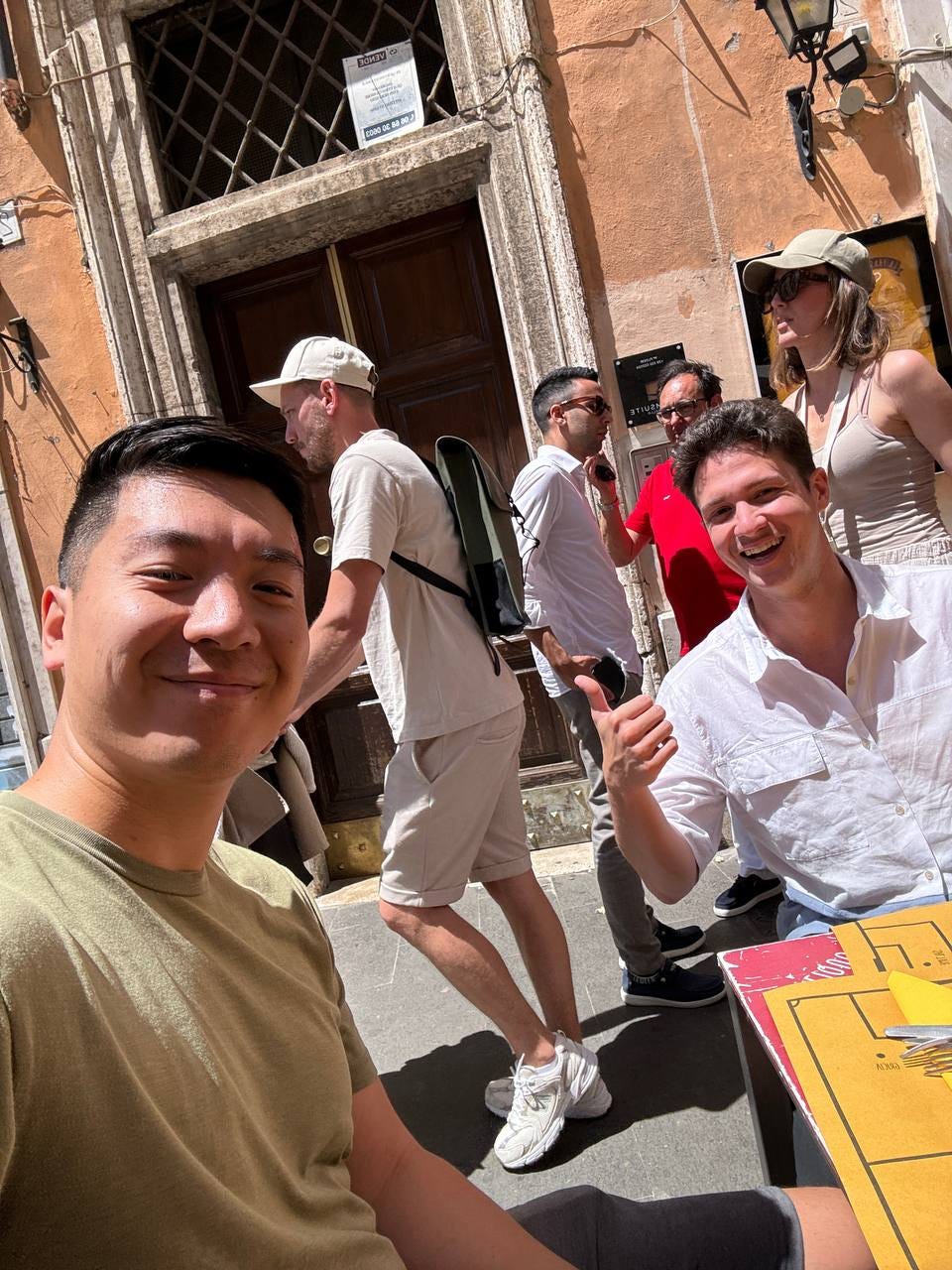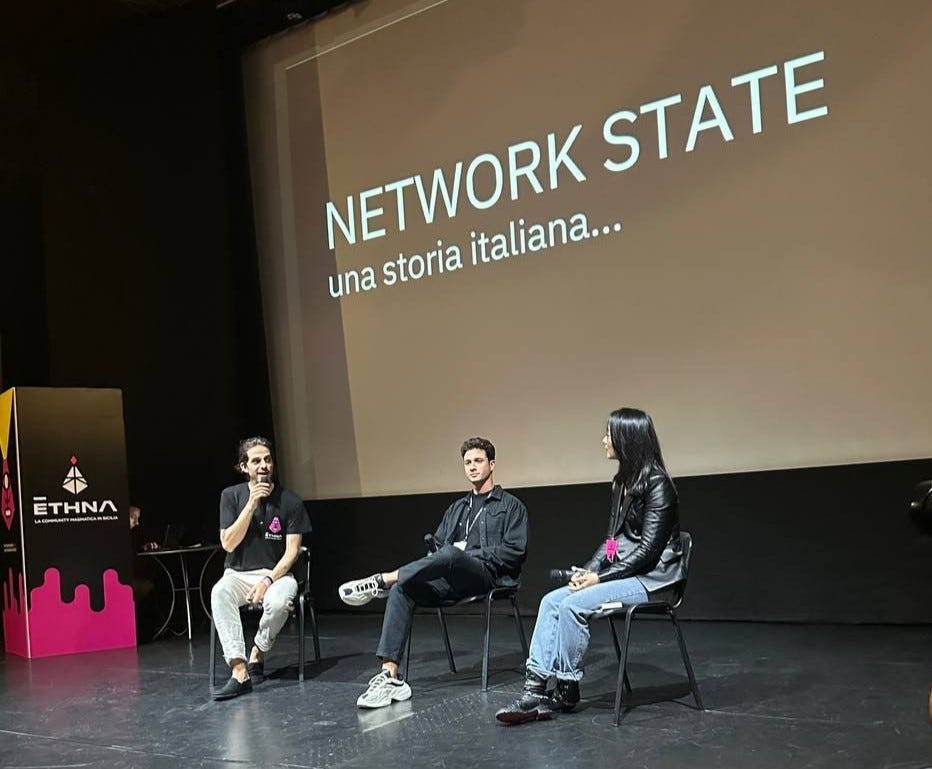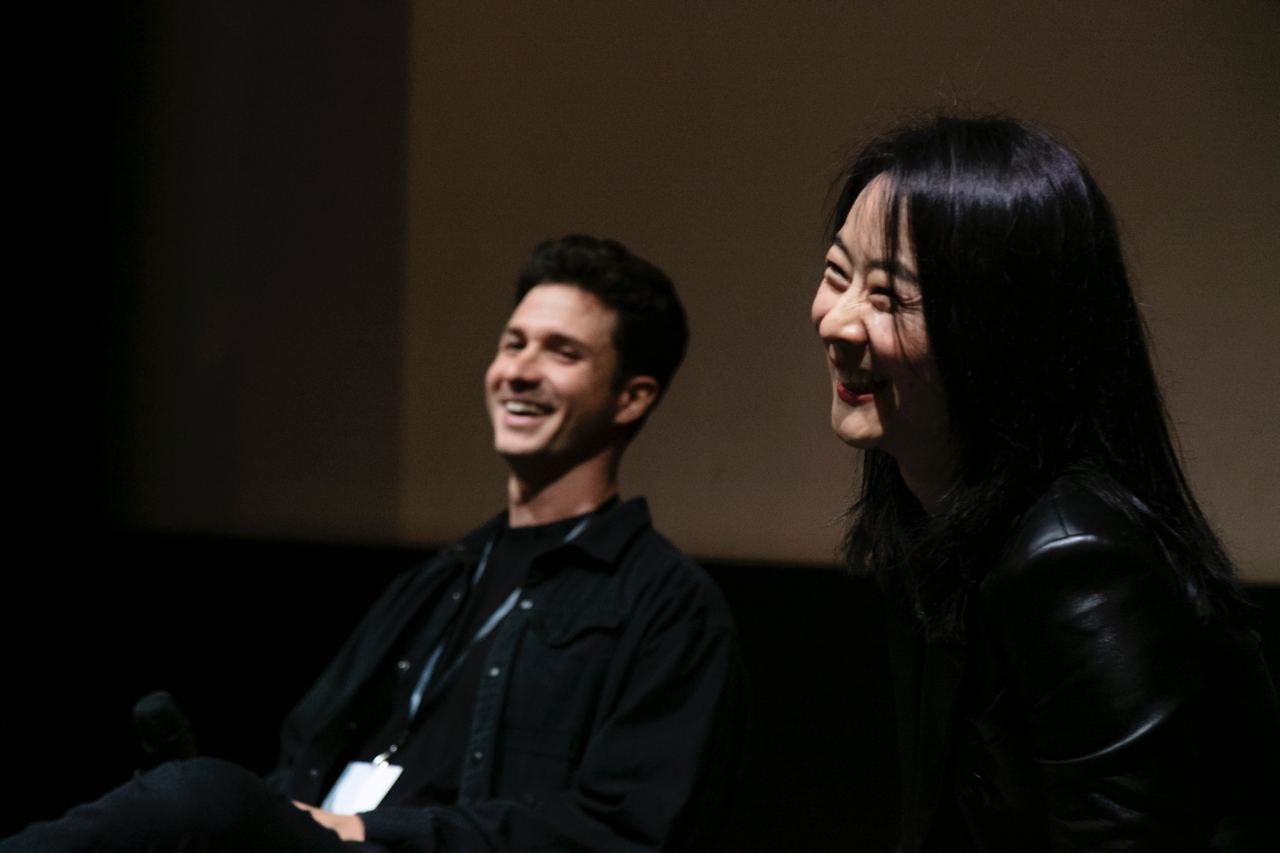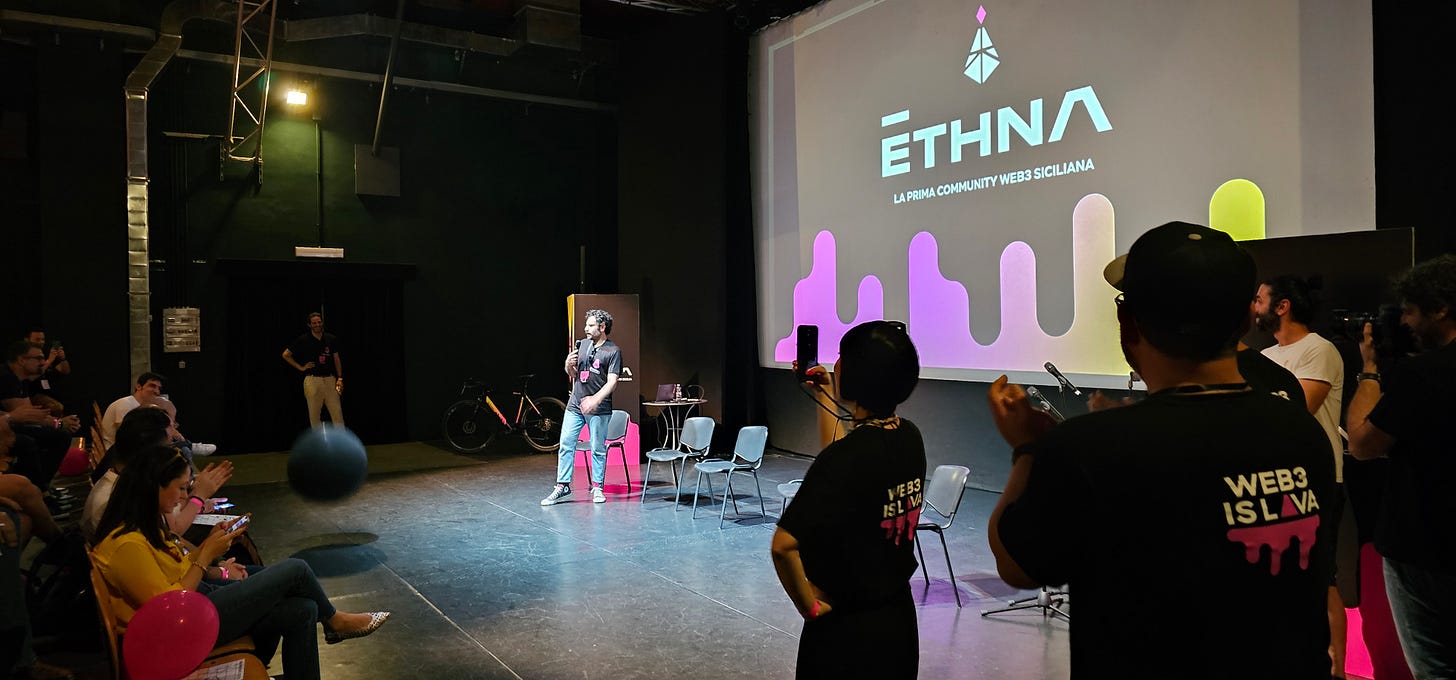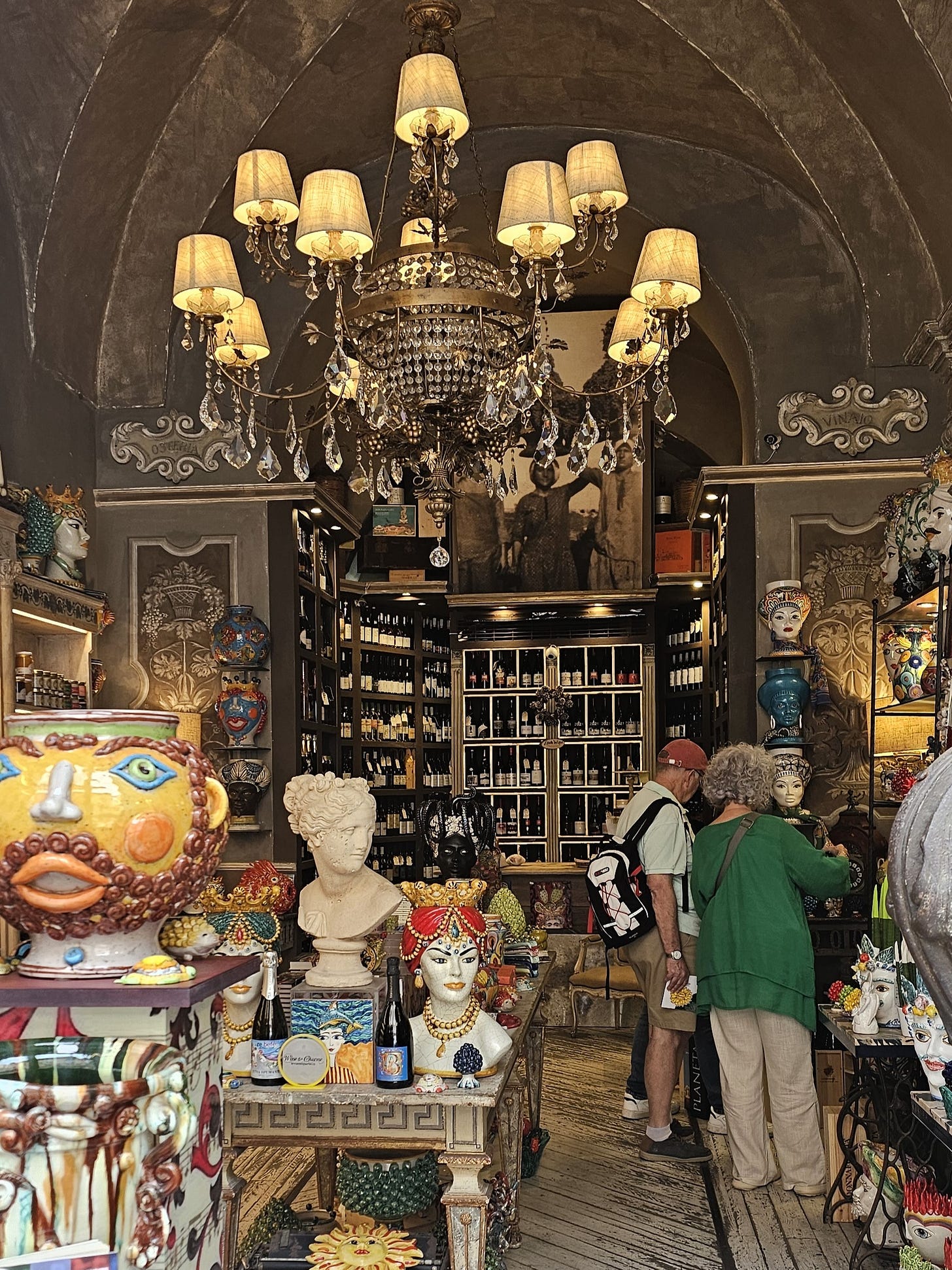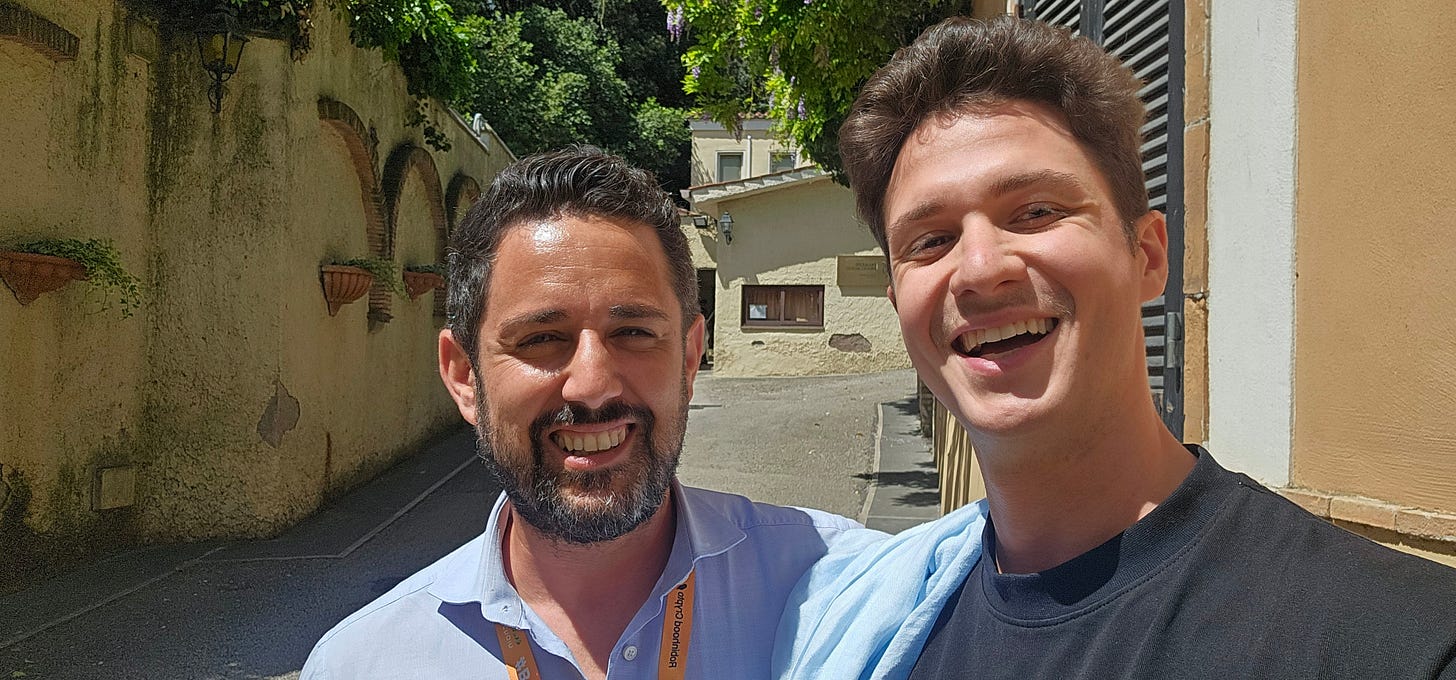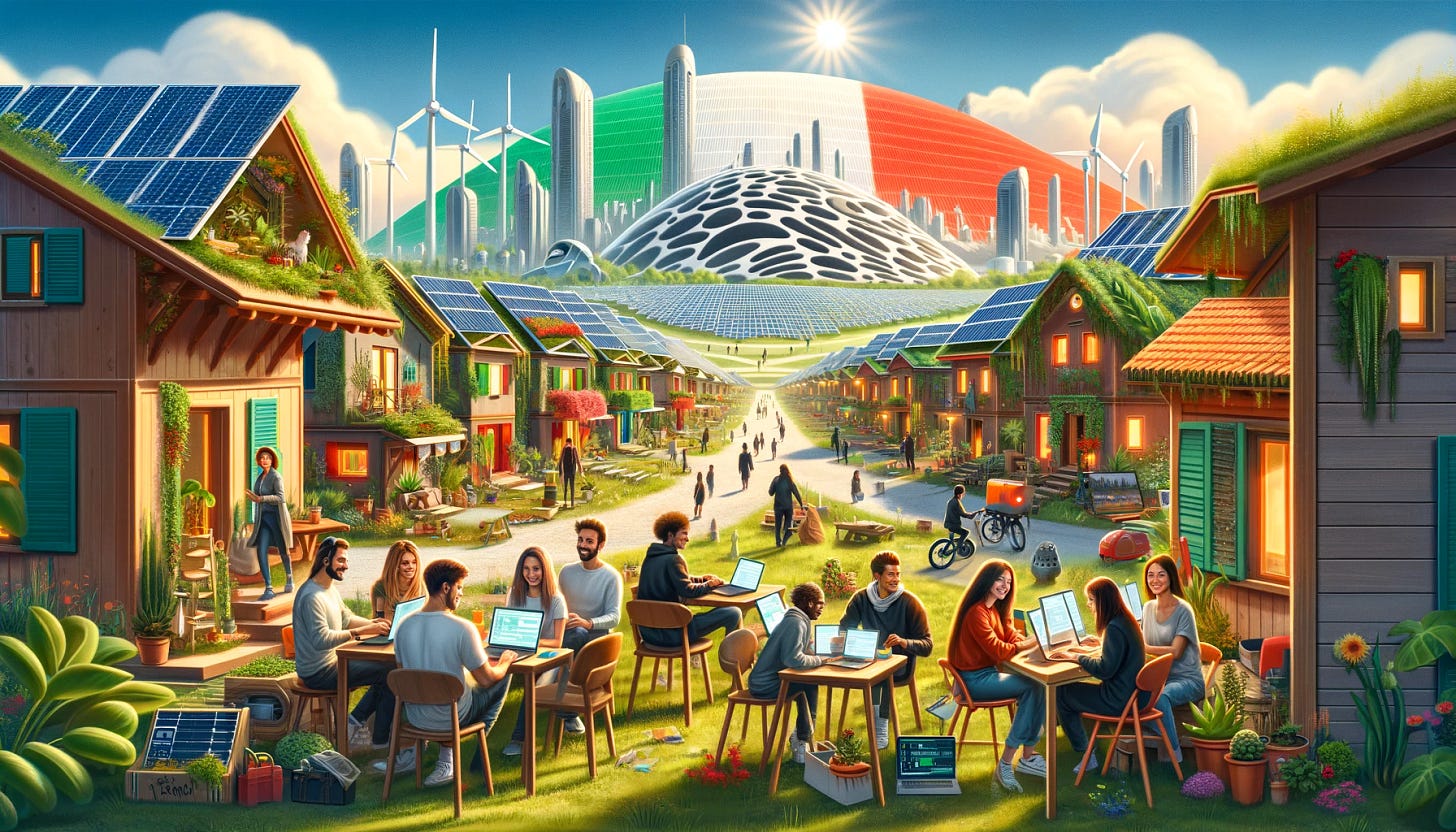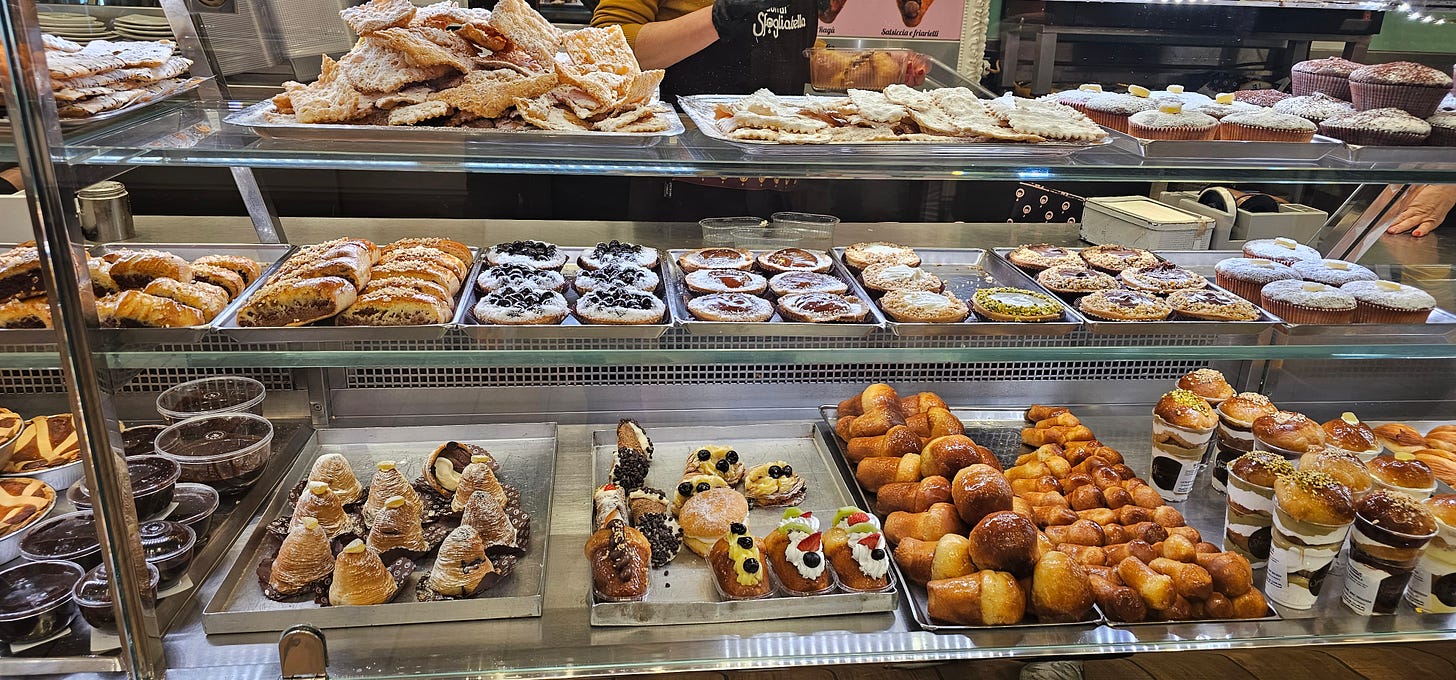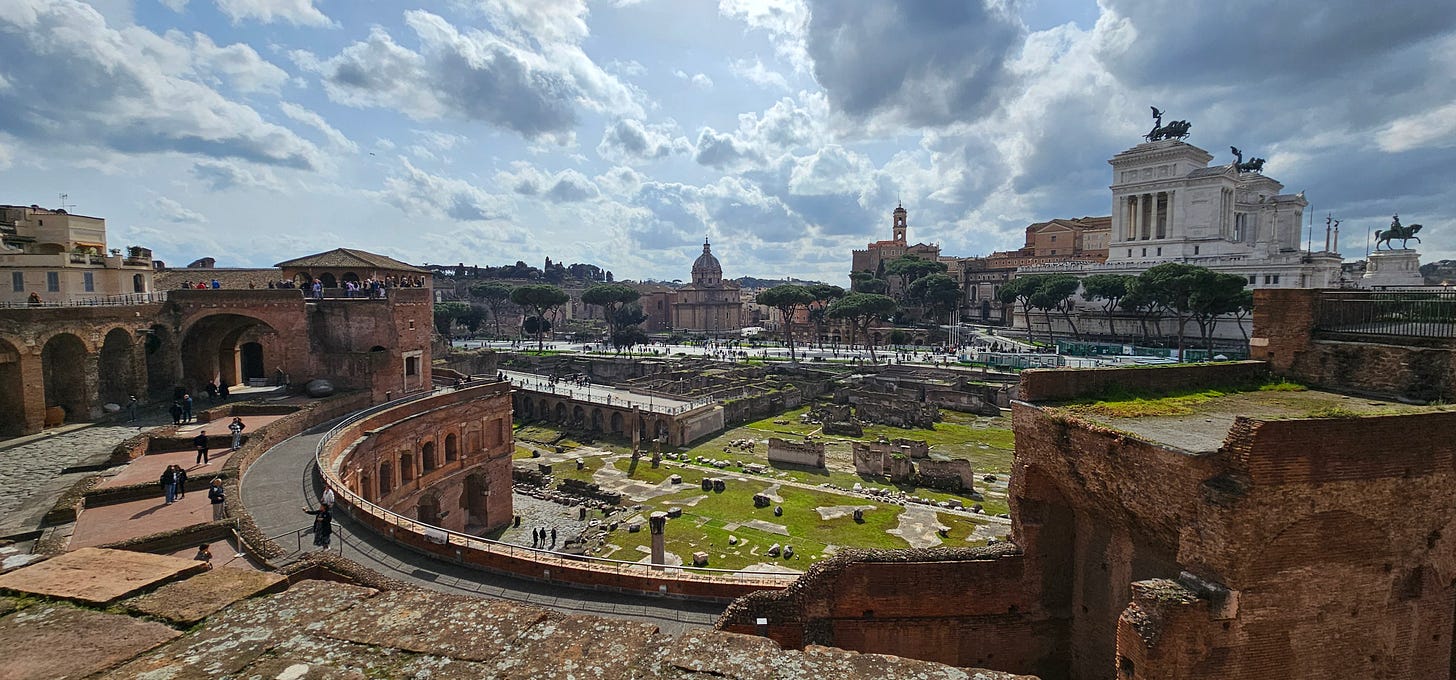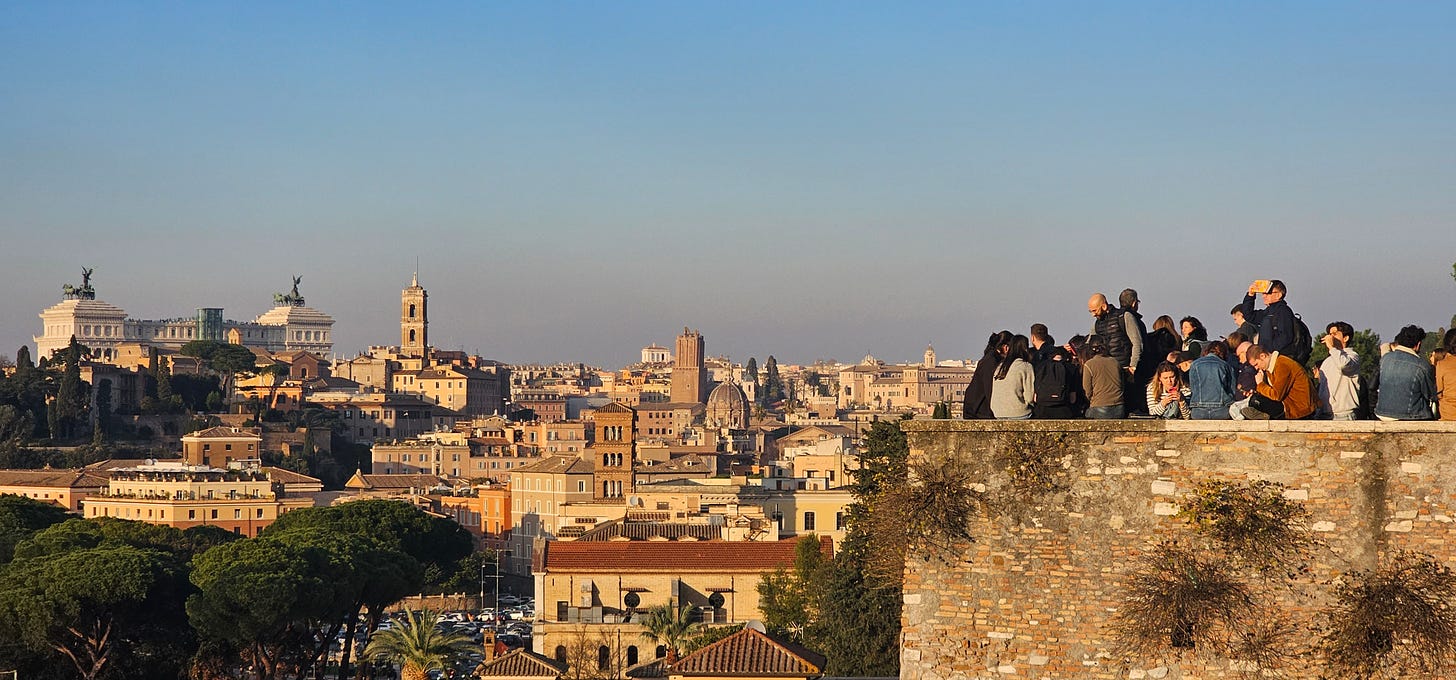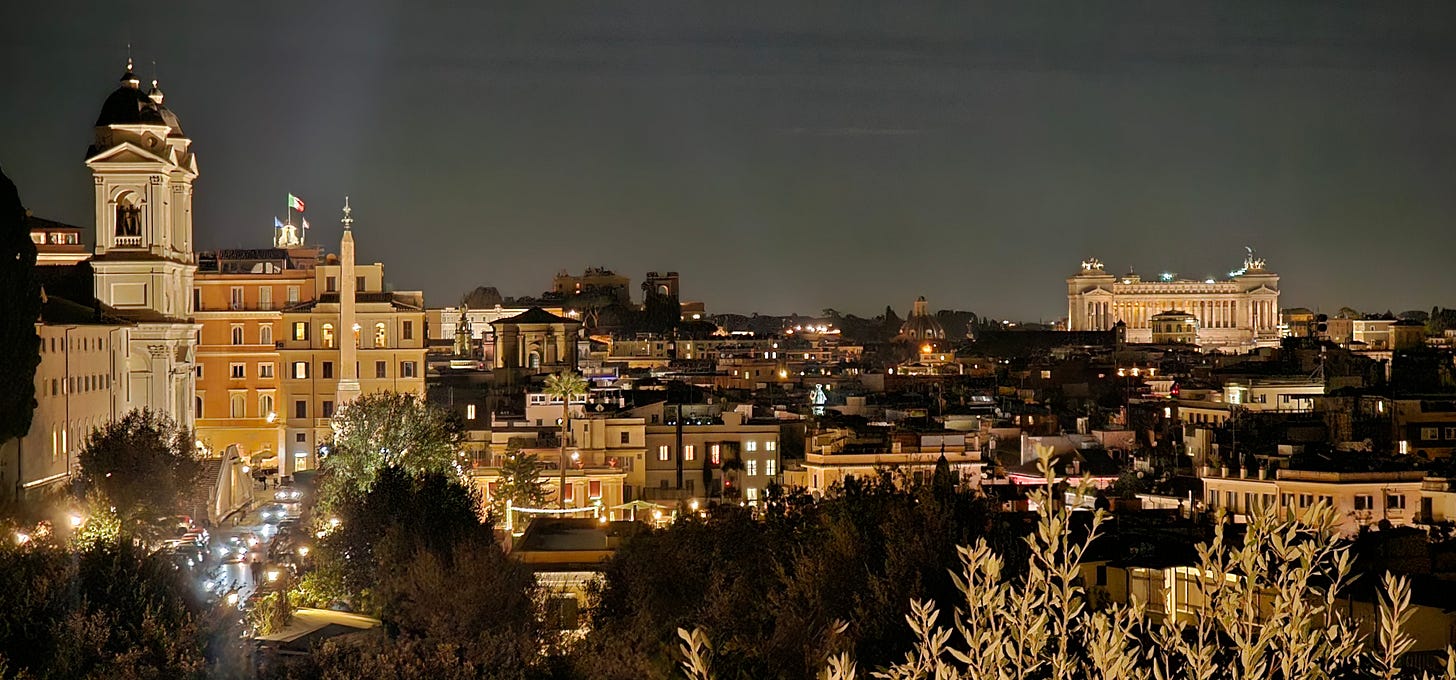In this long post I’m sharing my journey since January 13, 2024, the day when Digitalia was first publicly announced.
What follows is the story of the places visited and people met over the first 5 months of life of this new project and my learnings.
If you’re here just to know how to contribute to Digitalia or to get in touch:
1. Digitalia Contributors Form.
2. Digitalia Pilot Event 2024 → see the end of this post
3. Get in touch: francesco@digitaliavillage.com or join the Telegram Announcements.
First: What is Digitalia today?
Digitalia Village was incorporated as a company in Italy in March 2024.
It was founded by myself, Francesco Vincenti, after working in the tech startup ecosystem of Italy and Europe since 2018, mainly in blockchain, AI, and wearable technologies.
Inspired by Zuzalu, the long-term vision of Digitalia consists of activities that nurture the concept of “The Network State”, such as starting pop-up villages and creating hubs on the territory of Italy that are linked to other nodes worldwide, thereby becoming landmarks and centers of influence to make innovation thrive in social, legal, tech and science fields.
As of 2024, Digitalia is focused on Research & Development and it is leveraging and expanding its existing local & international network & reach.
So far, this research has extended mainly to policymakers, communities, businesses, universities, and real estate partners in Italy who are interested in working with Digitalia.
Right now, the main goal is to keep R&D ongoing by getting funded and onboarding new contributors while running small-scale pilots in Italy.
Our R&D is focused on finding ways to develop and use emerging social technologies for coordination to solve real-world problems in Italy.
Buglist: Problems of Italy
One of my primary motivations for undertaking this research, particularly within Italy, was my desire to explore all existing facets of innovation in my homeland, coming back to Rome after living abroad for the last 3 years.
What I found out is that, unlike what I thought previously, innovation does exist all around Italy. The real issue is that it remains mostly hidden, uncommunicated or miscommunicated, and fragmented in small centers. This perception of fragmentation makes everything less impactful than it could be if there was one place to coordinate knowledge, resources, and tools.
Some can say that Milan already is Italy’s innovation hub, and while I don’t disagree, the goal of this research is not to spotlight what’s already well established, but to look for new models to let additional innovation hubs emerge in the country.
This is why I’m writing this recap: to spotlight local innovation all on a single page and see whether connecting the dots, at least on paper, could be helpful.
I started trying to identify the main issues in Italy that hinder innovation & digitalization and understand their correlations & causes.
What I hope, is that with Digitalia we can bring together a new skilled workforce of digital talents and cutting-edge technologies such as blockchain, AI, & more to develop solutions after this research.
I listed some of these potential solutions at the end of this post.
So here is the Buglist, the main problems that affect Italy:
Aging Population: Italy has the second-oldest population in the world. Just 379.000 kids were born in Italy in 2023, the fewest births since 1861. The average age is 46.6. There is just one solution: procreate.
Bureaucratic and complex legal framework: The main reason that slow down Italian (and European) innovation and adaptation to new business models.
Misalignment between the education system and the labor market: insufficient preparation in schools and universities for contemporary labor market needs.
General lack of digital literacy: Difficulty adapting to Web3 and even technologies considered to be Web2.
Poor financial education and dominance of traditional banking intermediaries. This limits investment in new digital assets such as cryptocurrencies.
Low English proficiency among the population: this limits the ability to interact and share knowledge internationally.
High rate of youth unemployment (21.8%): Young people are struggling to find suitable and modern jobs in the digital and tech sectors. The scarcity of demand and offer of STEM jobs is consequential.
Brain drain: loss of talent due to internationally non-competitive work conditions and salaries.
Concentration of scientific knowledge in universities and research centers:
Knowledge is mostly locked in clubs. There is indeed a growing (not very successful) promotion of “Technology Transfer”, a program to open-source knowledge from universities and share it with startups, since the first research problems that the latter can solve.Lack of young leaders in major companies and public administration: Dominance of older managerial and political figures.
Scarcity of startups and lack of a robust startup ecosystem, particularly outside major centers like Milan.
Lack of acceleration and gathering spots for startups: Although emerging, their distribution is limited. Also, these accelerators and coworking spaces are mostly run by the public sector. Insufficient communication and sharing between hubs and between different levels of the startup sector. There is lack of an integrated network that facilitates collaboration.
Inadequate digital infrastructure in public administrations: obstacles to digitalization of public services.
Difficulty in promoting and marketing innovations: public administrations and large companies show significant deficiencies in marketing and communication. Apart from a small number of exceptions, websites generally feel old; social media communication is marginal and unclear and doesn’t reach the right audience.
Significant gap in communication between citizens and public administration: problems with transparency and accessibility of information.
Shortage of human capital in less urbanized areas. This contributes to depopulation and the decline of local activities.
Limited access to the internet, especially in remote areas, with deficiencies in fast internet and phone services.
Significant regional disparities: persistent differences in development level and opportunities across regions.
Inefficiency of public transportation: unconnectedness between the more industrialized north and the more isolated south. Even if the train network in Italy is pretty fast and good overall.
Now, how are we trying to tackle these problems and why?
The Start
In January we had over 200 people come to the first Network State Meetup in Italy.
On this day, we wanted to launch the discourse on how an Italian node of The Network State would look like, formed by the coordination of the leading communities that have been nurturing Web3 in Italy: Sewer, SpaghettETH, ETHMilan, ETH Rome, NapulETH. (see below the Map of Italian Web3 Communities).
I wanted to organize this meetup after attending The Network State conference in Amsterdam and being a resident at ZuConnect in Istanbul in November ’23.
Getting to know Balaji and Vitalik gave enough input to start an experiment in Italy.
Together, we started an open discussion about the opportunities & challenges of the past years and which synergies could emerge from a more structured coordination, where sharing a common ground of activities & goals could accelerate our work on the territory in 2024.
The main message I wanted to get out in January is that Web3 communities can now serve local communities’ needs, becoming the center of aggregation for anything that regards the digital administration of startups & hubs and their accelerator process on the territory. Web3 can now bridge its tools from the network to the real world, to the culture, to the territory and to meet the local needs.
That’s I believe to be one of the highest purposes of this technology, born with Bitcoin back in 2009.
What’s the result at the time of writing this a few months later?
Compared to the previous year, we significantly increased communication among all Web3 community leaders; it is now occurring almost daily. We also assisted each other with securing builders, sponsors, speakers, and venues, primarily for our in-person events.
The TNS Italia Meetup Recap: X Post and Video.
After exploring various approaches that are leading to the emergence of startup cities and crypto cities, I felt from early discussions that in Italy, such innovation would likely involve collaborating and blending with the existing model rather than establishing a completely parallel structure like a SEZ or ZEDE.
Even if in Italy we have two examples of states within our borders: the Vatican and San Marino, it doesn’t mean we need to aim for a third one. It would be pure speculation to think that yet, I’m rather investigating how we can reinvigorate institutions from within.
Zuzalu Q1 Quadratic Funding
Digitalia was accepted into the QF promoted by Zuzalu on Gitcoin as part of the plan to “Open the Frontier” supporting 30+ spinoff activities and tools for Zu-Villages.
Digitalia got ~ $ 15K to fund the first phase of research.
So far I spent ~ $ 6K bootstrapping, without tapping into QF funds yet.
Most went on location scouting, legal expenses, company setup, software tools, and a couple of consultants for fundraising applications, project management and brand identity.
Joined Zuzalu.City
I joined Zuzalu.City as a contributor in Communication. Such a great experience to work daily with QJ, Executive Director at Ethereum Community Fund & leading Ops at Zuzalu Software, and with the rest of the team while re-learning the core values of blockchain, this time while building an Operating System for new civilizations to thrive and empower communities to gather and organize in real life.
Since I joined,
- We started using AI in our daily operations. It is extremely helpful to elaborate content from our meetings, and to coordinate internal resources & tasklists.
- We started recording tech insights with the core contributors and community projects that are building infrastructure and apps for Network States.
- Zuzalu.City is now publishing weekly articles and newsletters to help communities and builders understand the goals of co-building this open-source project.
- ZuChat, a podcast, is now available on the main streaming platforms.While developing an interoperable infrastructure and new features to support the ecosystem, we’re focused on onboarding new projects to co-build with like recently Lemonade and LottoPGF.
You can join the Guilded to read more and get on board whether you’re a developer, a product, operations or a a communication person.
To get to know more about the software tools, Community Tooling Feature Sets.
Digitalia Brandkit
There were 3 versions of the logo from 3 different designers (thanks Mattia and Olga). Not yet communicating everything that Digitalia represents but it feels like we’re getting closer to it. Looking for feedback.
Opened a SRLs
I registered the company in Italy on March 15 as an SRLs under the name of “Digitalia Village”.
The process, with a good accountant and lawyer, took from 4 to 6 weeks. Most of this time was between getting the appointment to actually having the registration and opening the bank account. A couple of lawyers experts in crypto suggested Qonto for the company bank account in Italy and keep the offramp/onramp on exchanges.
Thanks also to Marco Tullio Giordano and Stefano Capaccioli for advising. They both have been pioneer lawmakers in digital assets matters.
I’m now also considering opening a new nonprofit entity in common with other shareholders to pursue specific objectives of different entities, but this is just in the research phase as of today.
Application for “Creative Innovation Lab” EU Grant
Applied; results will be announced in October by the European Commission.
Mapping Innovation Hubs in Rome
Make people meet in real life. More.
I had a packed calendar of events to attend in Rome. Since my return to the city last November, and since starting with crypto, I've rarely participated in local events. Additionally, aside from institutional or artistic events, few communities host regular meetups, and those that do often are not making them really actionable, apart from Urbe.eth which we’ll mention later.
Startup events don’t happen often and pitch contests are almost non-existent unless they are within corporate-sponsored R&D labs or accelerators for internal startups.
For me, the main issue of these hubs in Rome, is that they are not acting as a real landmark on the territory but often more like real estate managers that hold the keys.
The majority of places in a city are shops where we spend, but not places where we actively create. A coworking space is not enough. People often just come there to work alone in a shared space.
I would like to see more places where people can align and work together on a public good, and contribute to the area where they live.
I believe that these physical hubs would be more effective and beneficial as centers for local action, connecting, coordinating and educating professionals and companies.
Each should have a group of people in charge who know the local space, oversee resources and information and can quickly connect these with new people and projects approaching these spaces, stimulating networking and co-building.
This would be empowered by a Web3 digital infrastructure capable of organizing people and resources in real life. Plus, these hubs across Italy should share knowledge and best practices on a common network to accelerate each others.
I do see now, that we spend a lot of time in the digital world, that the physical world should maximize the value of relationships and connections we can make in a single place at a single time. We can use more AI for matchmaking in real life, in real time.
Here is the list of Hubs in Rome I visited so far.
City Garden, Rome
Over these months I started to look at everything around me with a lens of regeneration and thought “Why not start from my house to gather builders together?”
My neighborhood in Rome is called “City Garden”. It is truly an area on its own, immersed in nature. In the 1920s the Urbani family started to build some picturesque villas which look the same to this day. Everything from markets to gyms, parks, shops, pharmacies, public transport, restaurants and pubs for nightlife is at a walkable distance of 10 minutes. Not being in the center of Rome makes it ideal to stay away from traffic and creates a small town with its own vibe.
City Garden miss a coworking/cobuilding/coliving space.I could also start from here. I have a few family apartments in the area, and with others from friends, this could help start a diffused coliving/cobuilding initiative of up to 20-30 people.
The City Garden Office
I even ventured into negotiations with a villa which that became available for rent.
It’s too expensive for now, but with the right funds, it would be ideal for 30-40 people to work, host courses, run an audiovisual lab, meet up, and do other similar things.This service would allow startup founders to use office spaces by negotiating a part of their business to the real estate owner as collateral in a marketplace. Instead of getting funds, you get an office/lab where to accelerate operations.
This marketplace can use decentralized systems to provide security. Real estate owners, in return, can own a share of the startup, reducing risk through smart contracts.
I’d like to see more of these apps that create a market for RWA (Real World Assets) by tokenizing the property and enabling a new form of rental and asset sharing that was previously impossible.
Italy is the land of real estate abundance, more solutions are needed in this area.
CTE (Home for Emergent Technologies) was created by the City of Rome to offer a free coworking hub to entrepreneurs and startups to work and host events while receiving acceleration and mentoring for their projects.
I came here for a meetup promoted by RAFT: Roma Agri Food Tech as part of a tour across Italy, and Posti, a company that uses blockchain to track the production line of food products by well-known Italian brands, like Peroni.
This is a prevalent use case I’ve encountered among Italian companies implementing blockchain technology. I believe this is primarily because industrial agriculture is among the leading industries in Italy.
I met valuable startups, and among all, The Circle is the one more worth noticing.
As usual for these kinds of events in Italy, the participants are primarily over 40yo and there are very few young startups.
I luoghi dell’innovazione - Hubs of Innovation
A new Map of Rome that spotlights the places of innovation in Rome is in development by Rome Future Week (RFW).
I met Michele Franzese, an entrepreneur who founded RFW, a diffused event to which I give a lot of credit, happening in hundreds of locations in Rome at the same time, shining a light on the innovation places in the city.
A new interactive map, which is under development in collaboration with the City of Rome itself, it spotlights the innovation hubs in the Capital that are the most active. This somewhat reminded me of a Zuzalu Map being built during the hackathon at ZuConnect Istanbul to track the places of interest in town.
You can find all the other Innovation Hubs in Rome here. I visited almost all of them during these months.
Dialogue with Institutions
This has become my newest “life task” after Digitalia. Previously, I primarily interacted with companies and seldom engaged with institutions.
This year, I began to participating in institutional events across Italy. The atmosphere is quite different from a Web3 event. Also, speaking Italian is essential for access.
Anyway, I was generally welcomed and seen as the young curious kid with an original idea and, as often in Italy, I was at least 20 years younger than anyone else in the room.
Some meetings with representatives from the national government have apparently opened more channels for presenting practical web3 solutions to Italy’s problems.
Lazio Innova Spazi Attivi
One of my recent discoveries was the network of Spazi Attivi (Active Spaces) of the Lazio Region, specifically a branch called Lazio Innova.
Even for someone who worked in this industry for years, the existence of these places was completely unknown. This, once again, showed me that the biggest problem lies in communicating and promoting these opportunities & projects to citizens, students, & entrepreneurs who could benefit from them.
These hubs are meeting places open to individuals and communities, facilitating collaboration with local authorities, businesses, industrial consortia, universities, and research centers. Here, one can access information and services for businesses, startups, training, guidance and employment.These spaces are born with the mission to match the development needs of the territory and foster the creation of innovative startups.
It’s happening, but with an old approach and slow manner that would drive more impact if more modernized and agile.Currently, there are 10 Active Space locations in the Lazio Region, each with a predominant specialization: mechanics and automation systems, agrifood, energy efficiency, life sciences, space technology, electronics, games, culture fashion and design, and tourism.
I’ve been to 4 of them:Viterbo - Spazio Attivo
Probably the first real open dialogue with institutions about Digitalia.
I found the director, Giulio Curti, to be open and approachable, telling me that we could use the space itself as a coworking spot for a pilot run, supported by a multitude of lodgings in the form of diffused apartments across Viterbo, managed by the Stay in Tuscia association. The price competitiveness of Viterbo is good: it’s at least half the price of Rome. By being little more than 1 hour away from Rome and by being home to about 100,000 inhabitants, it offers a very good balance between a metropolis and a small town.
I also know that coliving activities, mostly art residencies managed by Massimiliano Capo, who opened me the doors of Viterbo, are frequently hosted in town and drive attention & promote international tourism.
Viterbo is famous for being the temporary residency of the popes in the 13th century. In one of them, Palazzo Priori, I got to know Archeoverse, a project to 3D-scan and digitally render all monuments & historic buildings of Viterbo. It was launched by Sapienza University and its laboratory Digilab, along with some members of the local government.
This is a digital application I’ve seen many times in Italy and, with all the monuments in this country, a clear and purposeful use case for this technology can create quite a number of jobs. Let’s just hope we can go further than just “making a metaverse” out of it.
Zagarolo - Spazio Attivo
The castle in the hills I didn’t expect.
When dreaming of a place in Italy that would have mixed tradition and innovation, perfect for an international community, I imagined something like this. A castle-village, immersed in nature, 1000 years old, coworking spaces with frescos, classical sculptures and art, fast internet, neon lights and views of the valley.
If this town had increased transportation and had more lodging available in the historic center would be a no-brainer for a coliving pilot. Today I found just a pretty good housing option provided by WikiHostel.
The director of the Zagarolo Active Space place is Berenice Marisei, who was really fast in opening me the doors to her territory by introducing the main businesses and projects.
Bracciano - Spazio Attivo
The food innovation lab.
This Active Space is an R&D lab for agritech startups. Bracciano is a famous castle on a lake and a popular retreat for Romans seeking respite from the city. It keeps ecological significance, but for now is a bit unconnected to host pilots and activations that match Digitalia needs.
Tecnopolo Tiburtino - Spazio Attivo
Aerospace Innovation Day.
This is the biggest of the Lazio Innova’s Active Spaces and is vertically focused on aerospace applications, which si one of Italy’s most active industries.
I learned the many hierarchies of Lazio Innova and the Lazio Region in one day, at least 6 grades of decision-makers and started to sense the bureaucracy complex machine.
Talking Aerospace, last December I was part of the New Space Economy Forum at the Rome Fair promoted by Fondazione Amaldi, as the only startup in an event of seasoned projects.
At the time, I was collaborating with the team from Mindtooth (Brainsigns), showing an ECG that shows work capacity & stress of astronauts by reading their brain waves while executing specific tasks in space.
NEXT Generation EU: Budgeting and Funding the next companies
Attended at the Chamber of Commerce - Rome, center.
AI for Italy event, AGID, Italian Department for Digitalization.
Attended in Borgo Santo Spirito, Rome.
Municipality of Frascati
During this research period, I became closer to this institution than to others. Davide Coni is the kind of person you want to engage within an institutional settings. He is an independent artist who also organizes events within the local administration and is very open to dialogue and innovation. He makes things happen. Frascati is a town just 20 minutes by car from Rome and 30 min by direct train, known for its dense history and beauty.
Frascati is celebrated for its stunning villas dating back to the Renaissance, which wealthy Roman families built as summer retreats for the aristocracy and even for popes. The town is also renowned for its verdant vineyards that produce the famous Frascati wine.
Historically, everyone has wanted to own a building here.
Moreover, it offers the best views of Rome: from certain spots, you can see both the city and the Tirrenian sea.
I have great stories to share about my time in Frascati.
Trying to summarize the next pictures, here are some key takeaways.
- I lived a few days here, to find out how would the town fit for the purposes of Digitalia and the lifestyle of a digital nomad. The review is 3/5. This is based on cost, fun, price, food, English speakers, community, nightlife, coworking, startup presence, and more factors (see more in NomadList). I think that generally, apart from Milan, Rome, Florence and the main cities, that’s the average score I’d give to active small towns like Frascati. Which is not a great score, but can have marginal growth if things are done right.
- Found the best coworking in Mura del Valadier. It is a restructured old castle by Frascati Scienza, and is now a place to host hundreds of people to work with high-speed internet. Frascati Scienza is a research consortium created by the leading research institutes in aerospace and physics who I got closer to.
- Visited almost every villa: Ville Tuscolane, Villa Mondragone, Villa Cavalletti. With each having a different range of prices, they offer a very good quality of short-term housing in a picturesque old setting.
- Municipality Office. The major office made itself available to host training activities and events on how to use blockchain, crypto, and AI applications that can serve the administration, businesses and the local community. Crypto payments and AI assistants are the basic use cases we’re exploring so far.
- Scuderie Aldobrandini. While talking with the manager of this museum, he showed me old paper archives of pictures of Frascati, locked into dusty shelves in an old office not open to the public. If these were scanned and available online 24×7, they would be much more considered and preserved as a public good. I reflected a lot on the role of digital to preserve old decaying historic goods after this meeting.
- Local businesses. I have to explore more. I chatted mainly with agritech and local restaurants. One of them, the chef of “Fagotto”, shared touching stories about his family business with me, which will not have the same effect if written on paper. He will be glad to tell them if you visit his restaurant. Old and wise locals sharing their stories for hours are always a valuable plus in my journeys.
The City of Lugano
Orange DAO organized a meetup with The City of Lugano.
Lugano is the Italian part of Switzerland. In general, Switzerland is one of the best places in the world to do crypto, and it’s Italy’s neighbor.
Some of the biggest project foundations are registered here: Ethereum, Solana, and Cardano among others.Found out about MyLuga, an app for merchants developed by a local team, Noku by Roberto Gorini, with the Lugano government, which also created a token for the city. It’s a self-custodial wallet for citizens to enable seamless payments with crypto and cashback in 400+ stores so far.
The same people also recently launched a Lugano Web3 Incubator together with Dfinity and ICP (Mirko Maggiore)
I see Lugano as an extension of Italy and as an important partner for legal and finance activities, like company setup and sharing investment opportunities across the border.
Vatican Properties
Between the connections made, I couldn’t resist attending some events promoted by the Vatican while in Rome. I found out more about the immense patrimony of real estate that is owned by the Church in Italy. I made a friend who opened my eyes about the potential of using some old abandoned monastery (and there are so many) to turn into a hub. An example of this already exists in Italy and is called “Digital Monks”.
Honestly, since being in crypto sometimes feels like a new religion, this would feel so great. A priest I met told me about the history of Italian small towns: they first originated around churches, as spinoffs of central churches in the main cities. This very much reminds me of a shared network of villages and cities, which then grow into an interconnected country, sharing the same values as a religion. This doesn’t seem so far away from how Network States might originate.
Government Incentives
From the start, I monitored government incentives, programs, and grants to gauge Italy’s demand and to follow the money. This approach not only helped identify underlying issues but also provided direction for developing suitable solutions. Honestly, this process is quite complex and demands far more time than I have devoted so far. For now, I’ll simply share a list of the resources I used for research so far, should you wish to delve deeper.
PNRR. Incentives for Digitalization. The National Recovery and Resilience Plan. This is the slogan that is everywhere in Italy right now. After 2020, the European Union allocated approximately €191.5 billion to Italy for a recovery plan.
Incentives for Digital Nomads (VISA, Video). For more posts about this, I recommend an active legal advisor that I follow: Michele Collu.
Homes on sale at 1€. With this “1 Euro Houses” initiative, the aim is to repopulate charming villages that are becoming deserted, abandoned by the younger population and from the deaths of the elderly.
Italia.it
In one word this is what most of the efforts from the Government and local activities are leading towards: more tourism. So this Digital Hub of Tourism was created and received € 114M from the PNRR.Digital Nomads Italy Association
The scope of this association is to produce research & reports to help digital nomadism increase as a trend in Italy and help create the right hosting infrastructure. I studied their yearly reports and found them pretty useful.
Fondazione Changes. It’s a foundation created recently to manage funds related to innovation, technology and research.
Mapping Hubs & Accelerators in Italy
InnovUp & Junior Jedi.
I’ll start by mentioning how much I appreciate the work that InnovUp is doing to unite the innovation and startup ecosystem and connect it with support from institutions. In their activities, you’ll find almost anything that is worth mentioning to get updates and guidelines on the startups ecosystem in Italy.
I witnessed InnovUp advising the creation of Frontech Web3 & AI Accelerator from CDPVC. Italy’s CDPVC (Cassa Depositi e Prestiti, one of the main financial institutions) launched an accelerator with Microsoft and Algorand to invest €7M into Web3 and AI startups. It just started, so I still have to get the gist of it.
It will be held in a new Hub in Cagliari, Sardinia. I’m fascinated to see such a great city growing its startup ecosystem. I’ll visit this summer.
Also, thanks to a great connector from Innovup, Francesco Inguscio, I joined a WhatsApp group with the best innovators, VCs, and startups in Italy, “Junior Jedi”. It’s really a quality network that keeps the bar of information high every day and helps me get a faster pace of what’s going on in this country. I saw a recent tweet, “Group Chats Rule The World”, to be a very interesting read I recommend.Naples
Went here with Luca Martinelli, a friend and leader curator of the digital art and culture community in Italy with whom we started the first DAO in Italy in 2022. He built a relationship with the owners of the Lanificio in Naples, which was regenerated from a burned-down wool factory into a digital factory and Innovation Hub for startups. Below are photos of the place before and after.
Also in May I’ve witnessed Luca managing a 20+ artists residency villa during NFTcc Naples.Kudos to some of my favorite artists in Italy Sinaestetica for their excellent performance.
Met the NapulETH team, Fabrizio Genovese and Andrea Capuano, in person.
Fabrizio is a Cypherpunk researcher in the Ethereum ecosystem with a past in quantum computing, and one of the most seasoned developers in Italy. His opinions always add a sharp reality check to the mission of Digitalia.
Met Welly’s team, a fast-food restaurant that tracks products on blockchain and offers gamified NFT experiences.
Rome. Urbe Hackers.
Urbe.eth is the most active Web3 community in Rome, the best aggregator of blockchain developers in Italy and the creator of ETHRome, the leading Web3 hackathon in our country.
Every month they organize hacker houses and meetups in Rome, some of which I’ve been attending to discuss with Limone.eth and Gallo the many ways to work together, such as sponsoring a “Network State” Hacker House or hackathon tracks to build Zuzalu.City tools.
I’ll let Limone.eth, who quickly became a leading voice in the new decentralized social media, share more about his journey in the space and the apps in development in his Web3 studio “Builders Garden” and in his Farcaster account.
Among hubs, Talent Garden is also worth mentioning because the best coworkings in Italy have this label. Plus I spent couple of days here in Rome meeting with the group of ETHRome, who actually told me they started their association after meeting multiple times here. For Talent Garden this should be a success story to tell.
Sanremo. “Il Buco” Web3 Hub
Drove 14 hours on the weekend of the Sanremo Festival to get to know this esoteric hub “Il Buco” in the Pigna neighborhood managed by a special duo, Tabata and Miriam. This hood is definitely the most alive in town, where young people here meet, learn, have fun and build.
I spent the night chatting about Digitalia with Robert Blinov, who moved to live in Sanremo from Russia. He’s the kind of person I’m curious to speak a lot to understand the reasons to work and live in Italy. I was surprised to see how quickly he integrated with the local community and felt engaged to contribute to public goods solutions there.Explored the coast, enjoyed the sun, ate local food and drove back to Rome. Short trip, but enriching.
Web3 in Travel, Trips Community
A friend in common recently brought me to meet Francesco Teofoli and Luca De Giglio. They have been working in Italy for quite some years on Web3 in travel, NFT ticketing and similar applications for tourism.
We had lunch in the same place where this September there will be their 3-day conference inside a castle in Umbria, Castello di Titignano. Usually used for weddings, it is now for builders. More of this! This will start the September tour of Web3 and ETH Events in Italy as part of the Digitalia tour.
This is a gem in Rome and in Italy. Marco Trombetti is a legendary investor who connected Silicon Valley and especially YCombinator, with Rome.
He started with an AI company, Translated, back in 1999. Now he created what is a unicum in Italy.
In EUR Area, the business area in the south of Rome, he purchased multiple villas and transformed them into an accelerator, a school and a coworking space for some of the best tech talents in Italy and from abroad. I came to PiCampus and met the Lead AI Scientist, Cristiano de Nobili, & other key people who opened the doors for opportunities of collaboration.
If there is one place in Rome where I’d like to bring international blockchain and AI leaders, my first choice will be PiCampus.
Firenze: The Social Hub
My dream Digitalia Hub kinda looks like this in Florence, from the outside. Modern and old, multifunctional, international, with events ongoing all the time and opportunities to create together. I will take a lot of inspiration from this place if and when the conditions will allow to set up Digitalia hubs in Italy’s villages & small towns.If you’re a digital nomad living in Florence, this is your place to be.
Tech Peaks by Paolo Lombardi
A curious discovery was to find out that in 2013 and 2014, a group of 110 entrepreneurs lived for 4 months in Italy together as part of the Tech Peaks accelerator to form and launch their own startup (45 startups). We found some similarities with the goals of Digitalia, and Paolo shared his learnings & mistakes with me so I would not repeat them.
A good episode on the story of Tech Peaks.City Vision by Domenico Lanzillotta
I like the travelling approach of this project. Basically, Domenico is creating roundtables with policymakers, businesses and key stakeholders across different cities to share best practices and align on building more smart cities in Italy. Here is an example. What’s missing is the presence of more startups and young seats, but that’s not City Vision’s fault as much as it is a systemic issue.
For Digitalia I’m considering to start a calendar of roundtables across Italy too.
The “Made in Italy” Innovation
Attended a morning of this event. I’ll use the chance to share my thoughts on some Italian excellencies.
I will focus more on my research about Made in Italy and Italian companies & industries in the next months.
Automotive Design: Mole by Umberto Palermo
So far I want to mention an entrepreneur in Italy with whom I worked in the recent past to make his new car’s supply chain completely transparent on Blockchain. The factory process of Mole Urbana is the real innovation behind this invention from Turin.
Fashion: Solomeo by Brunello Cucinelli
Solomeo is a gem and a model that inspired my whole research and aspiring goals as a model of combining “Humanistic Capitalism” and “Human Sustainability” Solomeo is a medieval town that became the epicenter of Brunello Cucinelli cashmere production, one of the leading fashion brands in Italy.
The whole town has been transformed into a celebration of humanism while bringing innovation in technologies for manufacturing, respecting the values of attachment to the territory and the model of a family run business. Solomeo has built also a classical theatre and a universal library to preserve the classical books.
The poetry of Solomeo is so rich that I can only share a verse, so for who’s interested I suggest to continue the reading on its website. At a festival next June I hope to have a direct conversation and finally see this place myself.
Jeff Bezos, Reid Hoffman, Marc Benioff, Alec Ross have been here invited by Brunello Cucinelli, and this proved to me that leaders have started to come to Italy not just to vacation, but also to imagine the future while being in inspiring and almost spiritual settings like this.
I saw the impact of working from remote in these paradises in the eyes of friends and colleagues whenever I brought them to Italy for the first time.
Food: Cesarine
Many Italians, and not only, probably know that the food prepared with an old traditional recipe that only Grandma knows is lost when a restaurant tries to replicate it on a massive scale. Since Italy has an incredible variety of recipes for each region, and the original knowledge is often only in the hands of the few grandmas who cook just for their family and friends, Cesarine came up with a solution: transforming grandmas’ kitchens into home restaurants and cooking classes.
This is a good way to preserve and share authenticity, and Cesarine created a digital platform and a way to onboard seamlessly new chefs. Good job.
Design. Milan Design Week
The reason why I came again this year is not for the content of the event itself, but because the Milan Design Week is one of the best examples of decentralization in a city to accomplish such a massive scale event.
The whole city of Milan turns into an open museum for one week. Shops, bars, parks and offices convert themselves into open spaces that host the latest trends in design and innovation. This is only possible with the coordination of each independent neighborhood administrating its area and activities. The communication and the seamless logistics act as a role model that should be turned into a playbook and taught to other cities.
I discovered Base, another great inspiration for coliving and coworking models like the Social Hub in Florence I mentioned above.During the Design Week, I met the founder of ETHMilan, Alessandro Raboni, to whom I speak often to. Every time I do, he contributes to reinforcing Digitalia’s ideology: he sees a value in becoming a think tank that advocates new forms of governance. That day he told me about Sardex, an important precursor to blockchain in Italy, and RadicalxChange.
Also thanks to Andrea Marsili from Web3Mi for always spending good advice to me.
Hospitality. “La Tornanza” by Antonio Prota
Met Antonio Prota, who has been a good advisor to me. With decades of years in real estate, hospitality, and more recently in Web3, he just launched a project that makes really valuable content about entrepreneurs who had a career around the world and then decided to come back to Italy.
He says: “Those who decide to leave will always maintain a connection with their place of departure, those who decide to stay will travel with their imagination and with the stories of those who have left, but the energetic force of those who return revolutionizes the game”.“La Tornanza” (The Returning) is a state of mind that fuels the desire to love a territory in its cultural and relational aspects, representing going beyond belonging and rooting”.
Mapping Universities and Education
For years I’ve been keeping communication open with universities and education in general: this is because a new kind of university is needed and the education system needs to be updated, and I’ve suffered it in the first place during my school years.
I’ve been working with education since 2020, when at my time at Scuole Naturali I was creating documentaries and courses contributing to the mission of “outdoor schooling” opening many kindergartens in nature across Italy with Danilo Casertano.
Digitalia to me has been a new step in this direction, and while it’s still far from realization, I’m scouting the best new practices in education, in case one day this commitment to make education better will turn into starting a new university.
Here are just those universities I encountered in the last months. I’ll share more research on this later.
Sometimes I wished I invented JE.
Junior Enterprise (JE) is a non-profit association started back in 1992, and entirely managed by university students, with the aim of bridging the gap between theoretical knowledge and practical experience in the workplace. Students involved in a Junior Enterprise consult projects and provide support to companies & local entities, in the fields of engineering, business administration & marketing, design, & event organization.
Currently there are 65,000 junior entrepreneurs, organized into 1700 Junior Enterprises from 44 different countries around the globe, with a €16M yearly turnover.
This looks like a network state of education, where each local chapter has its own skillset and network administration.
This is a partnership I’ve been cultivating for many years, from the regional to the European divisions. JE has been already the backdoor to get into universities to present the potential of new blockchain curricula and work with some of the most talented students. We hosted many workshops, and the most notable was back in September 2023, which actually was the first about Digitalia, before I even gave it its current name. We had a workshop about Zuzalu and Network States, imagining what they would look like in Italy.
About 50 students contributed to a program draft for a pop-up coliving in Tuscany and its organization and goals.I hope to share more updates about JE soon. Thanks to the president Mattia Zoccarato, Giacomo Cavalcabo’ and the previous board for the continuative support in research.
Digilab Sapienza University
This is the university I dropped out of because we didn’t even use computers, and it’s good to know that 5 years later there is now a fully Digital department & lab that focuses on machine learning & VR, mostly applied to archeology purposes.
We’re in close contact to potentially conduct programs and workshops together.
42 Hub
42 is a unique coding school that offers a tuition-free education in software engineering and programming. 42 has expanded globally with campuses in various countries. The school is known for its peer-to-peer learning model, where students learn by collaborating on projects and solving real-world problems without traditional teachers or classes. The curriculum emphasizes practical experience, critical thinking, and creativity, preparing students for successful careers in the tech industry.
In Rome, it opened with local partners like Luiss and LVenture, and became the city’s more popular coworking space, considered by many the epicenter of innovation in town. It is open to the public and is in a strategic location, right inside the main train station in the city center (20-meter walk from the Colosseum).
Inside the 42 Hub I attended among many the last day of Urbe Campus with Arbitrum, a BootCamp to teach blockchain from zero to one for developers.
IED Academy
#1 Design school in Italy. Attended an AI Workshop. This school provides probably the best model of education in Italy with the latest-gen curriculum that form students to skills for tomorrow, unleashing creativity sessions, hands on projects, side workshops to attend for students, trips and endless connections with the industry.
I wish a new generation of tech and humanistic universities in Italy will flourish by taking inspiration from this design school’s methods.Tor Vergata University
Attended here the RomeCup AI & Robotics Competition between all the universities in Rome and met the Secretary of State for Digital Innovation in Italy, Alessio Butti.
Met with Gino Roncaglia, one of the most popular authors on digital and early professors in Italy who wrote the first curricula in digital literacy for universities. His latest book on AI.
Been meeting with professor Federico Meschini to host workshops for students. Still an early discussion. The University is an ancient masterpiece of architecture.
SUPSI University Lugano
Attended an ICP Workshop, part of the Lugano Web3 Accelerator program.
“I Borghi più Belli d’Italia” and Italy’s Unesco Patrimony
Why did “Borghi” (small Italian towns) become so important during this research?
After having lived and worked in the main cities in Italy, traveled across the country many times, I started to look carefully at what was right outside of the main cities.
While you can always improve, cities like Rome and Florence are a harder target to create impact for their scale at this time, both for their complexity and also marginal growth.
Yet Italy has thousands of small towns which lack behind the main cities despite being close to them, where even a small change will be noticed and where the response from the local community seems to be much higher and welcoming. Whereas in Rome, it is hard to even get in touch, and to get things done, a big machine has to be set in motion.
So I started to consider if a good investment of time and resources could lead to higher opportunities for growth in small towns.
We can clearly see the demand of regeneration is because some homes here are sold for 1€. The towns are hungry to get more human capital to tackle depopulation and to keep themselves alive. Also, and you have to live this to really understand, we’re not speaking about old ghost towns, we’re speaking about incredible beauty, some of which is UNESCO patrimony, sometimes built with a magnificent architectural effort in the mountains & hills, and on the sea.
This is the core of the research I’m undergoing. All these small towns, if regenerated, to me are the next potential hubs for digital nomads and the next era of growth in Italy. From campuses, to research, to coworking and coliving towns for tech, art, and anything in between these can become dream destinations, that by sharing knowledge and resources with the network together, can drive the next era of prosperity and human flourishing of this country.
There is long work to be done in setting up the infrastructure, the layer 1, and educating the decision makers tho, and that’s the direction we’re going to move in.
I constantly keep visiting some of them, and every time I discover a new one, I feel like jumping back into the history of ancient Italy.
I have now a list of about 300 locations that might suit medium- and large-sized colivings in Italy. These include small towns, villas and resorts, castles & monasteries, coliving, hostels, and retreats. The abundance is even higher than I expected and each region has a strong diversity.
Here I share some pictures of small towns I’ve been to recently, other than those shared already in this post, and link to the website of all the “most beautiful towns in Italy” (I borghi più belli d’Italia)
Tivoli, Montevecchia, Vico, Ronciglione, Caprarola, Terracina
It was a normal Monday and I got to know that this event, Ethaly, just started in Puglia, in the south of Italy, the day before. Since Borgo Egnazia is probably the most coveted hotel in Italy, I wanted to check it out myself, and once arrived I found a community of 100 Ethereum people hosted by the owner for a building coliving retreat.
Borgo Egnazia is not officially a “Borgo” since it was just built 10 years ago as a hotel, but I find fascinating the process of aging real estate to make it seem authentically ancient. G7 is also going to happen here this year.
This has a quite unique story which I won’t share for now. The place, which is just 15 minutes away from Rome, looks like an old ancient Roman town of baths and treatments turned into a television studio and resort (like the historic Cinecittà). It has a lot of space to host a big pop-up village for more than 100 people, and is still in restoration. We’re in conversation with the owners.
I spent a formative morning here. While visiting I discovered another loophole in the way archeology, that is a public good, is maintained in Italy:
The state owns it but its employees have such a low salary that there need to be groups of volunteers to maintain UNESCO patrimony like this, because insufficient funds otherwise keep these patrimonies of humanity understaffed.
Luckily, another great tourist guide made the experience enriching. Like almost all the other guides I met, they share in common a bonding love for their territory, have a lot of insights and act as preservers & carekeepers. In my opinion, they are some of the first candidates to be agents of local change if empowered with the proper tools.
Opportunities for Network State Nodes in Italy
The following are among the most important discoveries of these months, as are aligned with Digitalia’s mission of establishing physical hubs of innovation in Italy and a software toolkit to support them.
The first Bitcoin City in Italy: Rocca Pipirozzi
This place would ideologically and logistically fit with a possibly scaled Zu-Village initiative of 100+ people.
Marco Peluso and his brother are the dreamers and guardians of this upcoming city. Only a rare combination of elements could have led to its development and you’ll know their story if you’re going to visit them.They purchased almost the entire town of Rocca Pipirozzi, and in 2020 started renovation, not only to make it a diffused hotel, but also a place to host builders in crypto and open up to innovative tokenized real estate opportunities.
The way to go is still long, but hopefully their patience will be rewarded.
Urbanist experts will also appreciate the innovation in architectural practices and materials used to make this happen.
Liminal Village by Roberto Valenti
Liminal Village is a co-living and co-creation eco-tech hub in the center of Italy. Roberto Valenti started a permanent hub where many have been designing and experimenting with regenerative economic systems using AI, blockchains, social technologies and permaculture. Inspired by the concept of a Resource-Based Economy, Liminal, meaning “a place of transition” or “a place that occupies both sides”, is an embodied experimental ground where value-aligned people come together to co-create and experience the future they would like to see.
Using natural cycles to guide progress, they focused on reinventing how we can live in harmony with each other and the planet, by “upgrading the operating system of society” and transitioning from scarcity-based market economies to “access abundance”. Together with other eco-initiatives around the village and around the globe, they are kickstarting a regenerative network of interdependent communities.
Liminal Village is a strong candidate for the day-zero pilot of Digitalia.
Liminal Web
Homonymous with Liminal Village above, Liminal Web is instead a community of changemakers that work together to create a prosperous future for the countryside in Italy.
They did something quite unique: they brought university students from MIT living in rural towns for weeks, did any kind of research, mapped their entire geographies with drones & cameras, produced databases, created digital archives, and created websites and social media campaigns to spread awareness around these towns.
Working with the local government, they completed an entire process of uploading territories to Google Maps and Airbnb, developed strategies to attract new tourists, new public transportation solutions, reassessed the urban planning and architecture, created new maps, transformed old buildings into accommodations and coworking spaces. I see many opportunities together; we’re discussing them with Gabriele Pizzi and Nicolas Delgado.
“We carefully select small, beautiful Italian towns with a strong local identity, and we unlock their potential as remote work hubs.“
This company created a service and an app to organize offsites for company teams in small towns that demand regeneration.
Kudos to Berardino D’Errico and his team who are helping these towns equip themselves with a new digital infrastructure, starting from fast internet, turning old monuments into coworking spaces to help the local economy thrive.
Nocera Umbra
Thanks to Smartway, I visited Nocera. I started the morning by meeting the major, who previously was a Python developer. After receiving the blessing, the town manager (called “town angel” from Smartway), Silvia Vincerelli probably gave me the best tour of a town one can do in half a day.
Knowing every angle, every person and their story, she showed me churches, museums, and libraries reconverted into coworking spaces for digital nomads. Monasteries, grandma houses, and castles reconverted into diffused apartments. I think this town has everything for hosting a coliving pop-up village and matches the values we’re aligned to, and the setting is crystallized in time.
Italian Network of Diffused Hotels (Rete Alberghi Diffusi)
While researching all the types of hospitality in Italy, I found a solution that is especially smart and suitable for the needs of regeneration of small towns: the model of “diffused hotels”.
Giancarlo Dall’Ara, the president of the association, explained to me better how they work.
When an old owner passes away or abandons his house in a remote rural area, it’s hard to put it again on the market, but if more do the same and combine their goods, this opens up new possible opportunities for groups of people to move together and organize themselves into a new community.
These homes are also very cheap compared to main cities, and the model of having more houses in a small town instead of all living in the same building keeps privacy and intimacy for digital workers, giving the feeling of living in a town where everything is within walking distance, including friends. Usually, a 20-minute walk can cover the entire size of these small towns.
Diffused hotels match the goal of regenerating rural areas and are a pretty fast-forward way to put unused homes on the market. This can be a starting point that can open up to many solutions to reconvert these areas into potential hubs for innovation and creativity of any kind.
OffRome
OffRome Tour is committed to conveying a passion for the territory outside of Rome and culture through multidisciplinary events. It is supervised by Igor Geat.
During one of their meetups, I met Federico Massimo Ceschin, a person really knowledgeable about the infrastructure problems of tourism and territories in Italy. He’s advised me on the best practices for dialogue with policymakers, as he’s been active in advocacy for a long time and has also been part of the history of innovation in Puglia, a region in the south of Italy that had a noteworthy growth in startups and innovation in the past decade.
He also told me that in his opinion DAOs are the best way to manage a town/village/city. I was surprised that a non-Web3 person thought that.OffRome and the other projects mentioned above also are excellent potential partners in providing experiences, like excursions in nature, museums, cooking classes & more, and also in logistics & transportation for groups of people.
Apical by Nicola Zanola
Apical is an activist association that connects and supports communities of people and organizations involved in social innovation. They provide training, seek funding, and accelerate new social innovation projects.
Apical has now assembled a team of about 20 contributors and growing.
It has divided its work structure into 4 groups and is hosting weekly online meetings where they discuss grants, regulations, mapping innovation hubs, training, and education. They also created an Apical Passport.
In my research of mixing Web3 communities with Web2 communities, I see Apical, even if I don’t have complete information yet, as functioning in a similar way to how Regen communities are acting in the Web3 ecosystem supported by blockchain tools. We’re still in early discussions but I can see the point where the two backgrounds and skills can merge.
Looking for a case study on where to use blockchain to empower non-blockchain communities.Various Activities
Organized a Meetup in Milan
Keeping the community alive in Statuto 11 Hub during a day where we mostly discussed alignment on communication and content creation for upcoming events with the main Web3 Media projects from Italy.
Lisbon
Flew one day out to Lisbon for some private meetings with fellow builders.Met for a sunny lunch with Gary Sheng, who was in Rome attending an event called Humanity 2.0, all about Human Flourishing promoted by a Catholic priest I met years ago, Philip Larrey.
I like the way Gary defined my research process as creating a repository of “Italy’s Bugs and how to solve them”.
I became the first mentor on Web3 for this Academy, which is the same one where I started my training in digital when I dropped out of university 6 years ago and knew absolutely nothing even about how to run a newsletter.
I owe a lot to the existence of this place run by Federico Sbandi, a pioneer in digital in Italy, and to my mentor Simone Casciaro, but this is another story.
Treccani Futura is instead my masterclass on “Jobs in Web3”.Went to Catania, Sicily, to publicly present, for the first time since January, Digitalia’s progress and vision along with Zuzalu.City, with QJ and Matteo Tambussi, founder of SpaghettETH, who has been part of the project as an advisor since the beginning.
The few people I met building in Web3 in Sicily, gave me the impression that this is the community with the most Regen potential. For those who might not know the geography, Sicily, along with Sardinia, is an island (a big one) in Italy, so the sea already makes it disconnected from the rest of Italy.
This historically created very different conditions, and in some ways fewer economic opportunities despite keeping the authenticity of Italy almost completely intact.
I’m not surprised that people in Sicily see beyond the degens & trading opportunities from blockchain, and actually see the real potential of it to regenerate nature and the territory (ReFi), empower the local administrations (Governance), and create real-life quality use cases for communities (Dapps).
The local community has two great leaders, Sebastiano Cataudo and Livio Lombardo who know and love their land and have recently purchased homes there.While in Catania, I also had time to meet Grendel, one of the few OGs in Italy, who for many years gave me great advice to bring back home.
Finally I also met in person Marco Tullio Giordano, an unconventional legal expert in crypto who has already been advising the journey of Digitalia and suggesting new stakeholders for driving innovation in new legal entities.
Projects I got to know that I want to spotlight
- ReFi: ReFi Italia, RiFai Sicilia, Silvi.Earth. Well curated by Raffaele Izzia.
- San Teodoro App (inspired by similar: Municipium, Municipia).
This is a really interesting platform that solves the problem of communication between citizens and the government. From this app, linked to the citizen ID, citizens can send warnings and feedback to the government. As of now these are a few tasks such as maintenance issues, civil protection, garbage collection, news and events. Surprisingly, this was commissioned by local administrations of a few small towns in Sicily, and has already been around for many years.
Sicily needs more research, I’m planning a 1-week tour in July.
Conclusions
During this starting phase of the research, Italy offered me the opportunity to be discovered and become known in its diversity from the stories and vicissitudes of its people. I was looking for the points that can be leveraged to establish a denser ecosystem capable of sustaining and fuelling the needs of digital and startup communities, while pursuing a balanced lifestyle, favored by millennia of natural luck by being at the center of the Mediterranean.
Studying history and being equipped with a digital toolkit from a 21st-century mindset, I began to develop an attachment to the community’s common cause. This was followed by my increasing understanding of public goods, decentralized governance, legal engineering, and social impact.
I can start to see the value of planting myself in one place and observing it in person after years of nomading and observing different cultures. This attention to detail, lost in the writing of this blogpost, gives a sense of fulfillment and grounding with the reality to understand the complex machine which is a society with multiple communities and tribes with different goals, origin, and sometimes even mixing people who apparently live in different centuries despite being in the same area.
The community I strive to establish more permanently in Italy is an international population of digitally skilled modern workers who are already reshaping infrastructure all over the world and demand a future with fewer borders and more agility.
Studying the core values of Ethereum once again and the Green Pill movement while on my journey in Italy gave a new breath to my aspirations, which have started to shift from building a “billion-dollar company” to a “billion-dollar state”. (the question is if the “dollar” can even still be considered as the benchmark, but that’s another point).
To follow up on this, I’m linking to Vitalik’s latest post about the Ethereum pluralism and subcultures, after which I realized I’m closer to the “Regens” group:
Regens: “Rooted in Vitalik Buterin's interest in politics and social science, many regens engage in governance experiments designed to reinvigorate, improve or even replace contemporary institutions. This subculture is characterized by its experimental nature and interest in public goods.”
So, what’s Digitalia now?
It’s still hard to define exactly, but it’s the sum of the places, people, and feedback had in the last months lead somewhere in between the following points.
A developer of real-world crypto solutions for real-world problems in Italy.
In the era of platforms, where programming knowledge and money into software becomes more possible and scalable every day, apps for communities and “City Management” are being developed.
Digitalia can serve as an insight view into real-world problems of Italy to gather first-hand experience that can serve the development of open source tools to communicate, vote, invest, work, and administrate the common good. Zuzalu.City & Lemonade (also NSP) are on this development path and already identified the importance of placing an easy user experience at the center of everything to provide Web3 solutions for the whole population. This can be tested now.A contributor in incentivizing making public goods a cool thing.
Researching Italy’s problems with an eye on international solutions. An aspiring playbook & a communication channel inspired by blockchain & technology values to spread awareness in Italy and inspire a social movement among Web3 communities & policymakers, businesses & universities. This might even lead to creating a new research institute/university.A live map of innovators and hubs on Italian land.
A focused research that generates a new map of Italy where hubs and people are categorized for their specific purposes like education, acceleration, hospitality, and more.A new lifestyle setting. With a bird’s eye view on places in Italy, nurturing and connecting coliving & coworking spaces to increase the quality of relations & the time spent meeting in person.
Next Months’ Plan
Fundraising. Looking for more grants and partners to fund operations and research in this kickstarting phase. We’re looking at around €100,000.
Keep Scouting. At the time of writing, there are already appointments booked for the next months with more innovation hubs, universities, research partners and policymakers in new territories. I guess the travel was just getting started.
Zuzalu Tech and Zu-Villages. Participate and contribute to other Zu-Villages and to Zuzalu.City to get to know more firsthand about this phase of Web3 community evolution.
Also dive deeper into the tech of apps and solutions that have been launched recently in funding, ID, privacy, social, infrastructure and more.Legal Research. We’re just scratching the surface of the bureaucratic system and where to create ways to innovate on Passports, ID, company structure, & banking with blockchain tech.
Lifestyle Research. If the end goal is ensuring a more flourishing society in Italy with the right balance of socioeconomic incentives, researching modern approaches and new lifestyle practices on the frontier seems the right thing to do.
At the end of the day, the goal is to live in peace and health.IRL meetups. Hosting Digitalia meetups, small and actionable in the form of roundtables and think tanks across Italy. Create a playbook for coliving hubs.
Digitalia Pilot Coliving Event. Read below
Digitalia Event in 2024: Day Zero
For 2024 we see the opportunity given by Zuzalu QF funding, and the findings from being part of the ecosystem, to host a pilot coliving and think-tank this fall.
The pilot will be limited to a small group of participants that is being assembled based on personal network and contribution. With the first goal of establishing a stronger connection between the already diverse local community, we’re keeping this first coliving among mainly Italians, mostly leaders & builders who have been shaping the Web3 ecosystem in Italy, and who can use this as an opportunity to share their learnings & align on the future, along with cross-pollination of a few international mentors with direct previous experience in guiding similar groups abroad.
We will later publicly share what we’re learning as a follow-up to this blogpost with the aim to set the base to, at a later time, lean into a pop-up city/village of a bigger scale and duration.
If you feel like you fit to be part of this pilot in 2024, or you want to contribute or partner with Digitalia’s mission, get in touch directly or fill out the form → Digitalia Contributors Form
Building Proposals
I’ve been also suggested to create a database for building ideas, to start preparing the next phase of research where we will be discussing and exploring possible practical solutions to be developed, starting during the pilot this year.
I’ll leave a few examples of what we’ve been thinking so that can be helpful to inspire anyone to share their project ideas.
Applying Zuzalu.City and Lemonade stack to real-life communities. Especially for voting, crowdfunding, resources management and events logistics.
Marketplace for Tokenized Real Estate, shared ownership of real estate assets, revenue management, new solutions to incentivize and increase guarantees for real-estate short rentings, coworkings, & colivings.
E-resident system and onchain visa.
Incentives for citizens becoming stakeholders in the city. Example: City Tokens for residents of an urban area, obtainable through urban bounty and based on contribution.
Tokenization and digitalization of company shares. To enable companies to have hybrid legal structures that keep both the benefit of a DAO and an incorporated entity in Italy (SRL, SPA, Cooperatives ecc).
New apps to facilitate quicker access to fundraising, and new forms of funding after Quadratic Funding, Retroactive Funding.
This blogpost should have been shorter
I’ll try to write one every month or quarter to make research updates more digestible.
If you want to join as a contributor fill out this form. → Digitalia Contributors Form
P.S. Now that we talked seriously, I can finally post a photo of the most known thing about Italy. Food.
Also, I want to drop some pictures I took of Rome because I love my city and its spiritual energy is the main source of inspiration while trying to create something new.
Grazie mamma Roma.
Thanks to everyone who contributed to a part of this journey and helped to make this post.
-
Disclaimer: I mainly used pictures I took, but whether I used them without credit please let me know.
It took me two weeks to write this post, I’ve consulted with some to review it before publishing and I wanted to get it out as soon as possible to get the discussion around it started.
I couldn’t have everyone who is mentioned review it, so it may contain imperfections. I’m open to feedback and willing to consider corrections.
-
Francesco Vincenti
-
X
Linkedin
-
francesco@digitaliavillage.com

